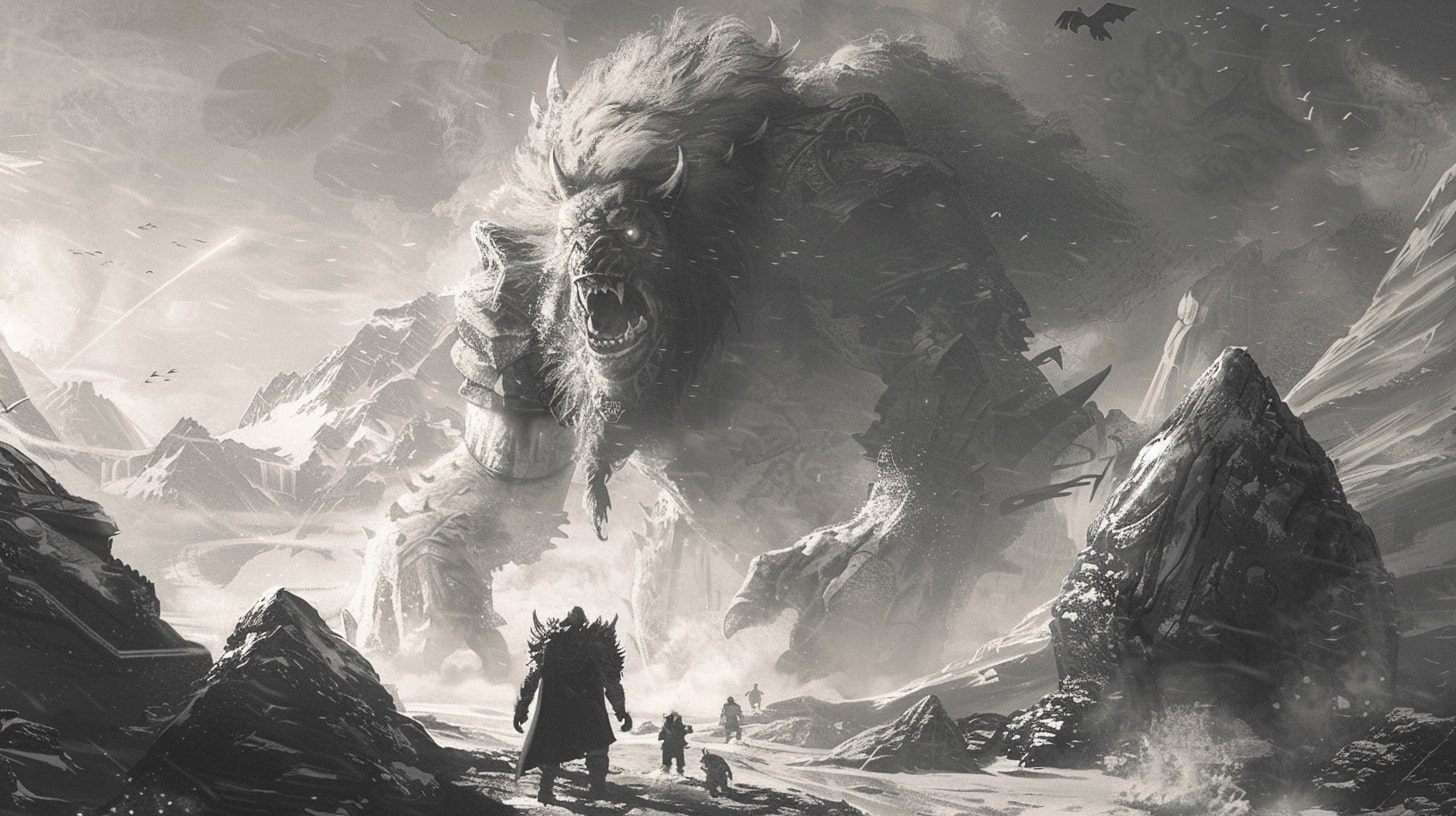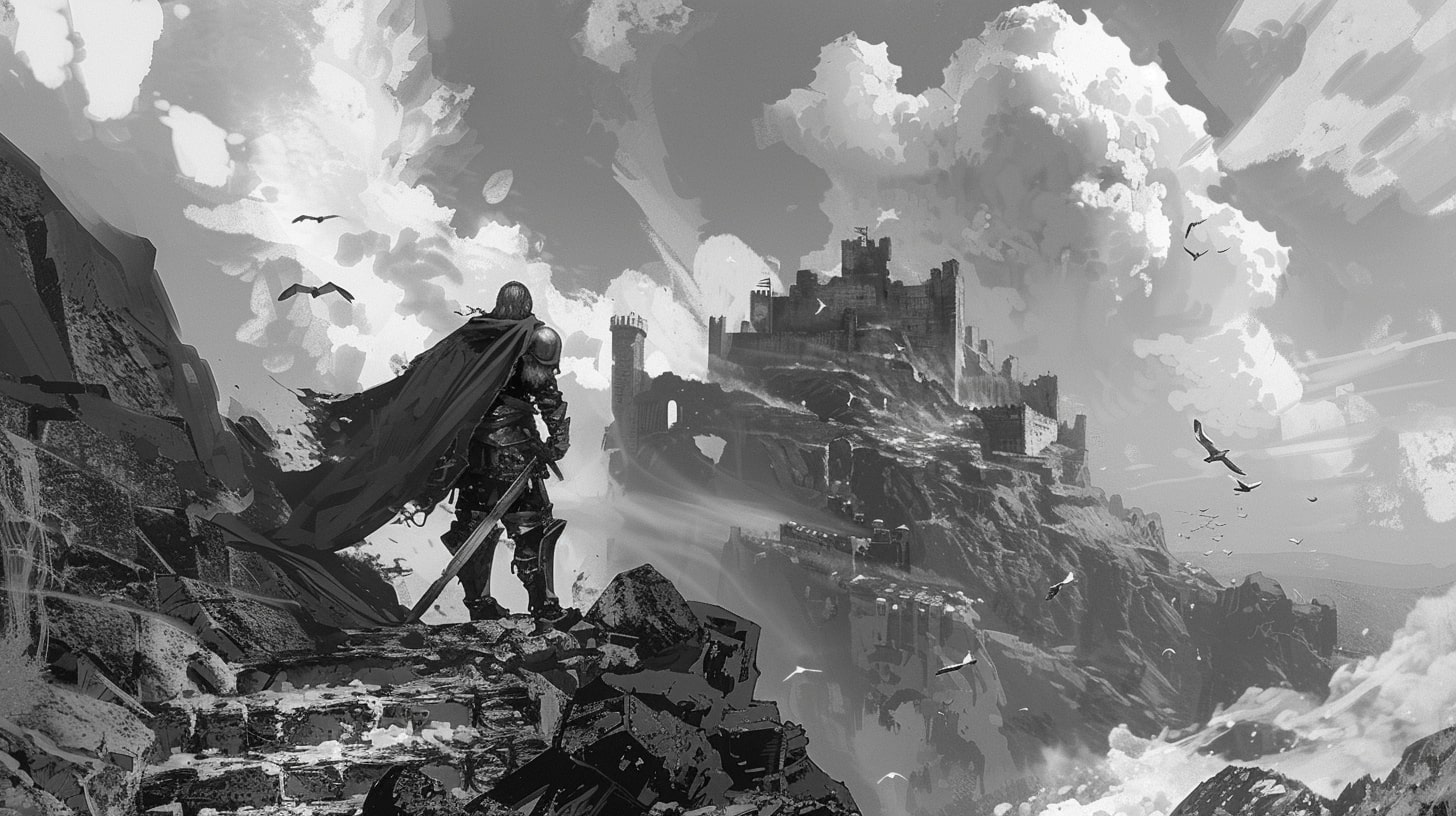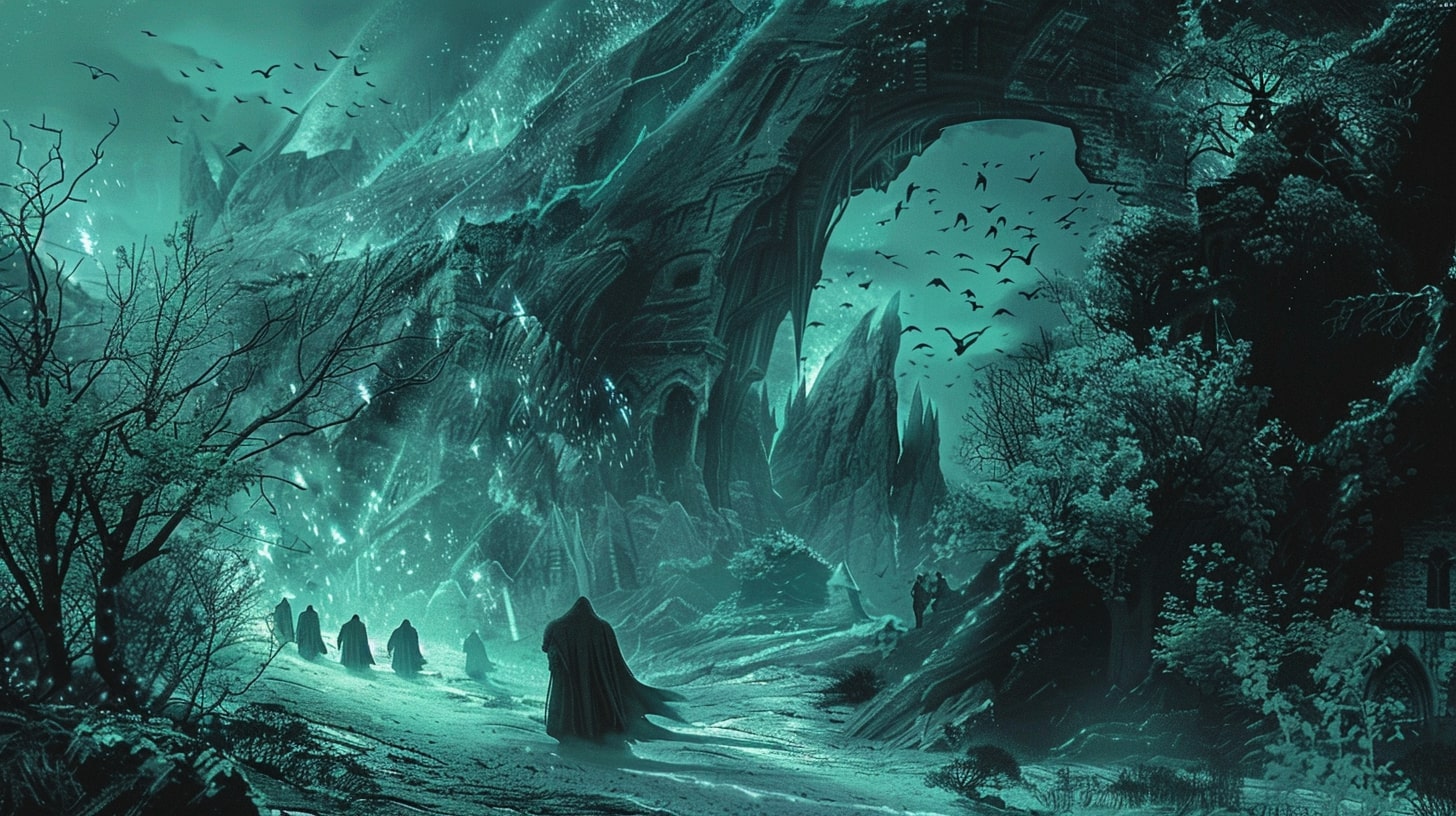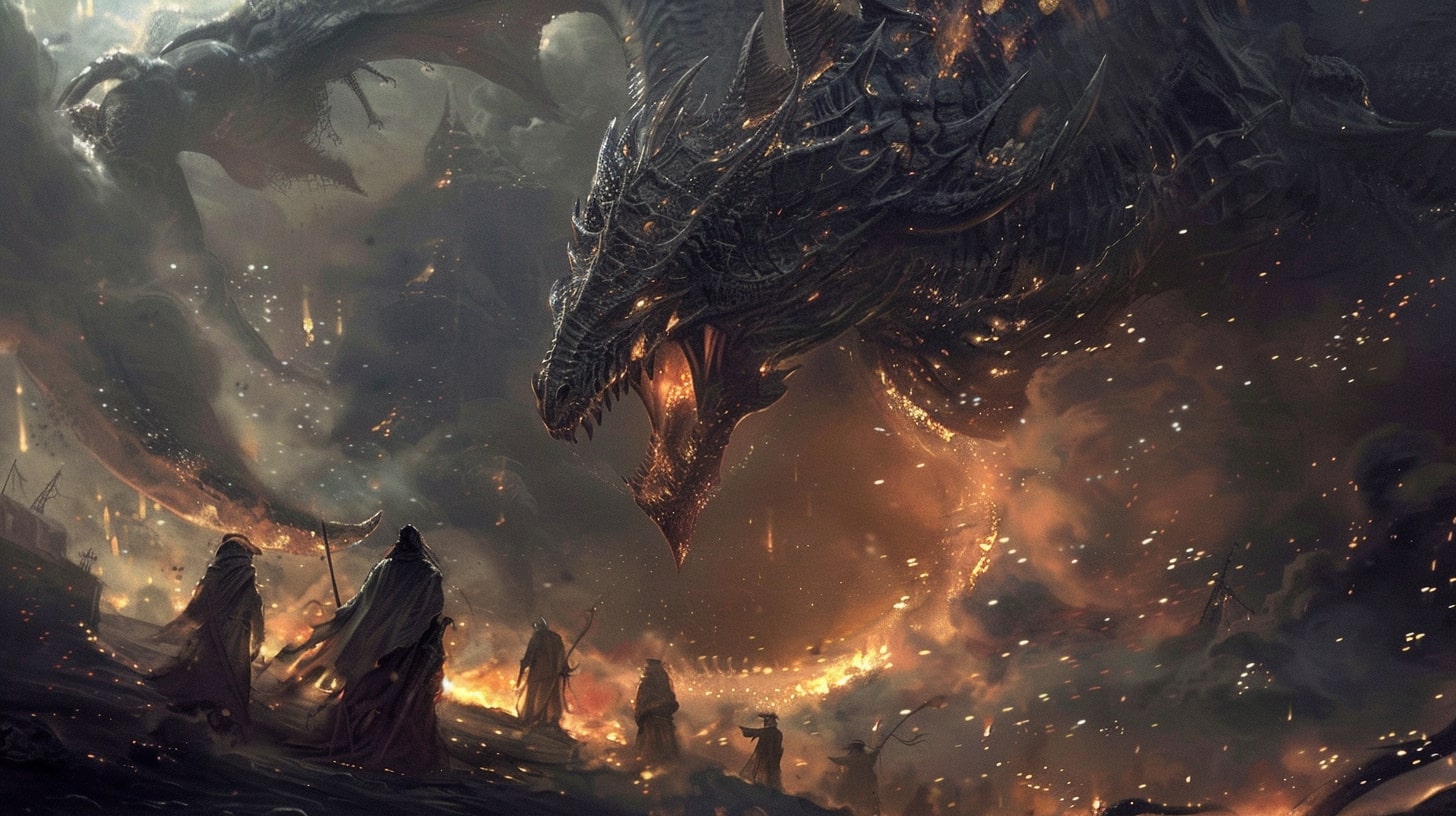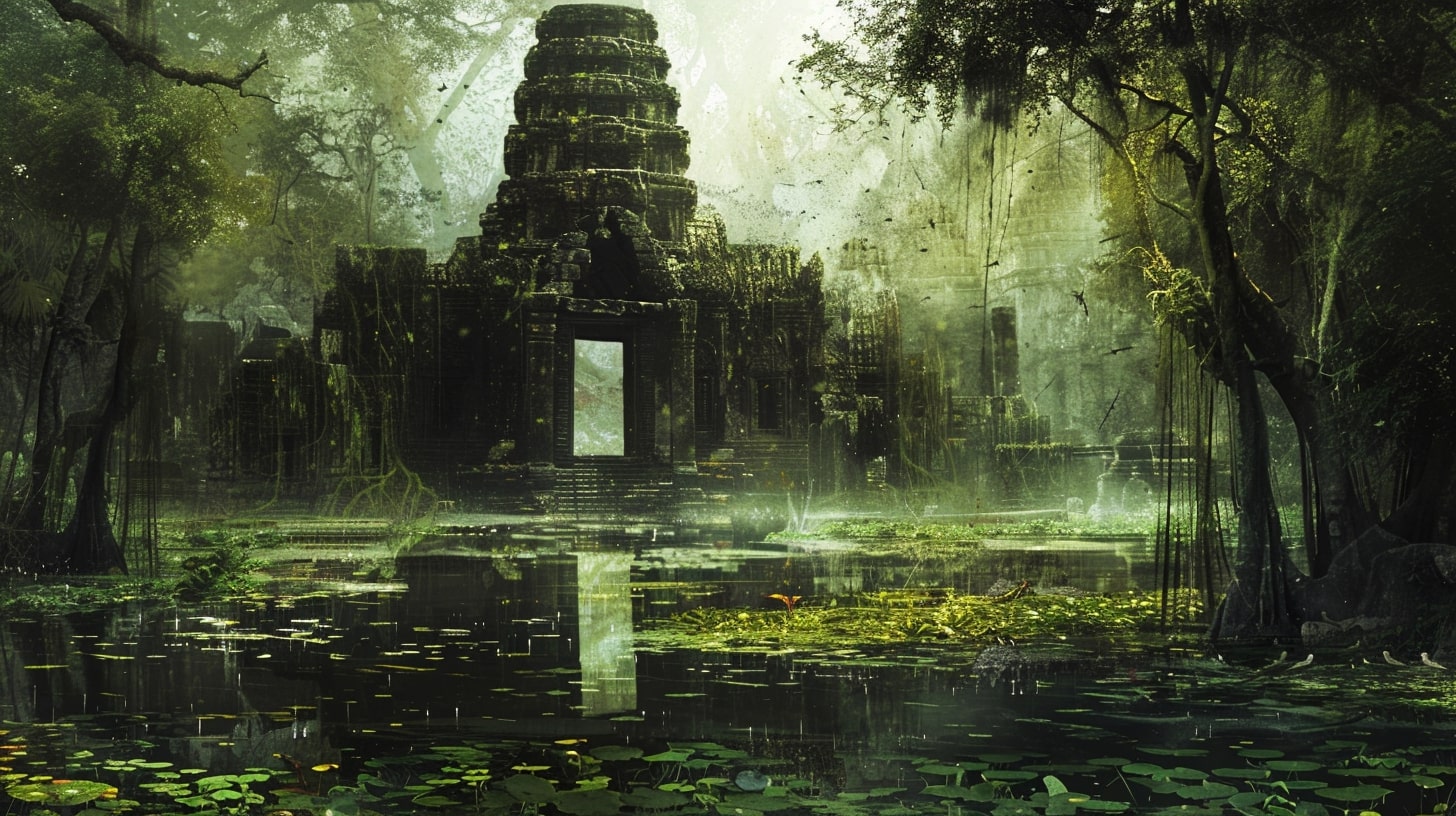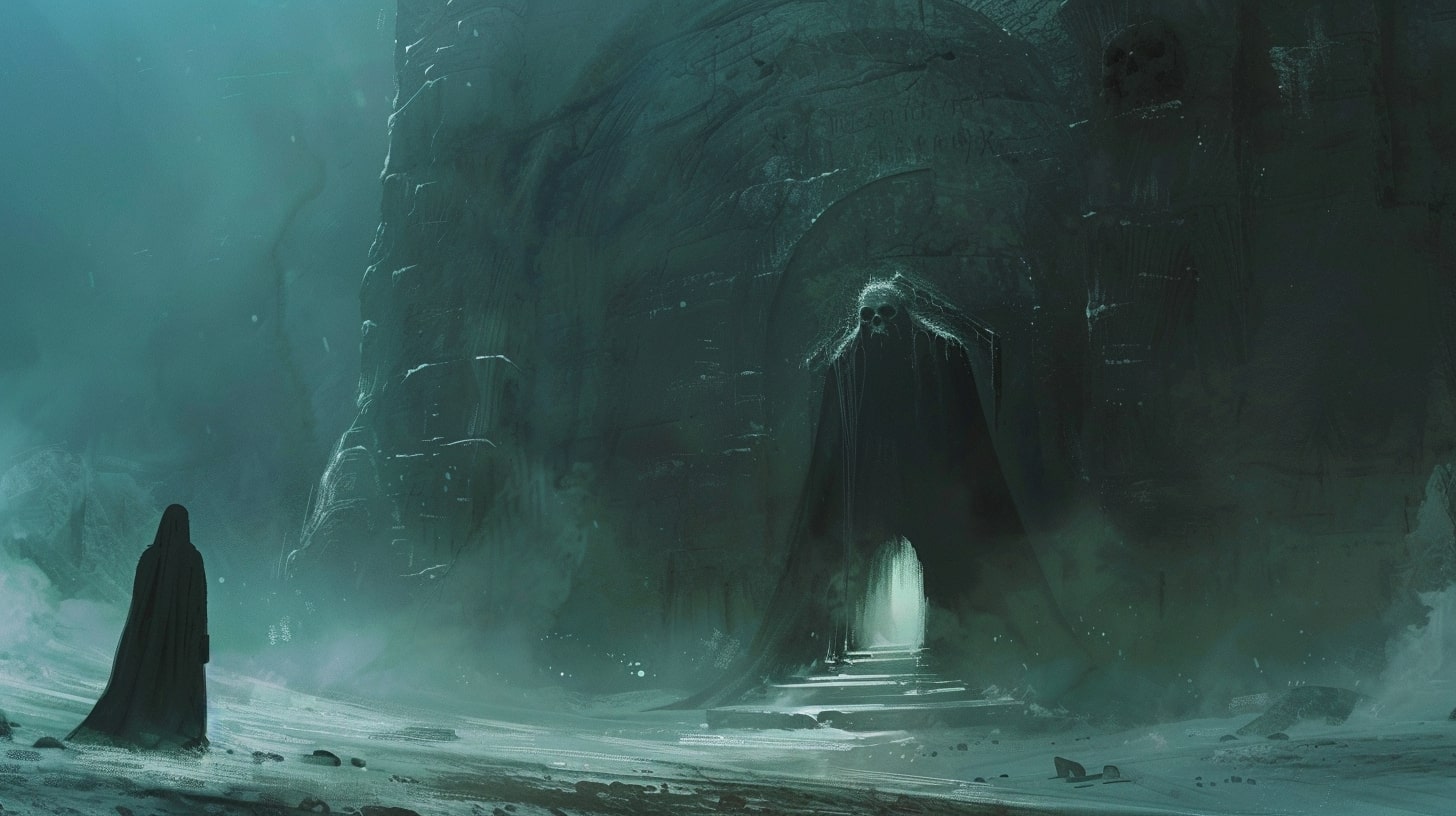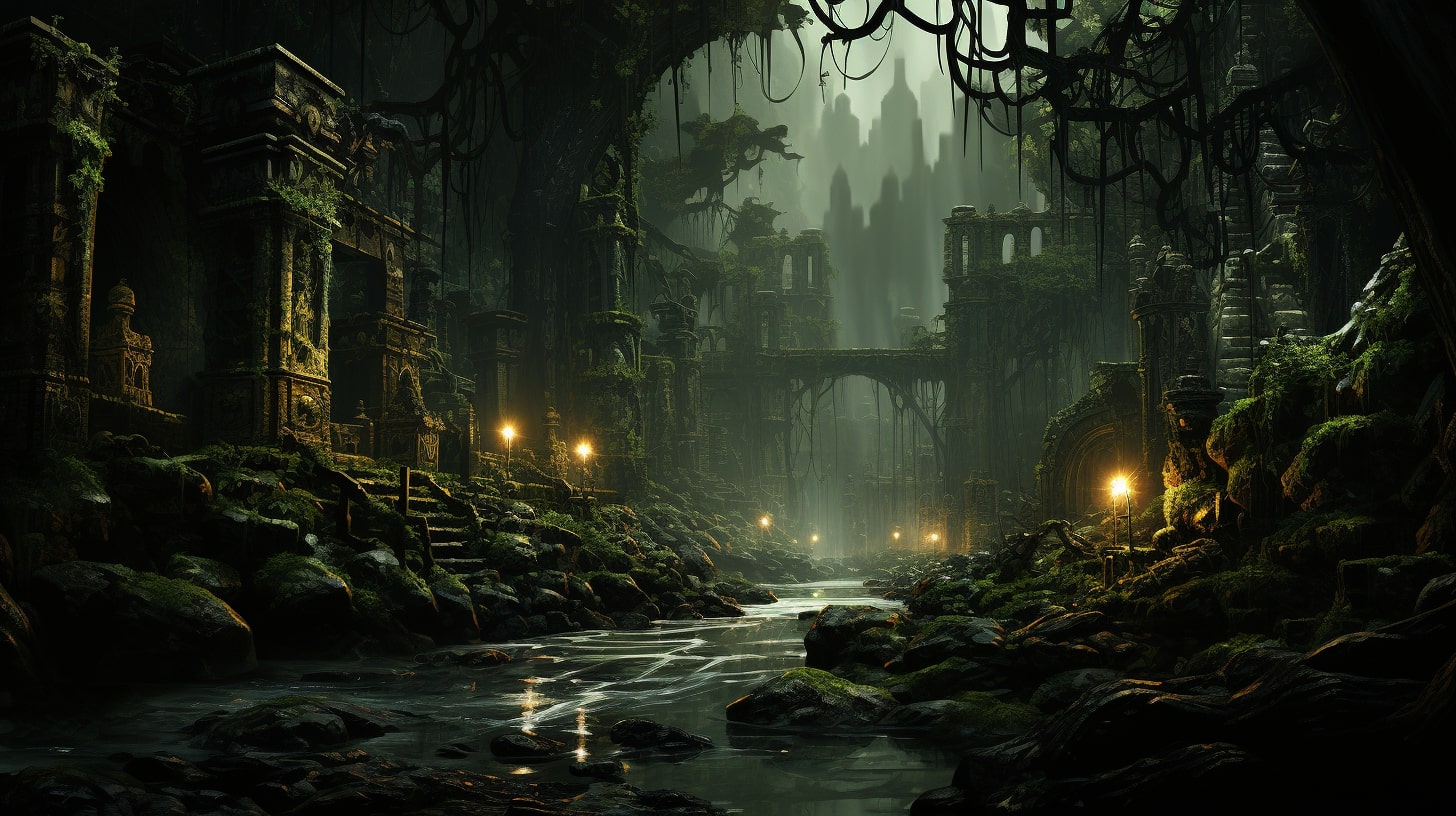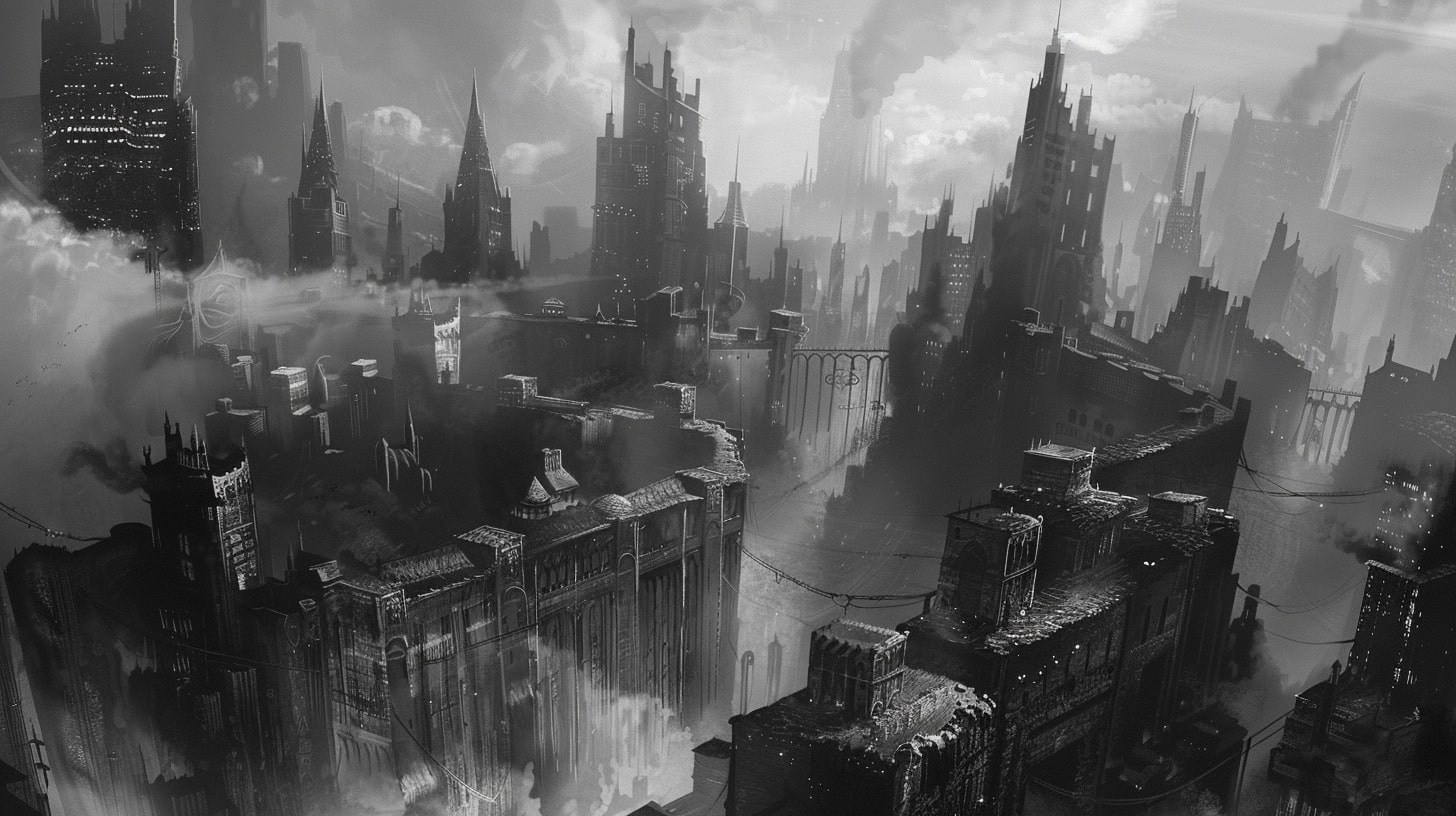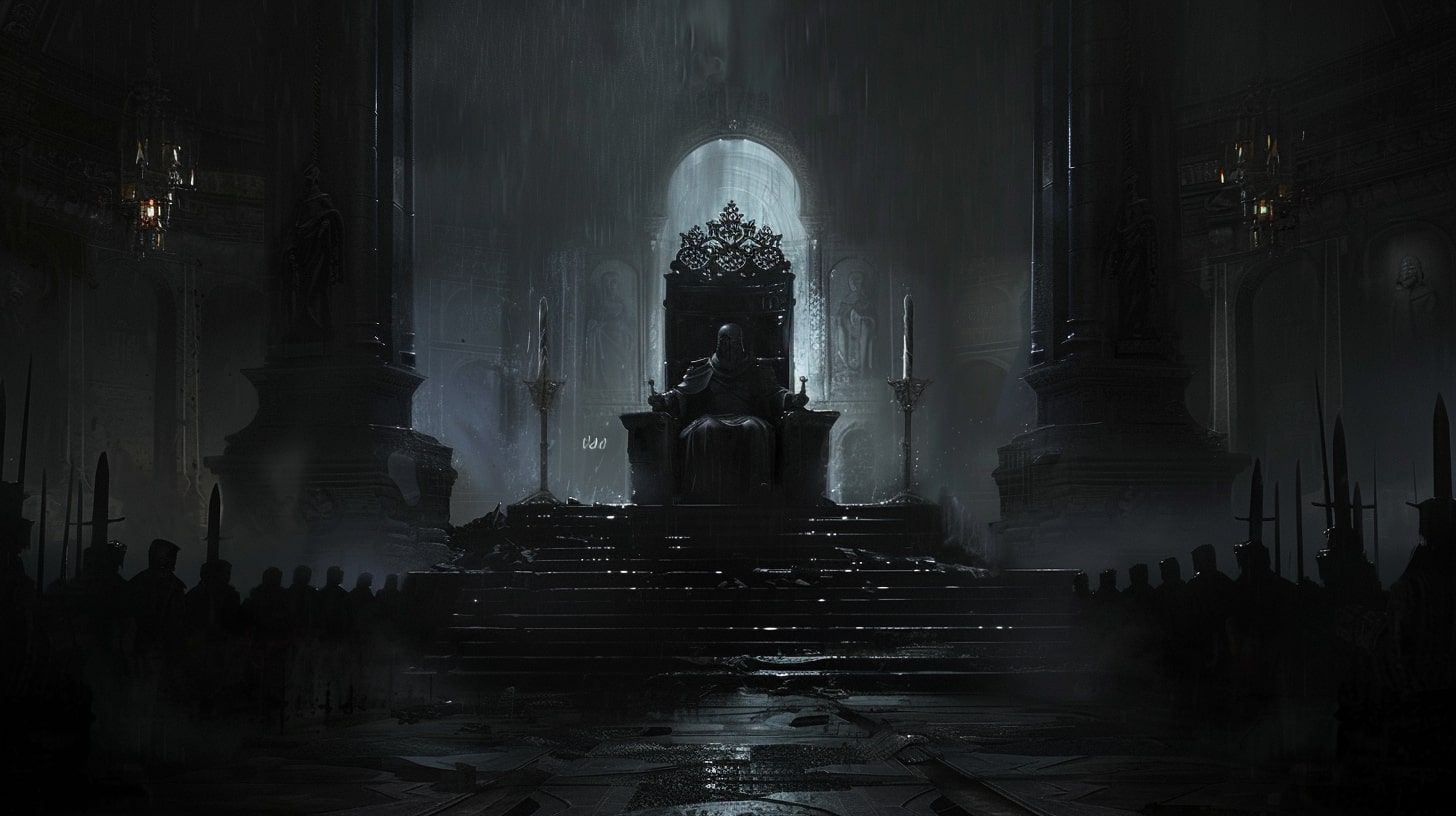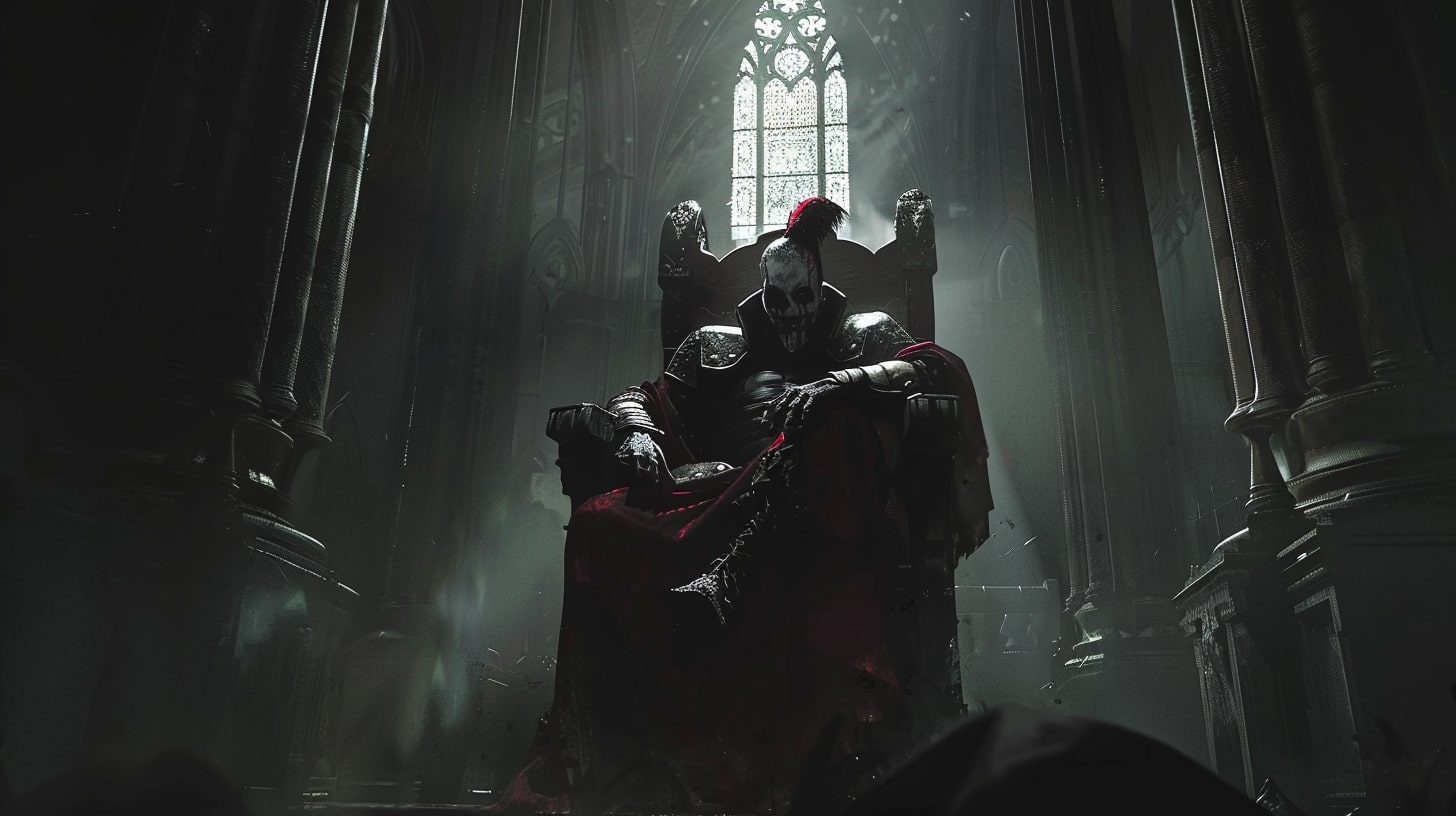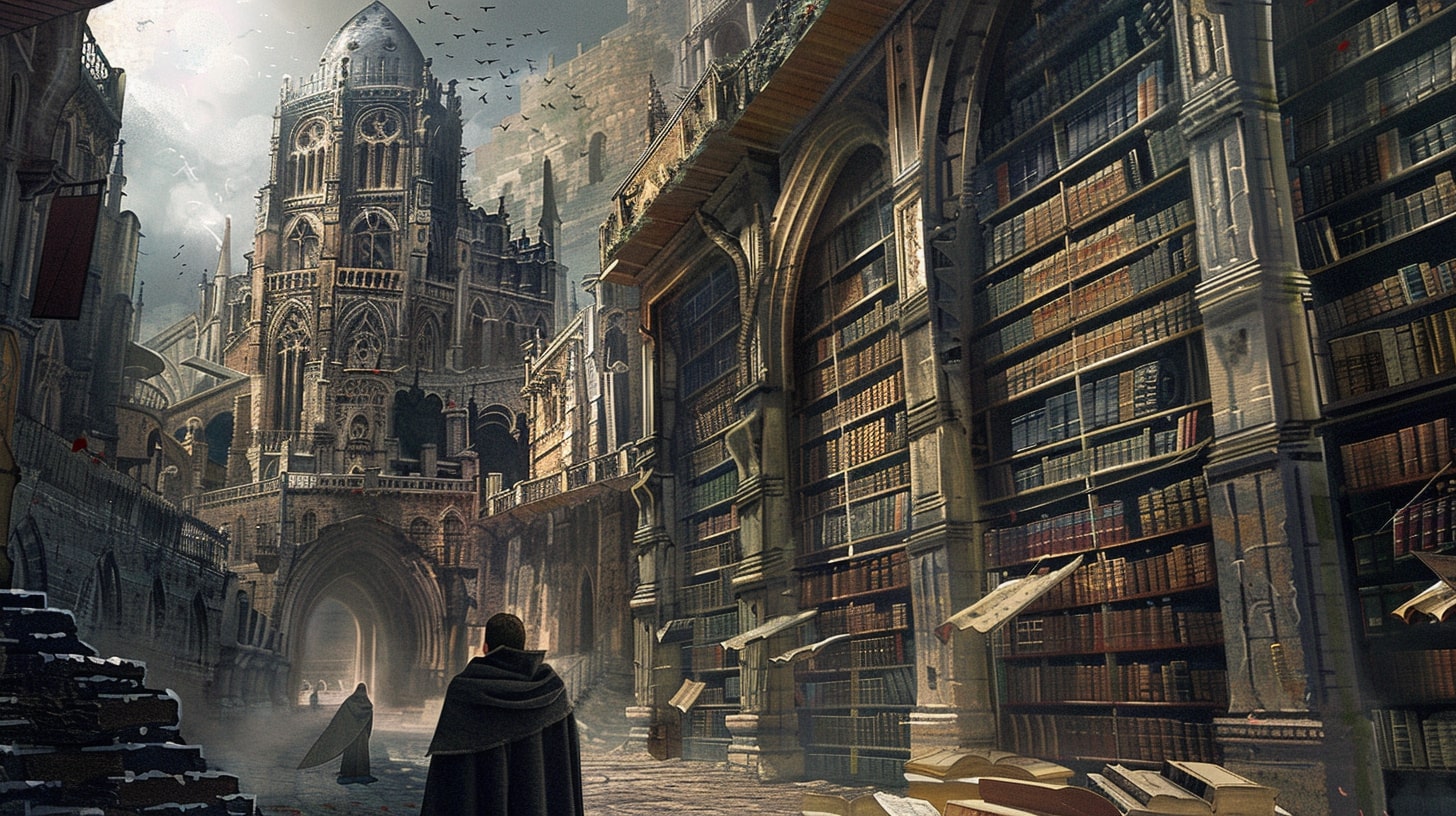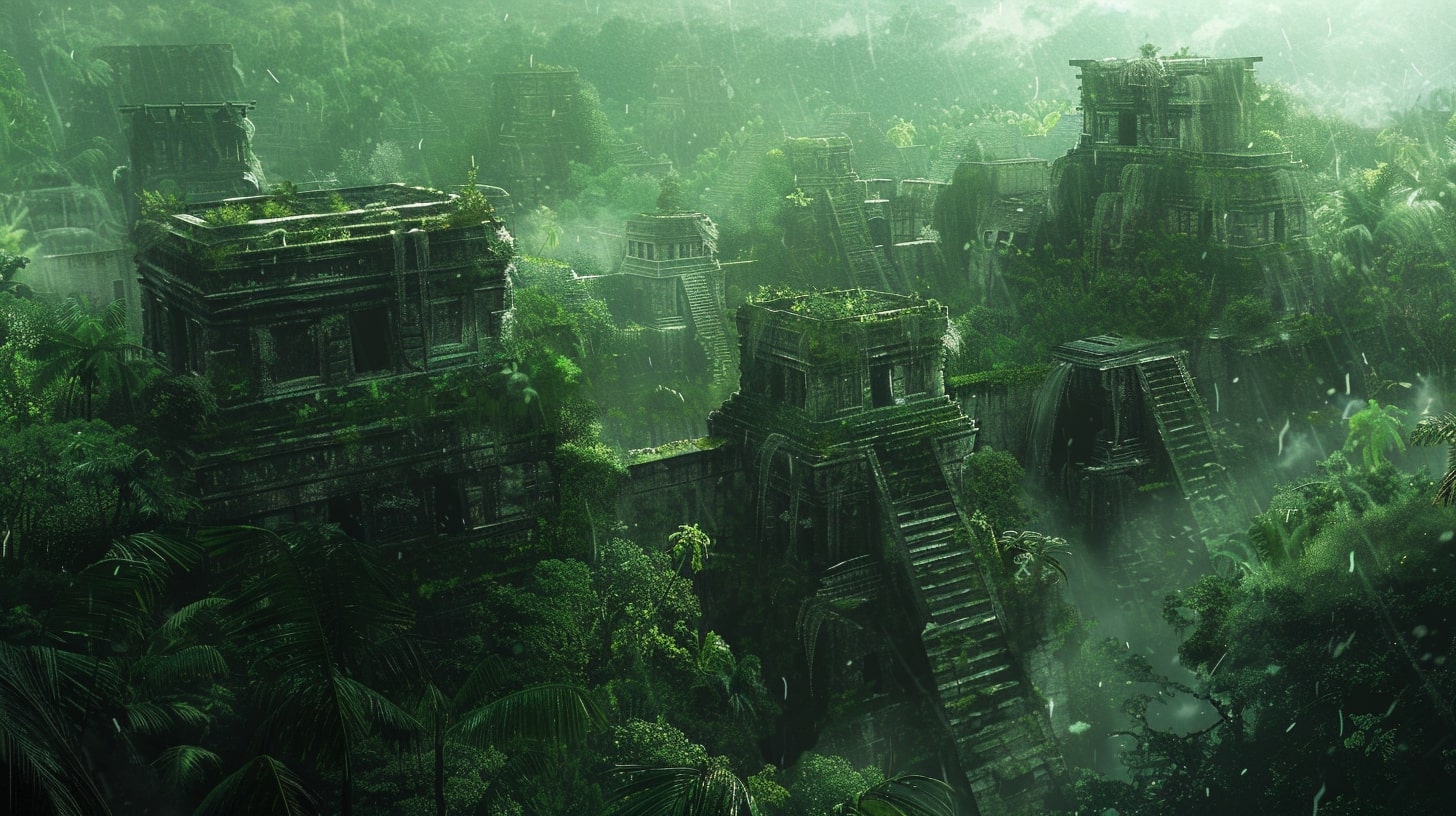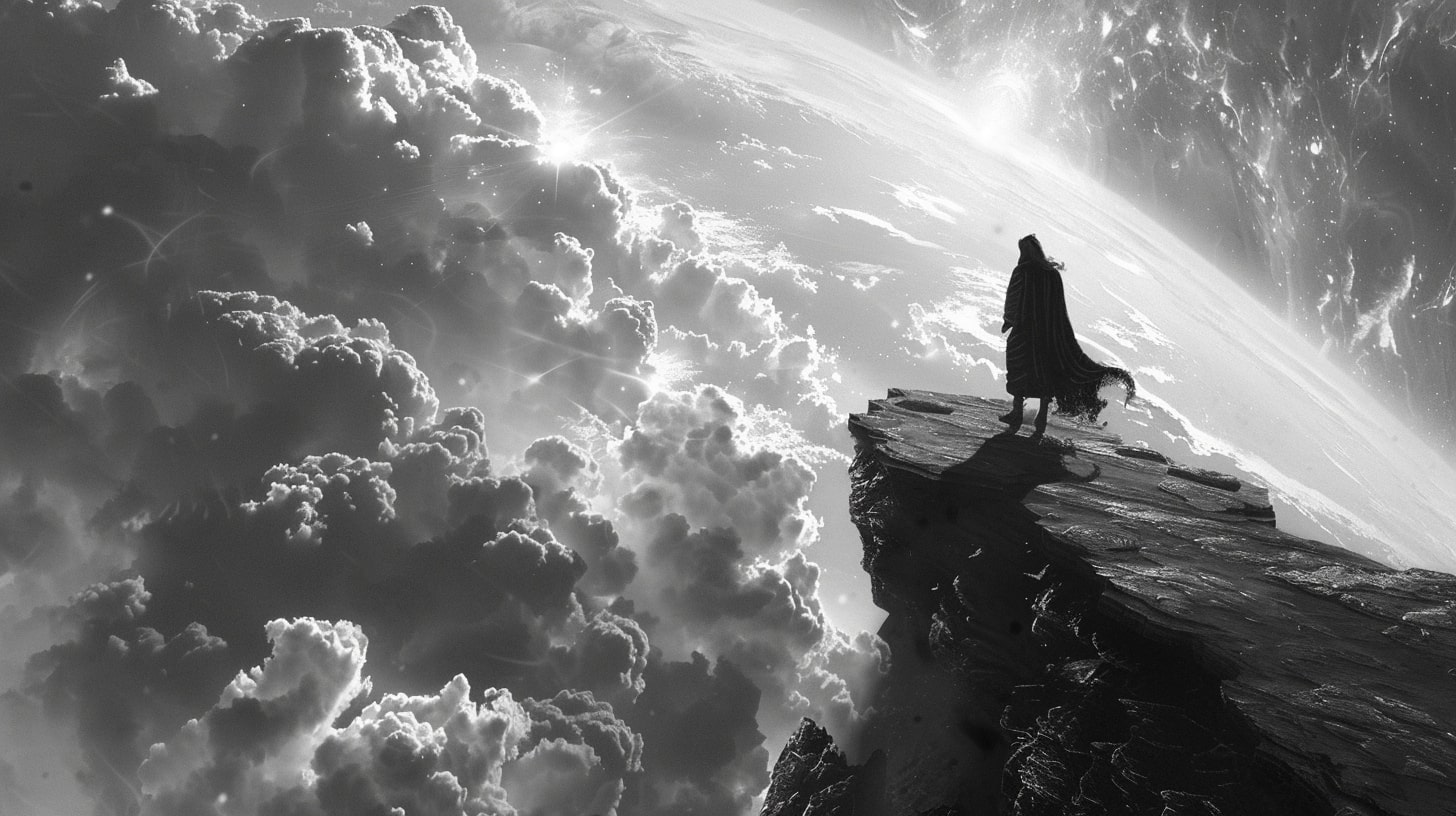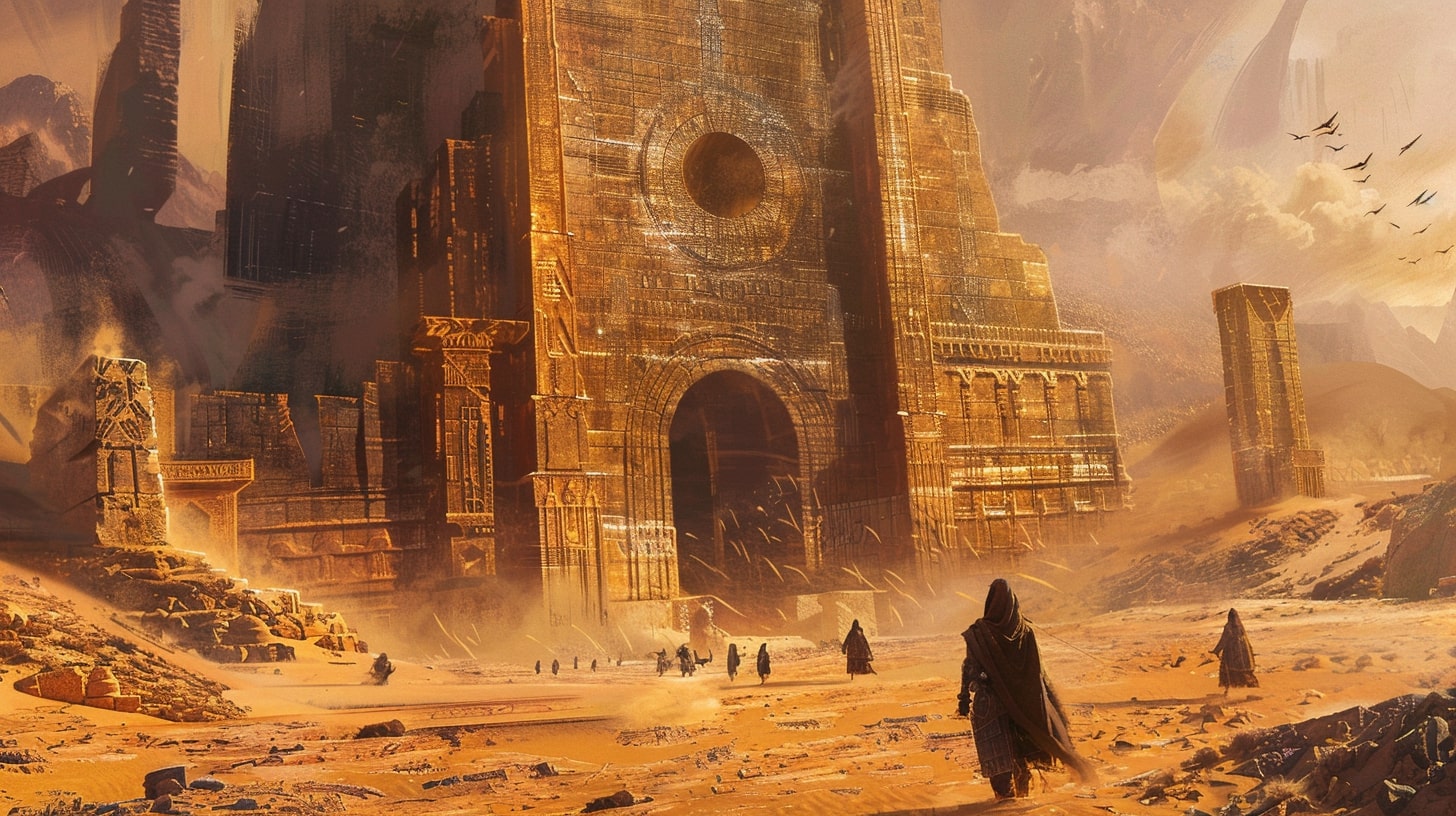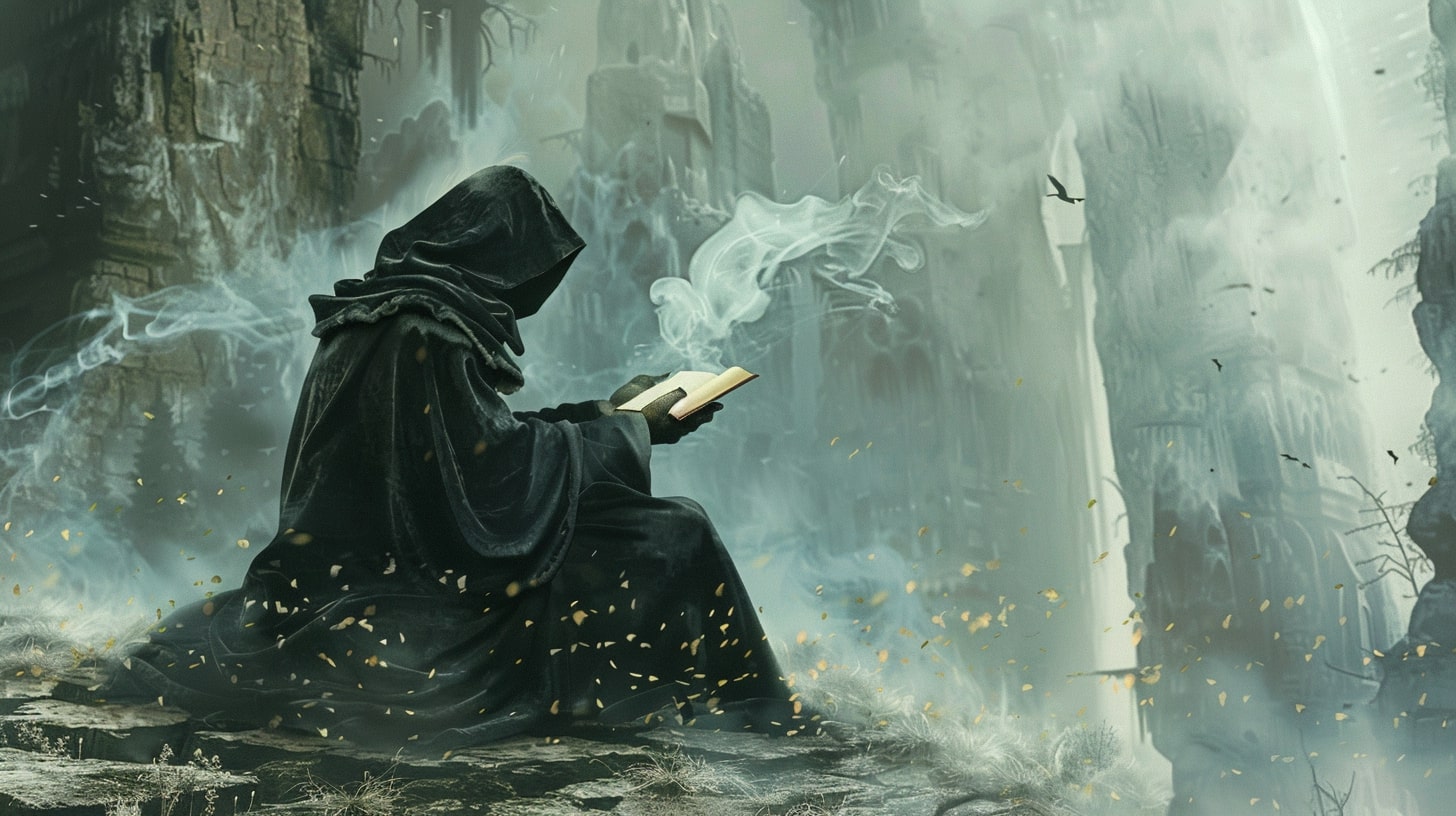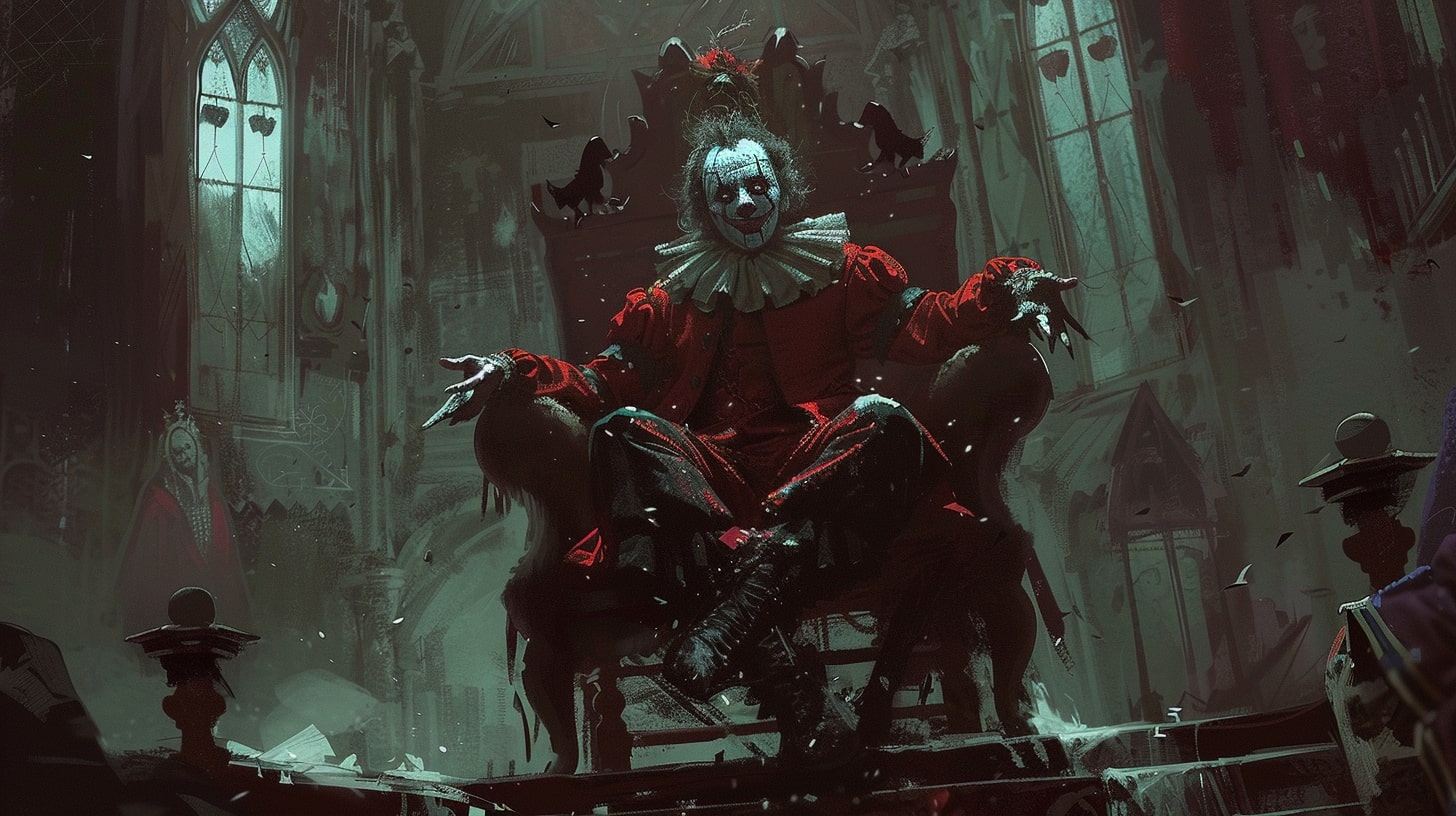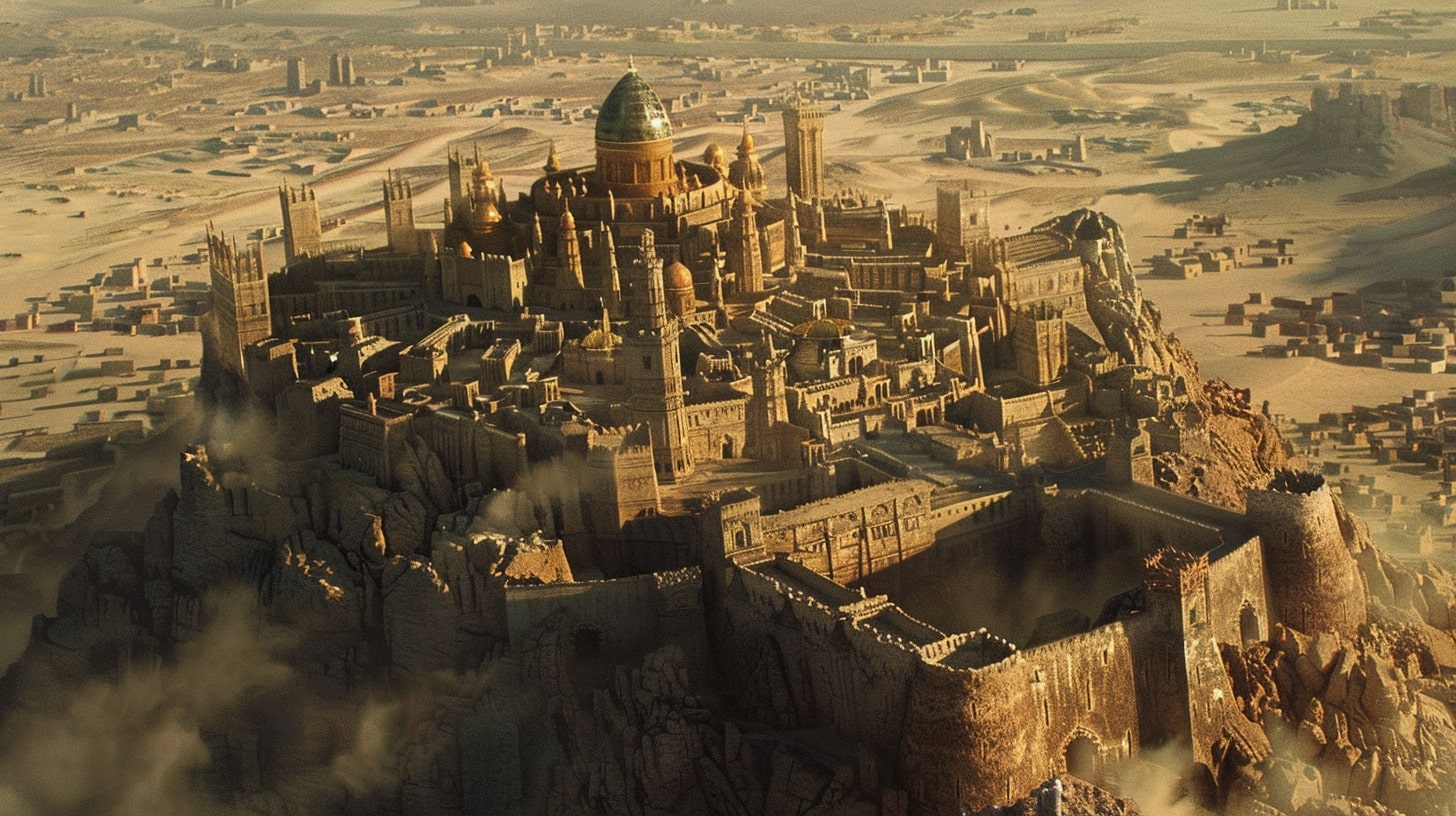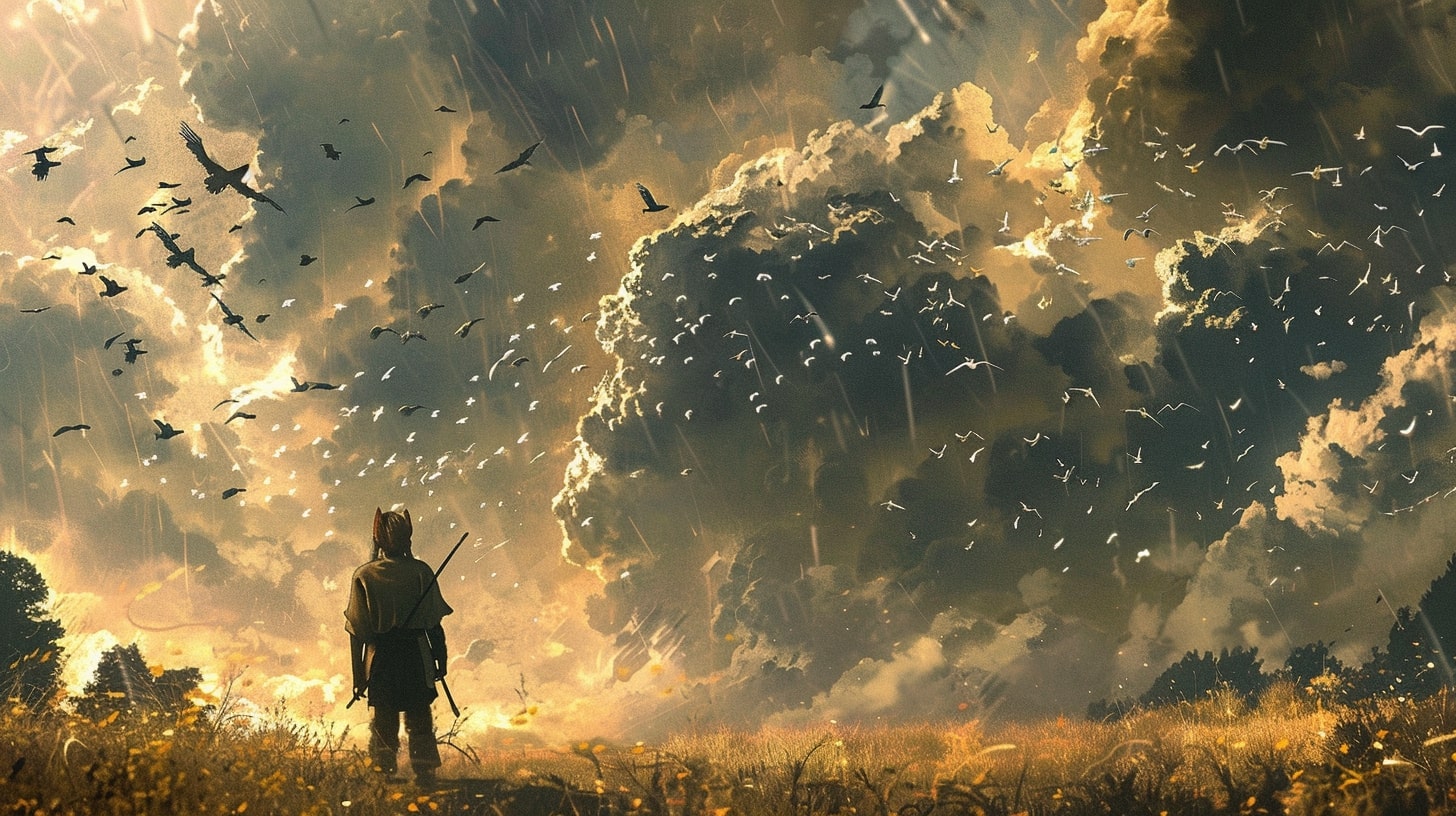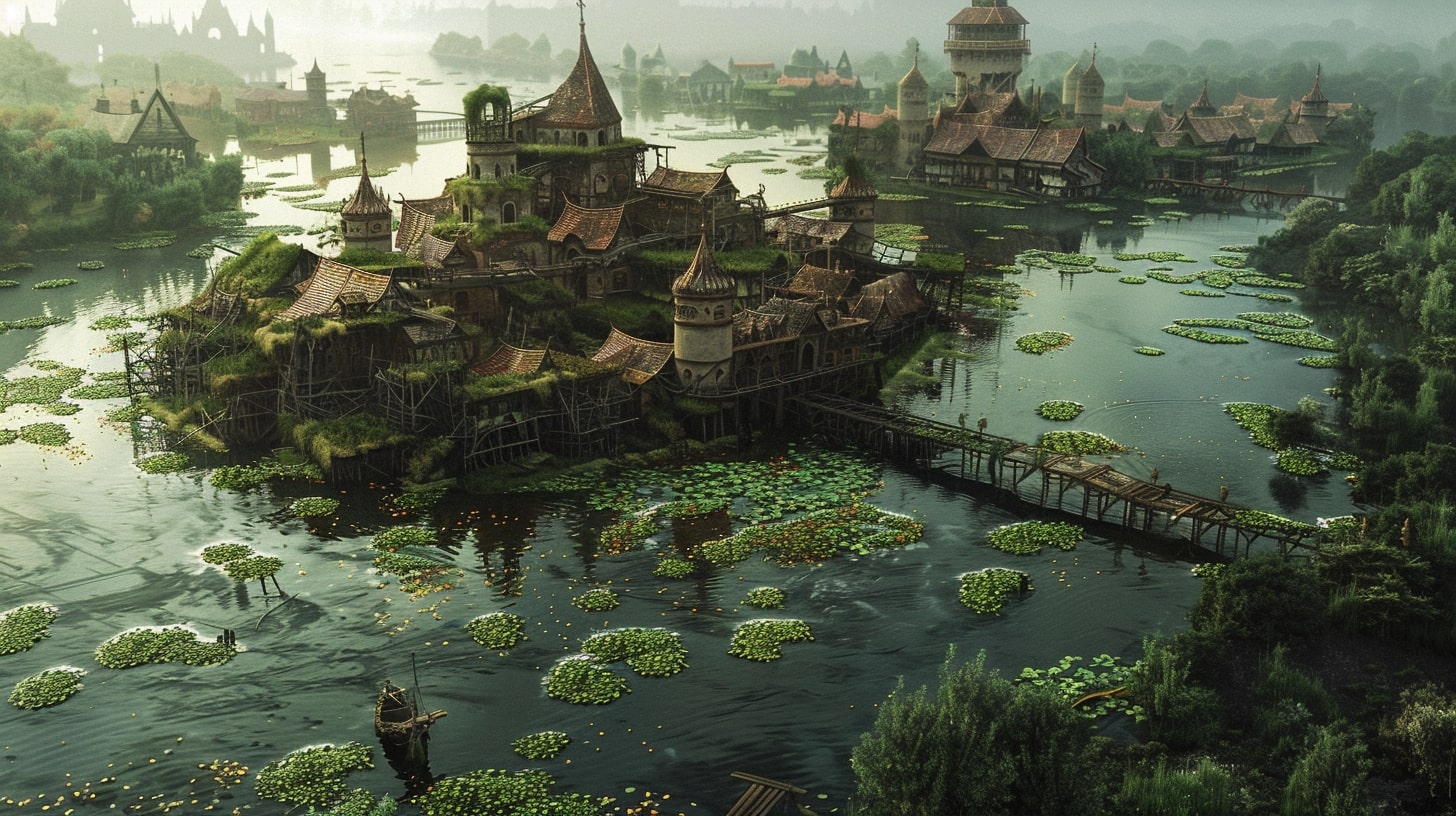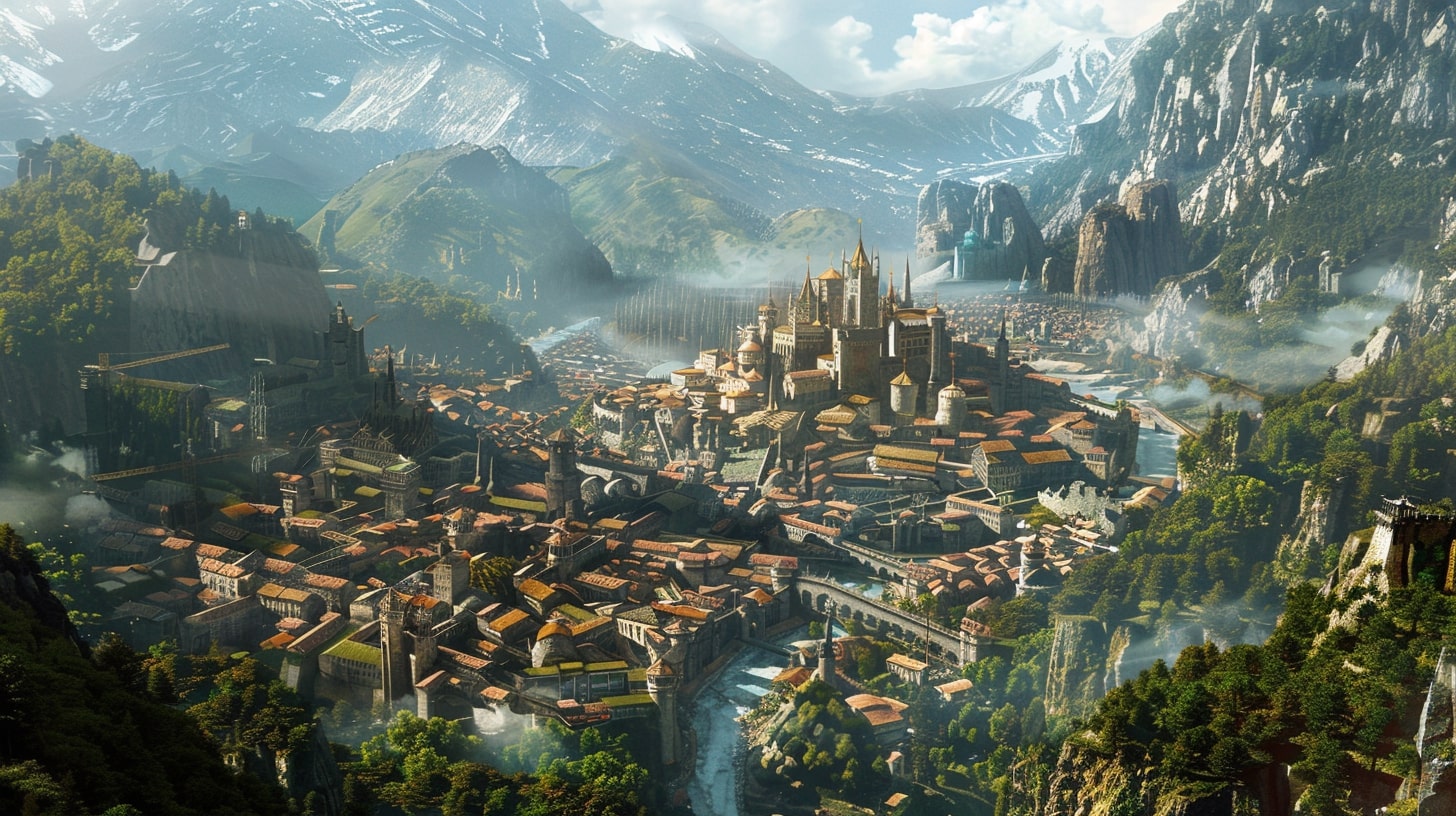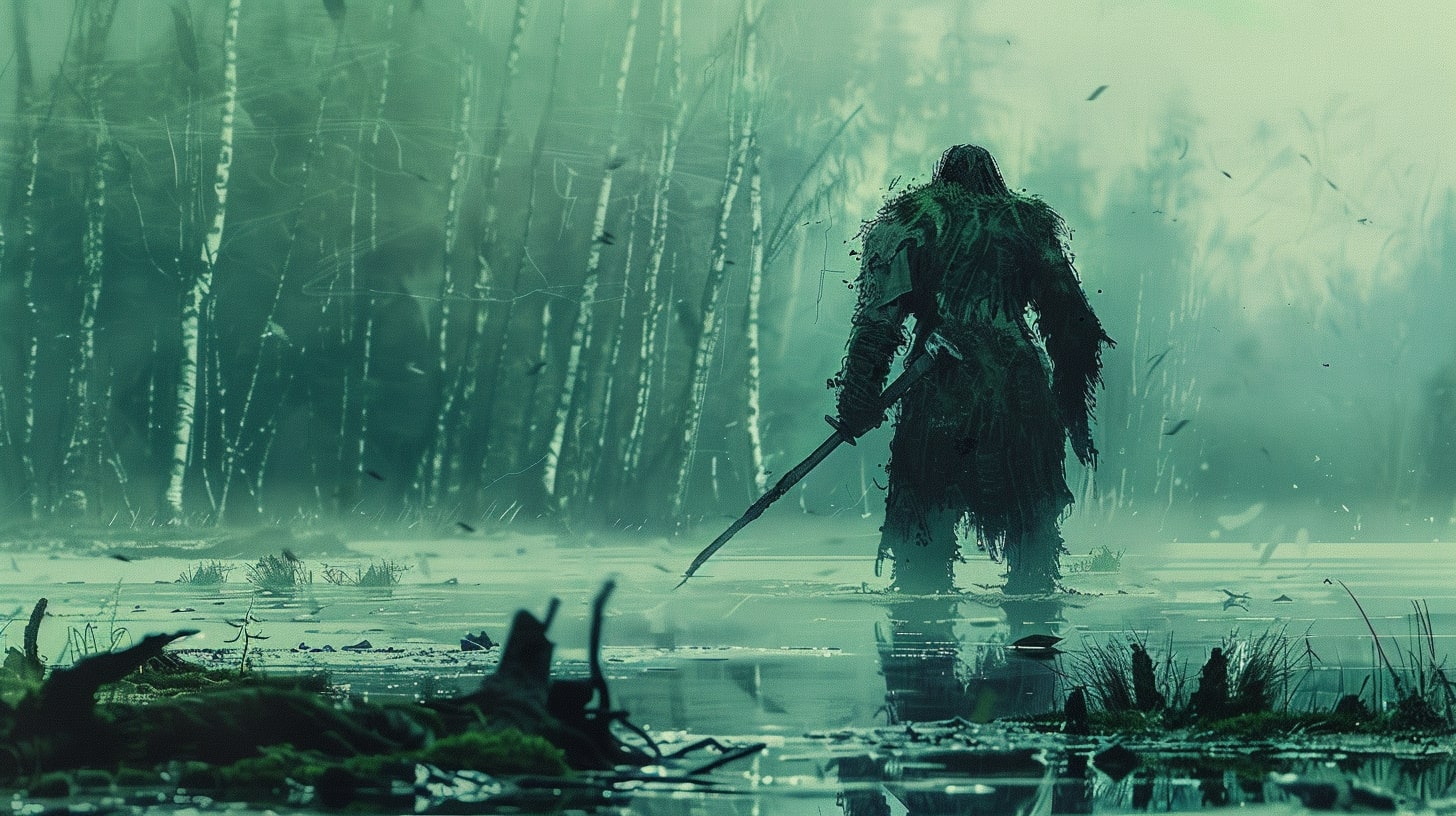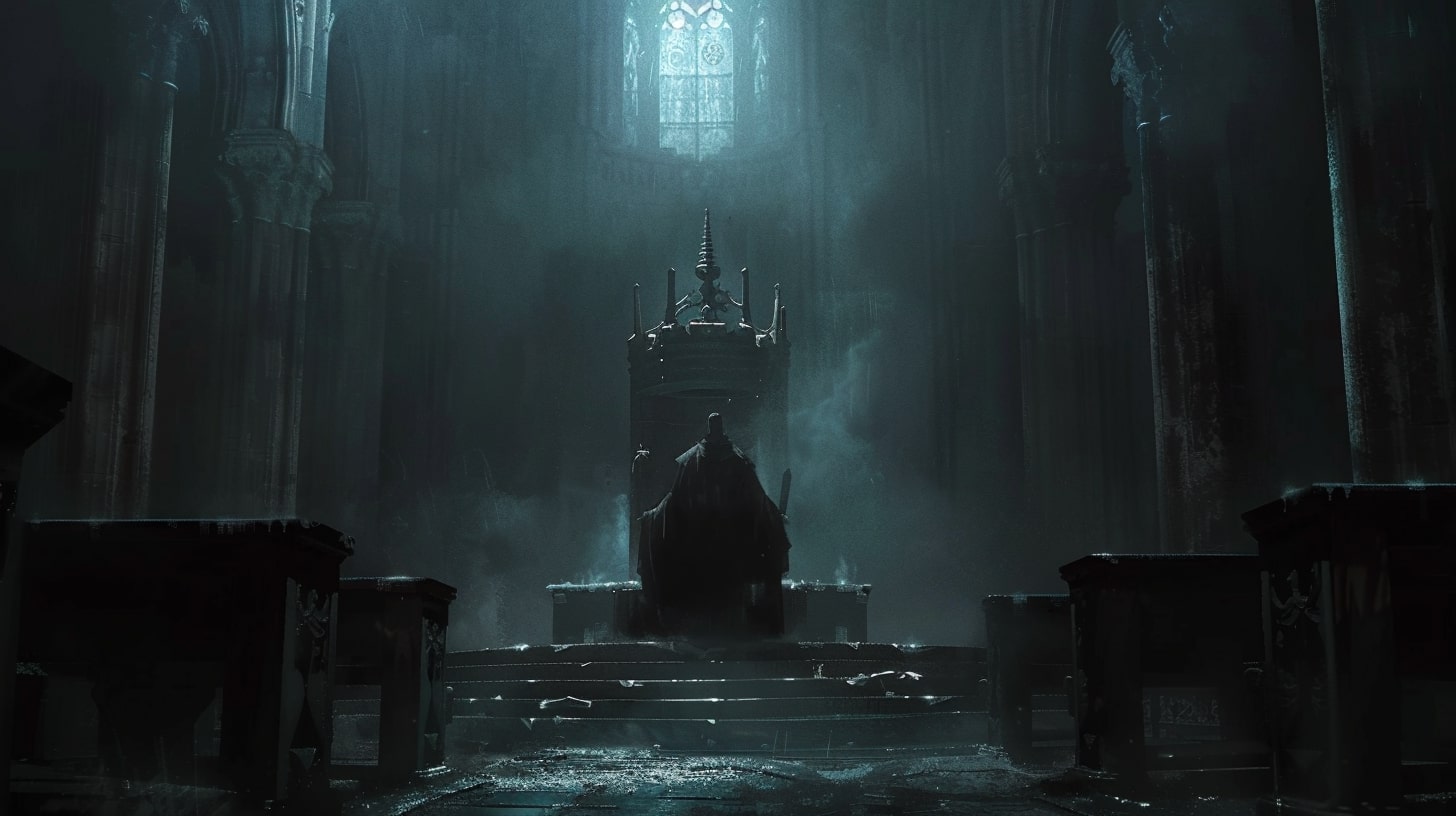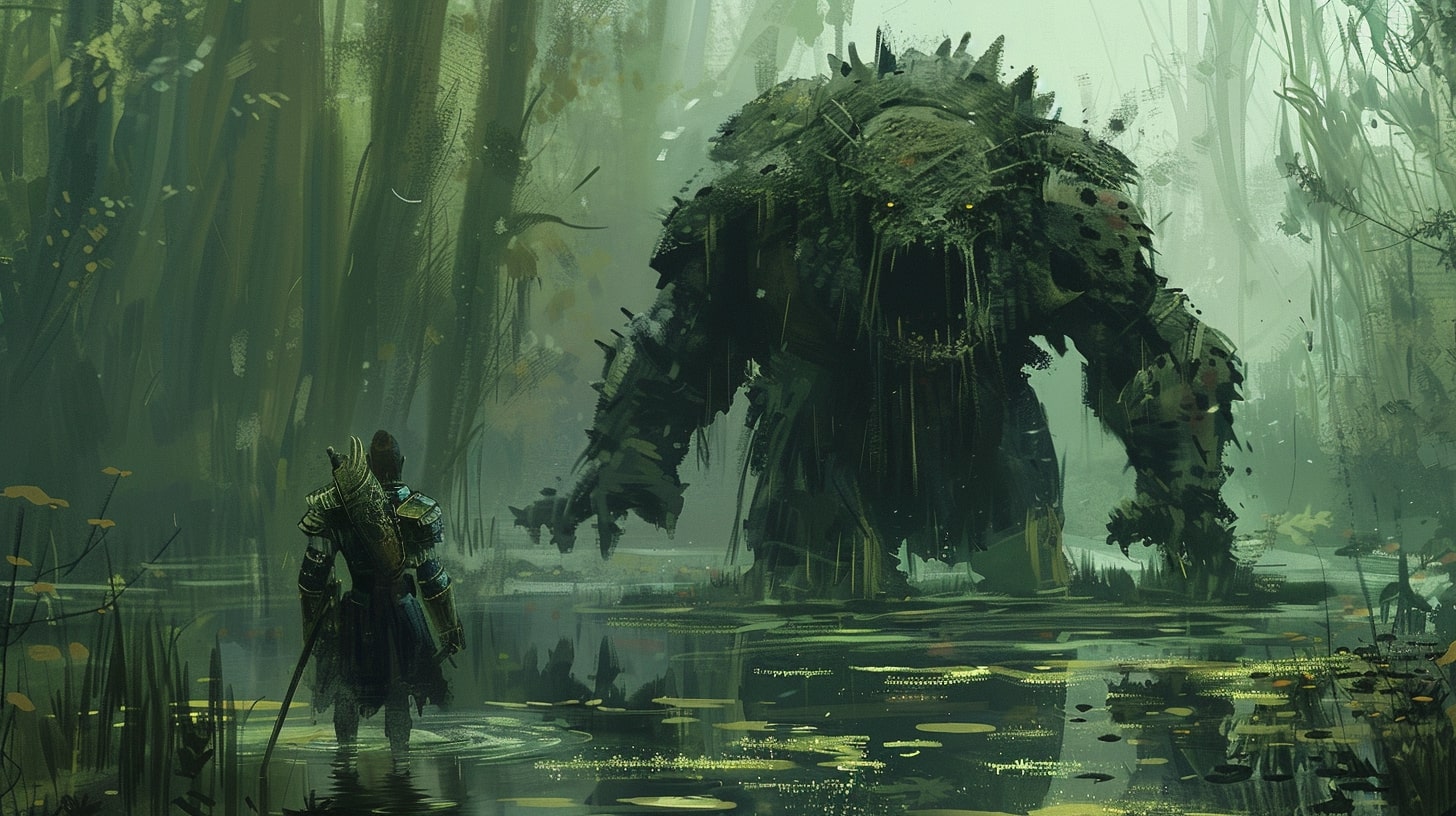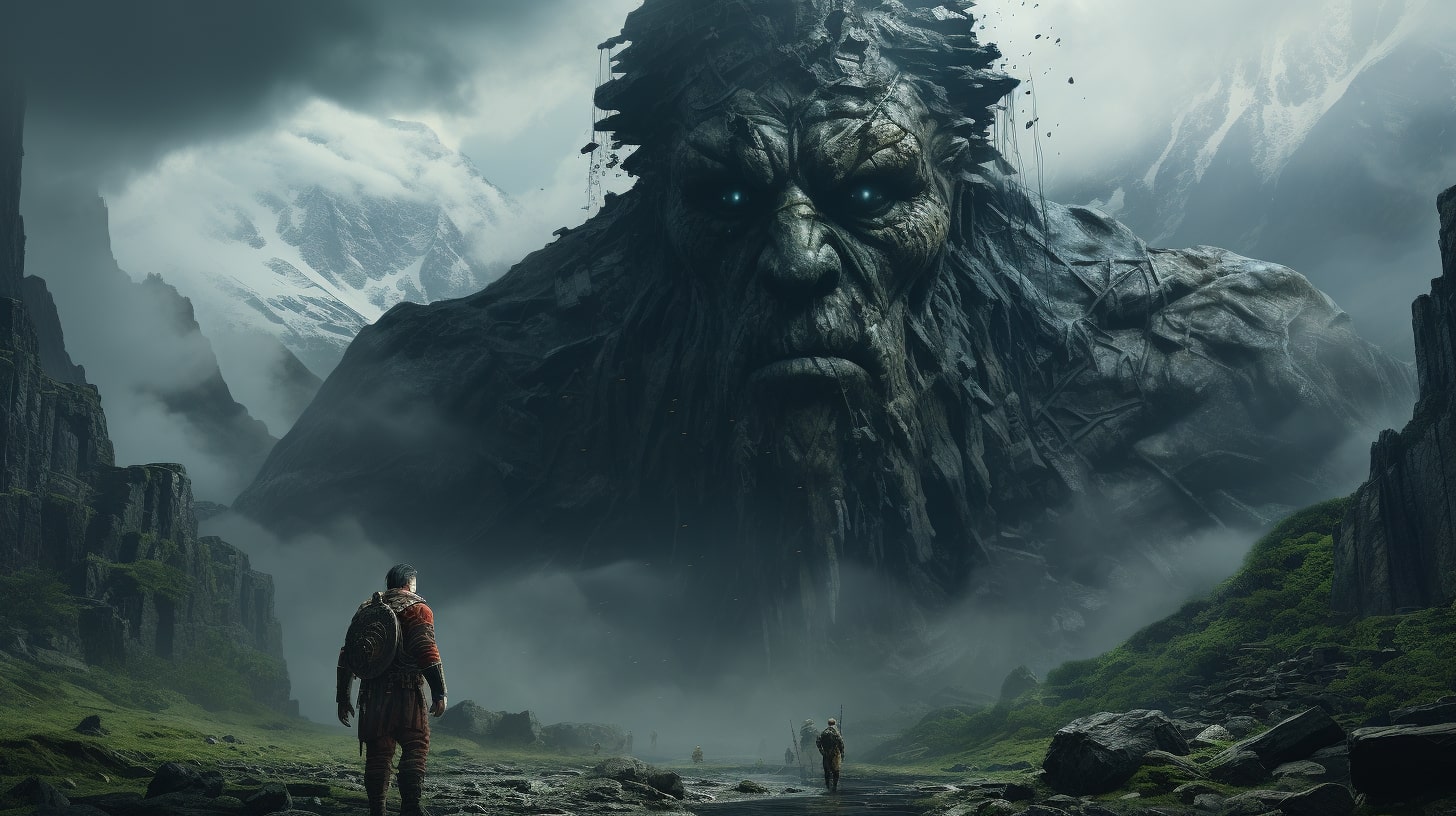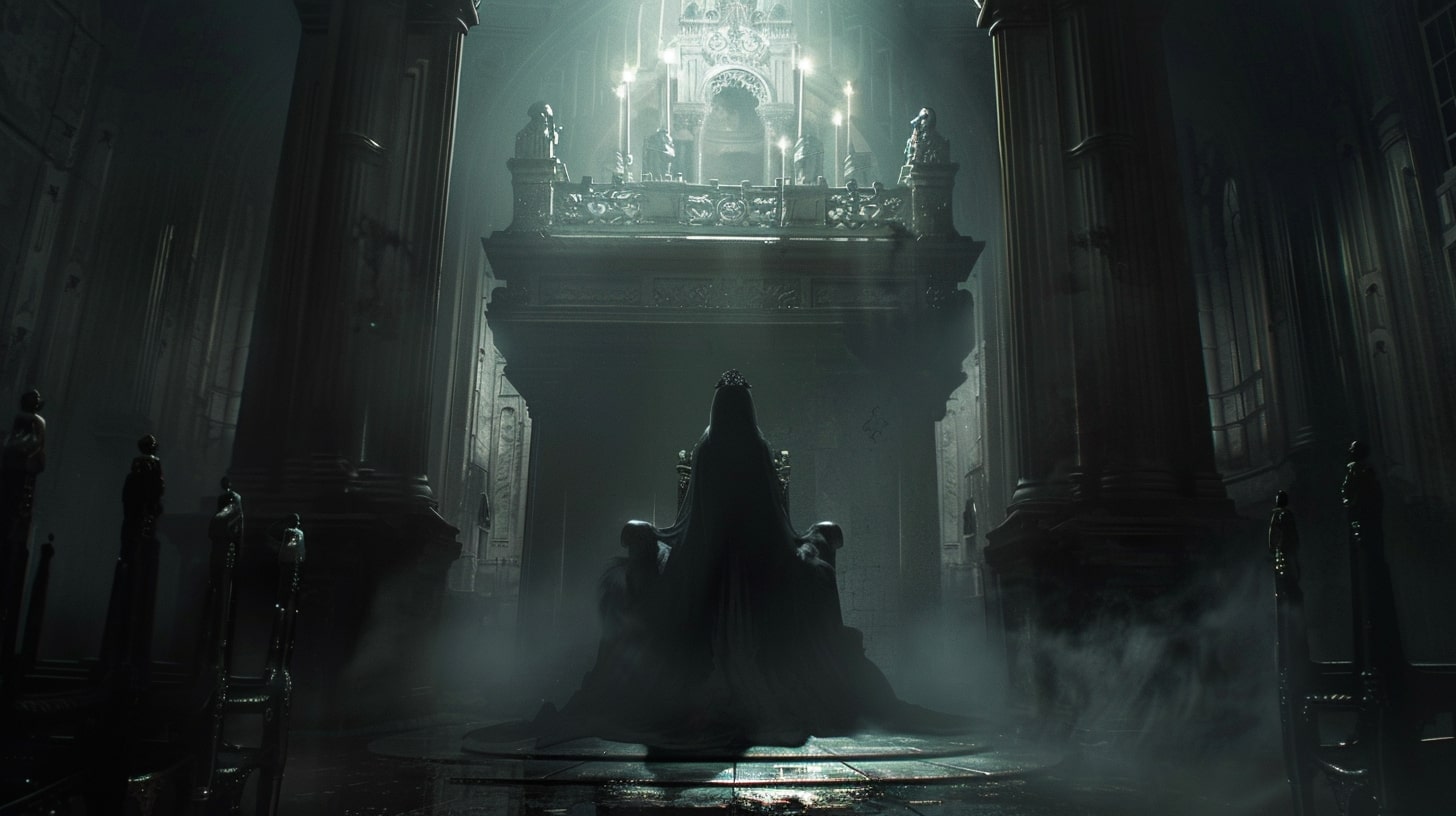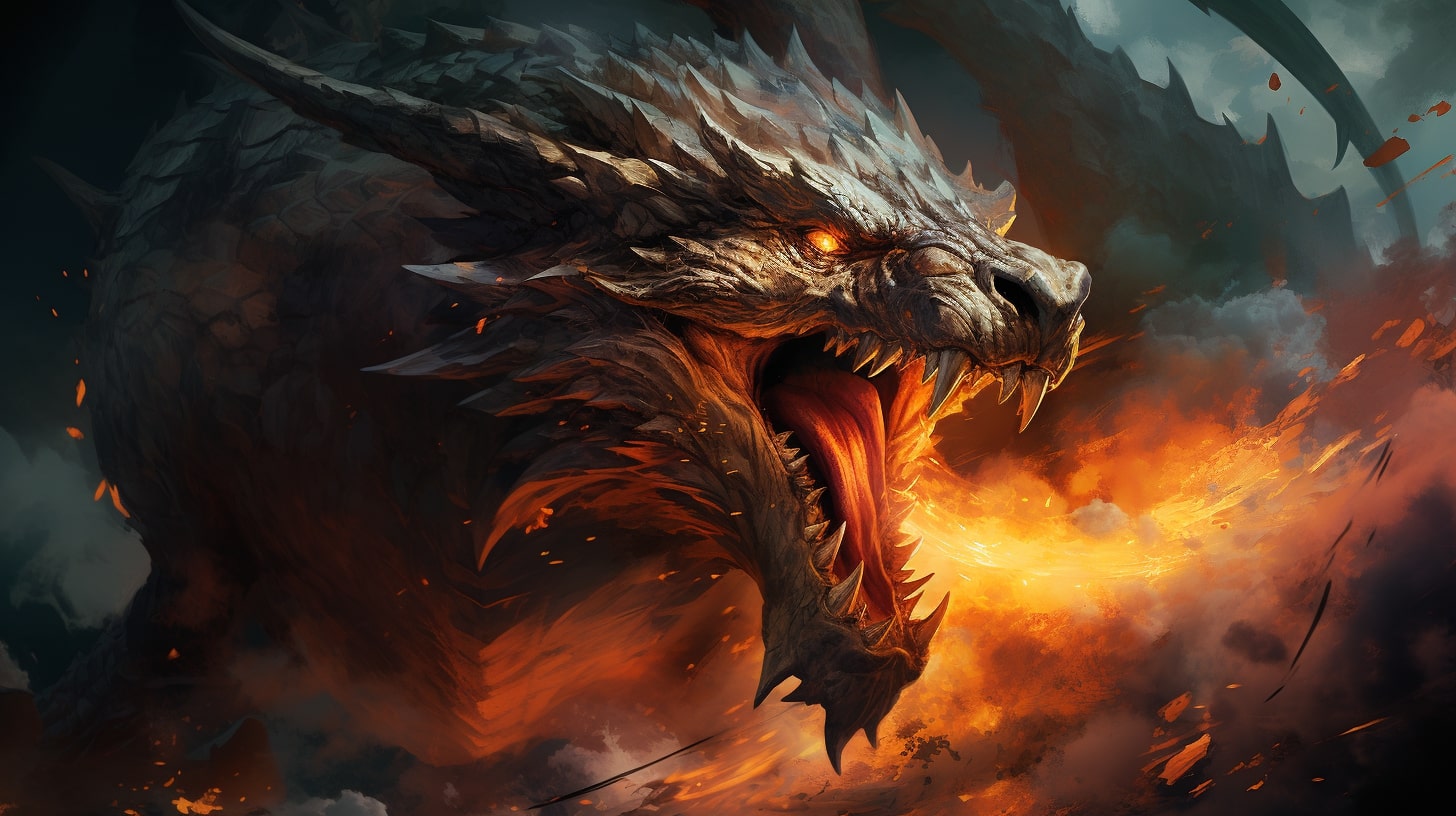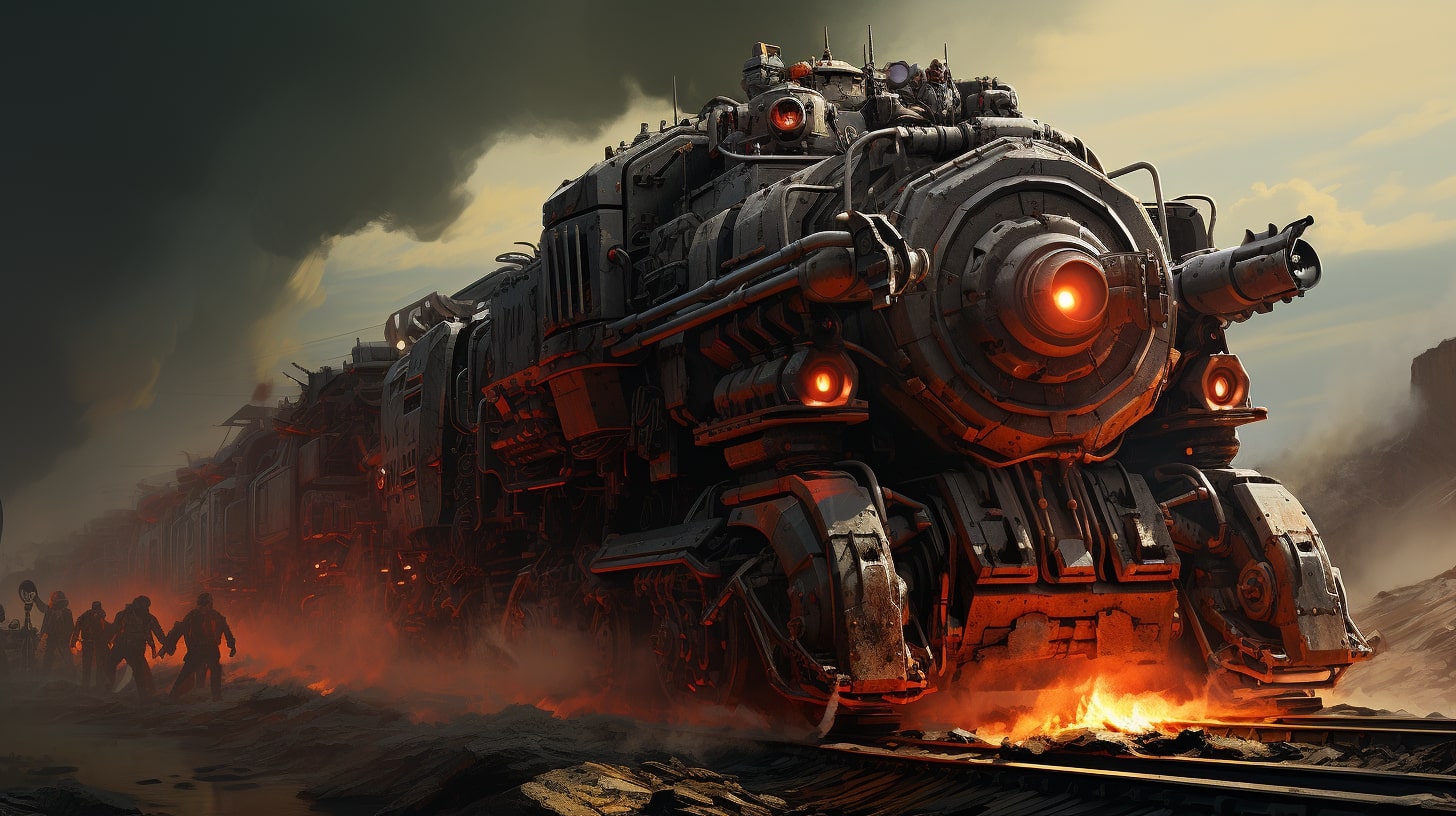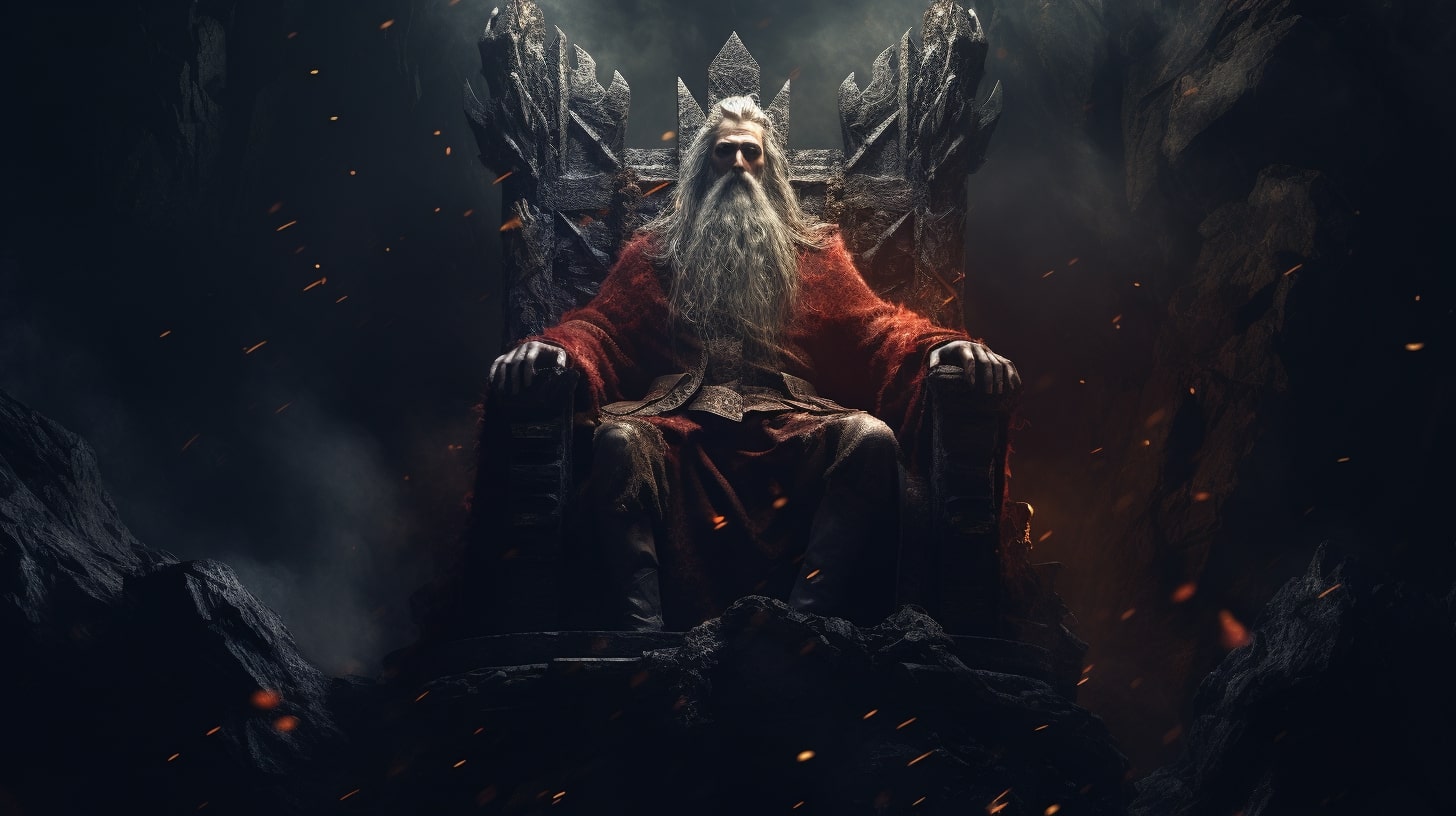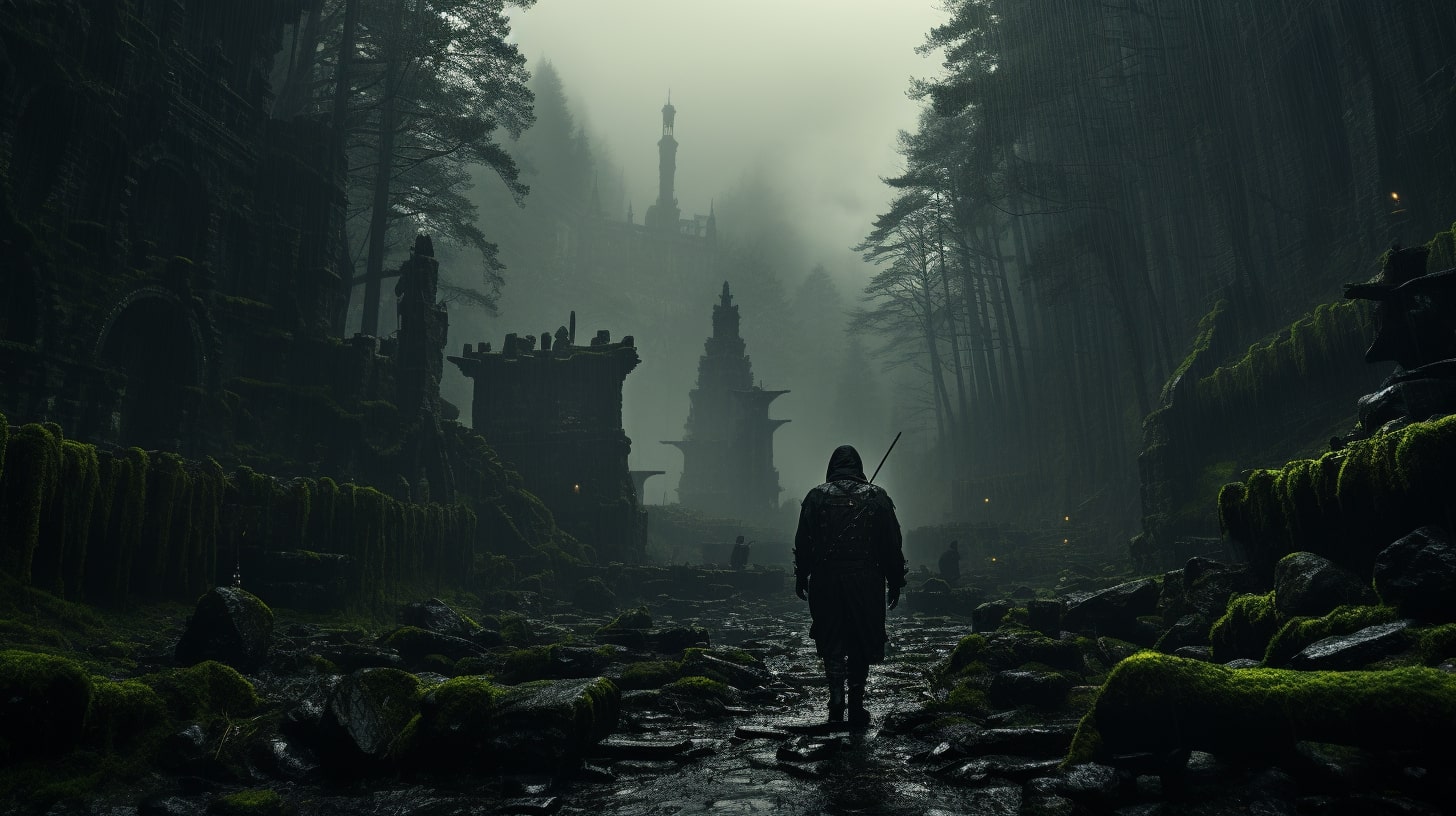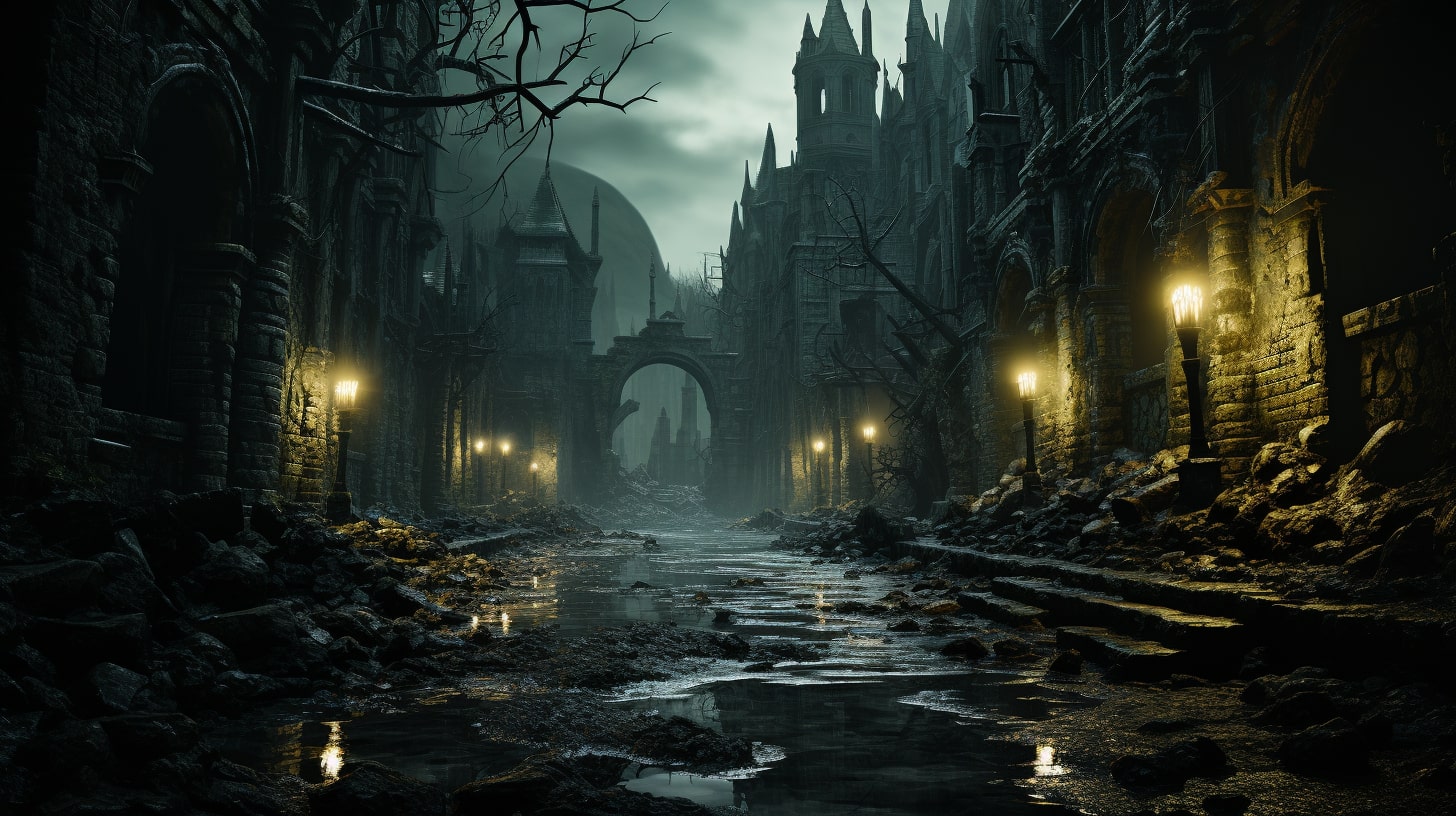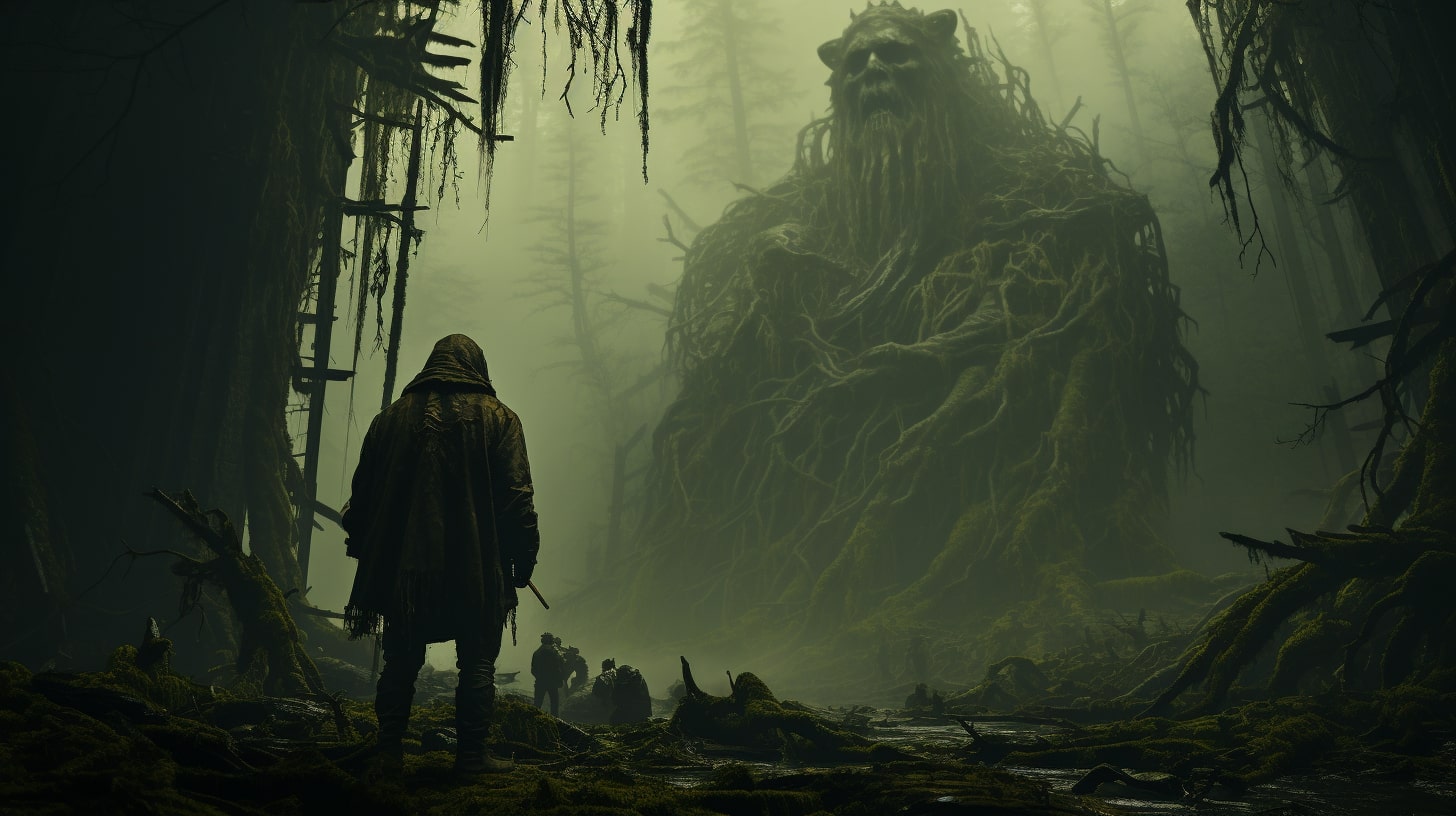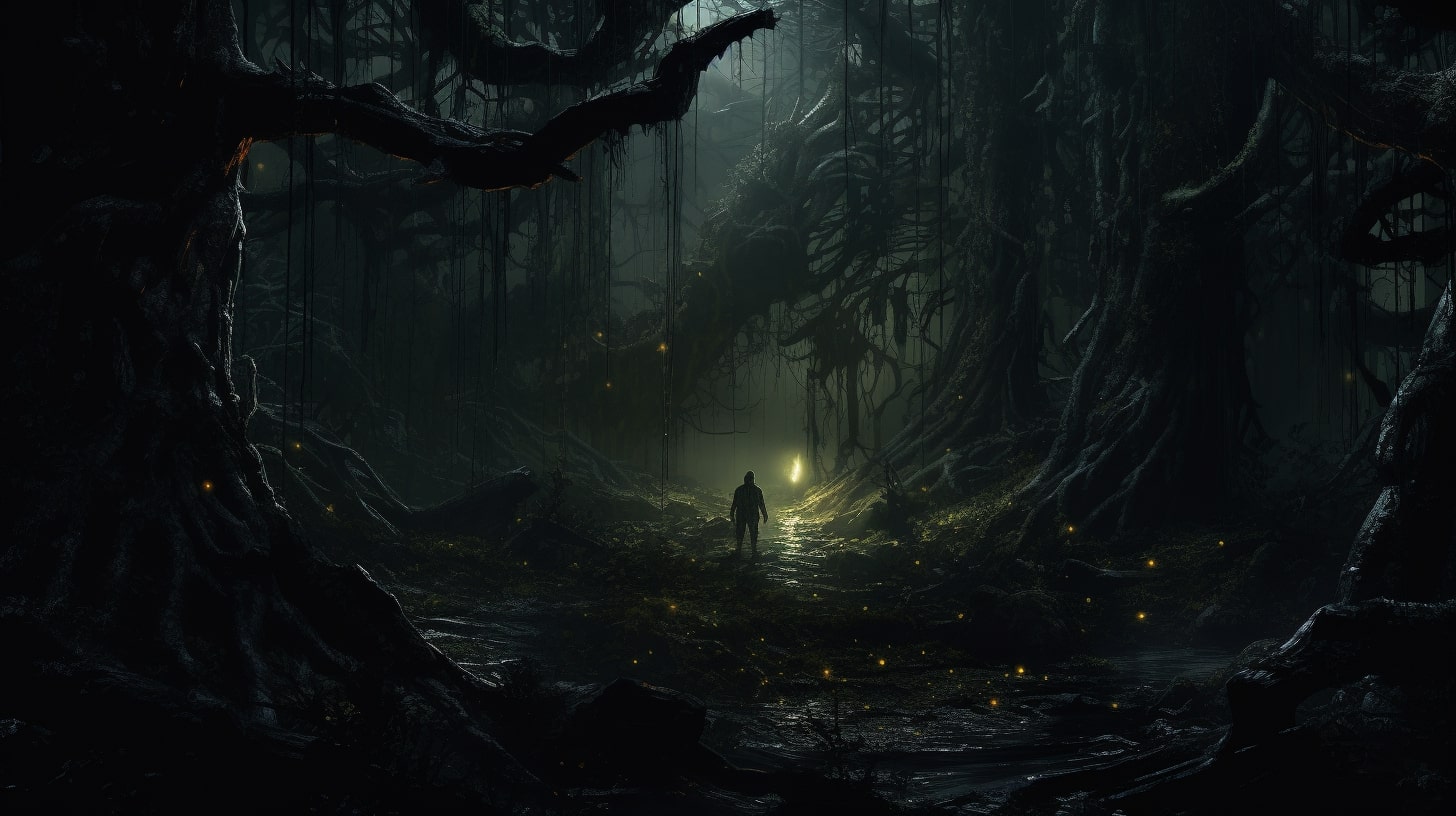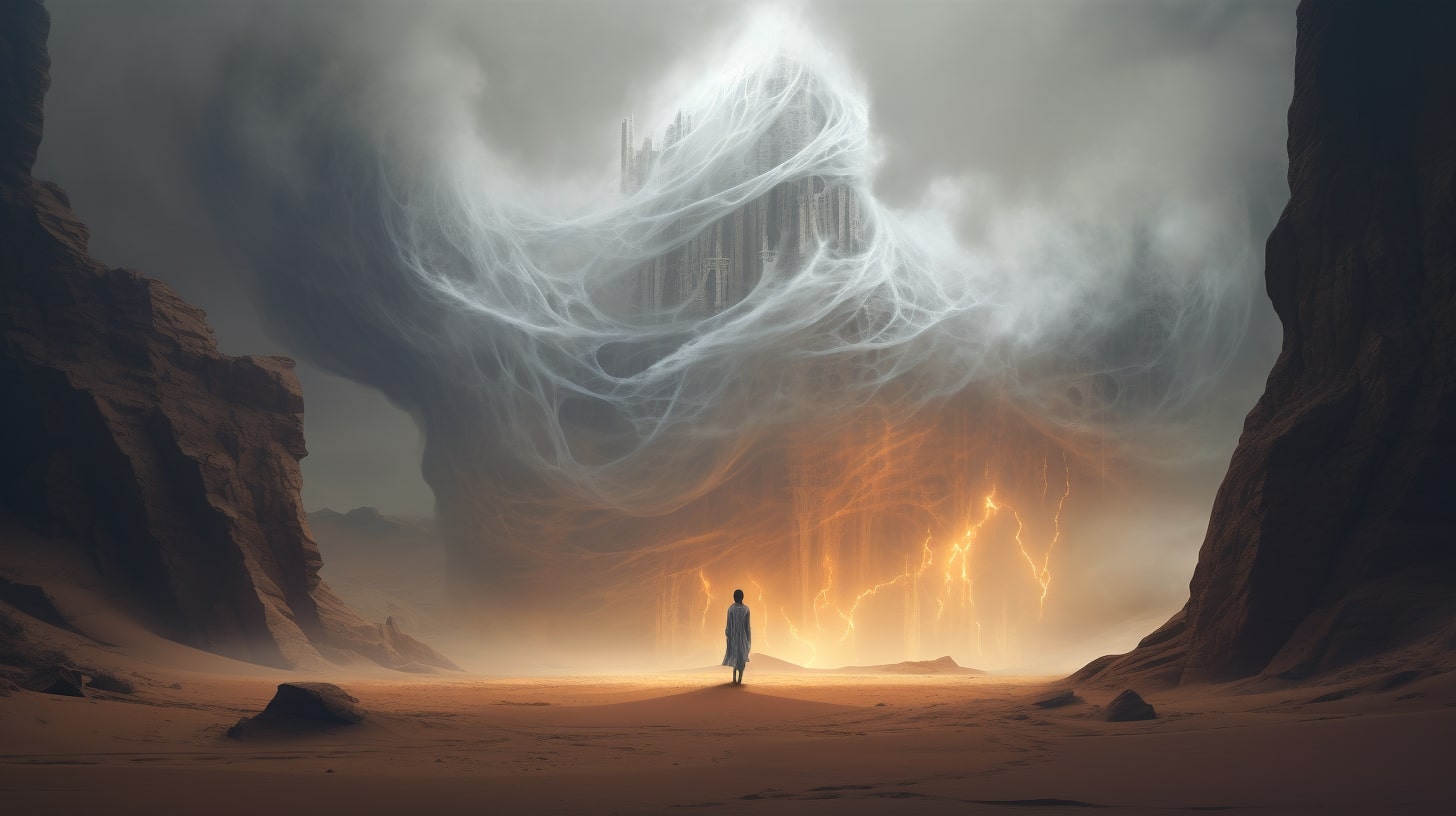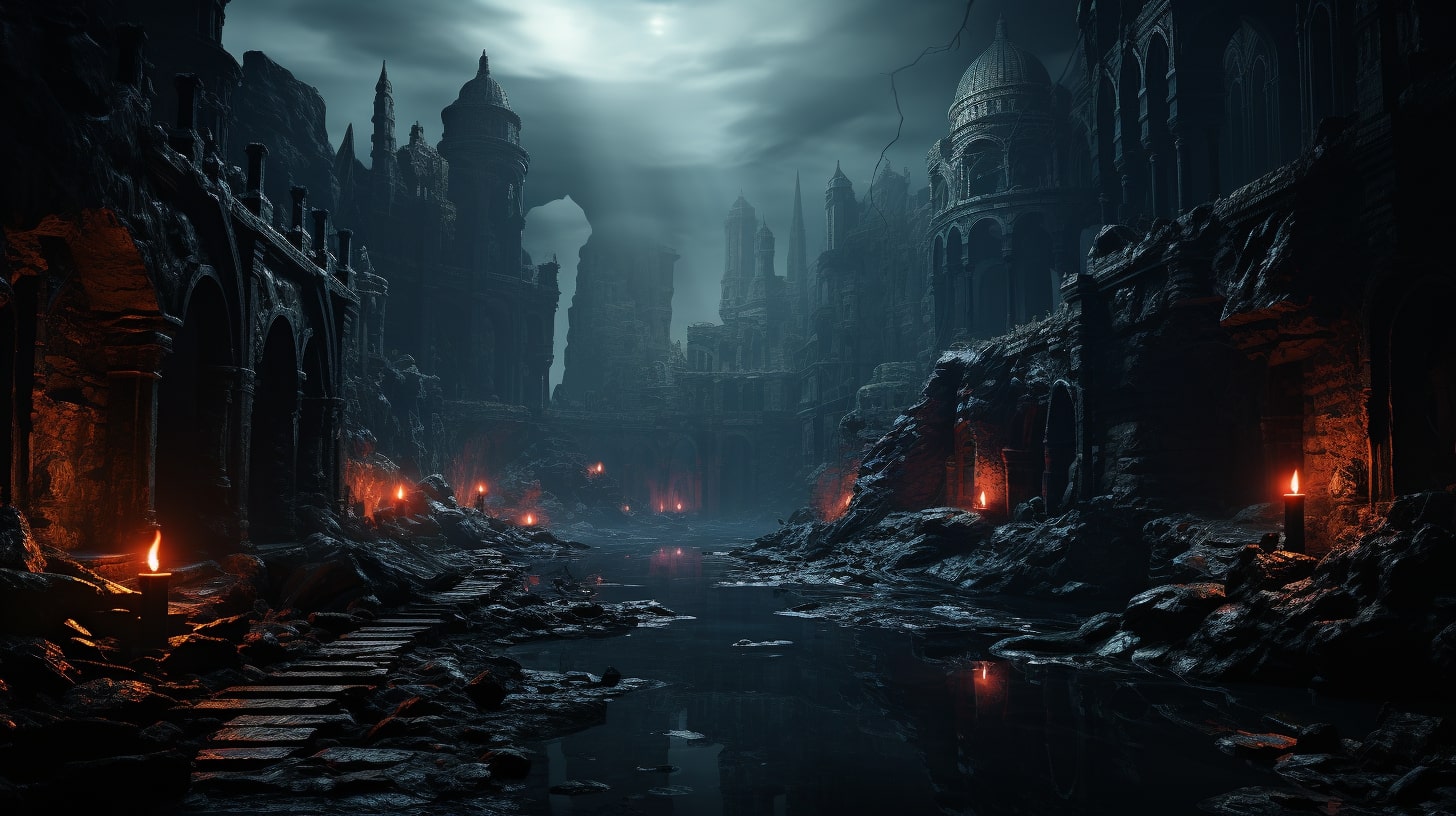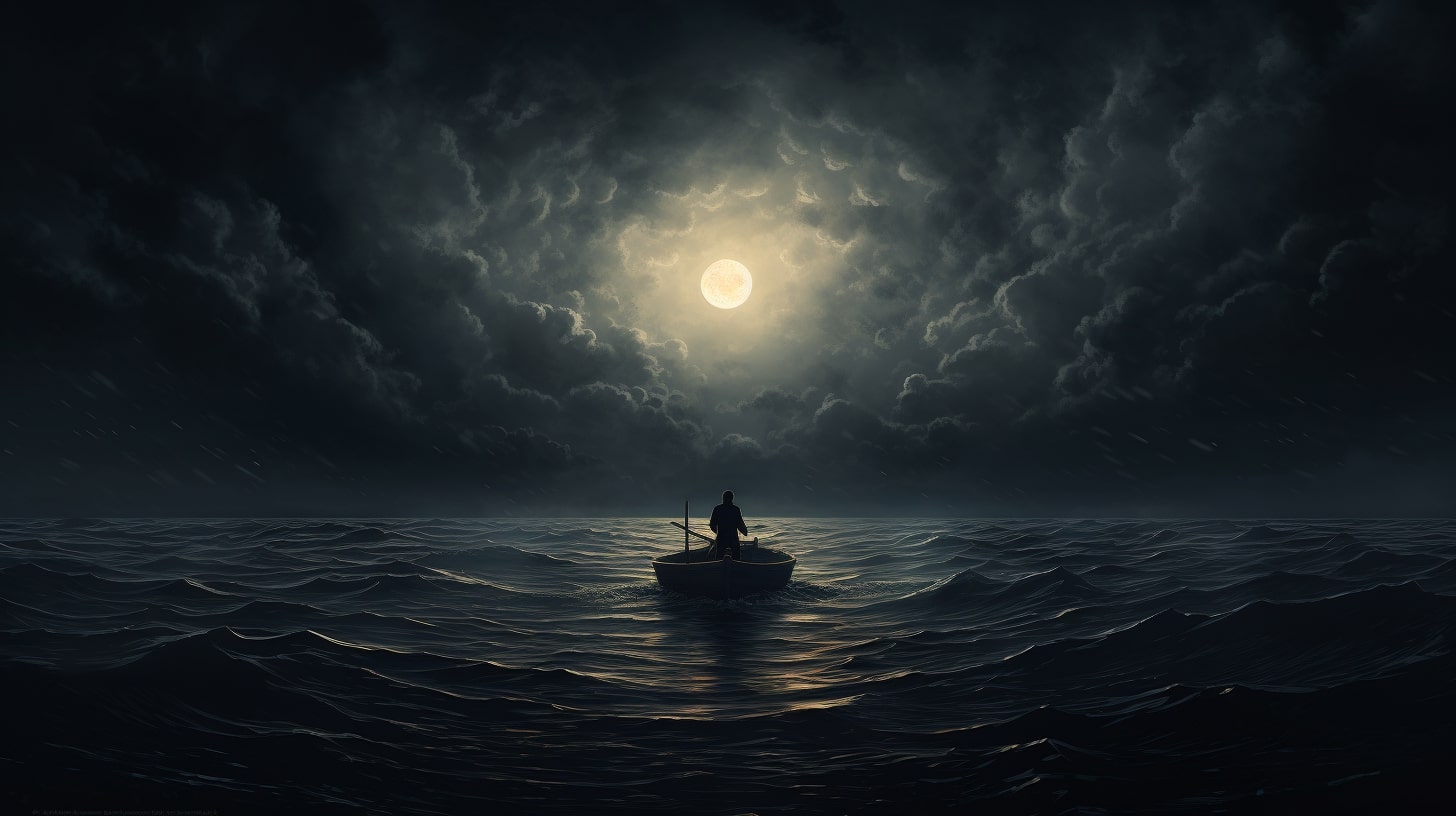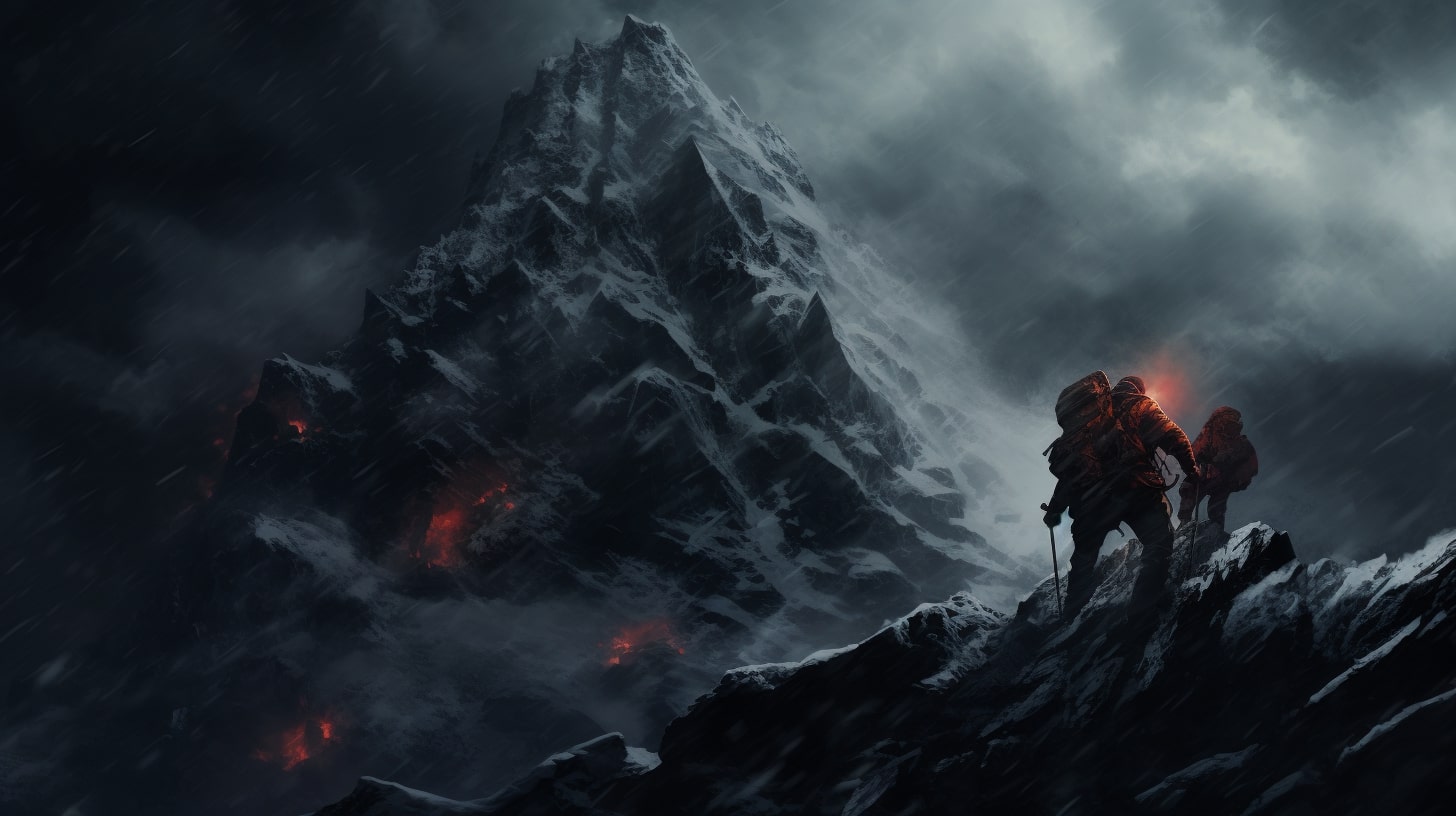Three years ago, I had a problem. Actually, I had seventeen problems, all sitting in different Word documents across four folders on my desktop.
I was building a fantasy world for my novel, and it was a mess. I had "Characters.docx" with forty-three people I couldn't keep straight. "Magic System.docx" had three different versions of how magic worked because I kept changing my mind and forgot to update everything else. "Politics.docx" mentioned kings who were apparently immortal because I'd killed them off in "History.docx" but forgot to tell the politics file.
Sound familiar?
The breaking point came when I spent two hours looking for a single detail about my protagonist's hometown. I knew I'd written it down somewhere. Was it in "Locations.docx"? Maybe "Culture Notes.docx"? Could be buried in "Random Ideas.docx" (yes, I had one of those too).
I found it eventually. In a comment bubble in "Chapter 3 Draft.docx." Of course.
That's when I discovered obsidian worldbuilding, and everything changed.
Obsidian isn't just another note-taking app. It's a thinking tool that mirrors how your brain actually works when you're creating worlds. Instead of forcing your interconnected, chaotic, beautiful creative process into linear documents and rigid folders, it lets your ideas connect naturally.
When I mention "The Whispering Woods" in my character notes, Obsidian automatically connects it to my location notes about those woods. When I update something about the woods, I can instantly see every character, event, and story that might be affected. No more hunting through files. No more contradictions. No more lost details.
Here's what this guide will teach you. You'll learn how to set up an Obsidian vault that grows with your world instead of fighting against it. You'll discover techniques that turn scattered notes into a living, breathing knowledge network. You'll see how to track relationships between characters, locations, events, and concepts without drowning in complexity.
Most importantly, you'll learn how to spend more time creating and less time organizing.
I've used Obsidian to build three complete fictional worlds now. One became the setting for my published novel. Another serves as the foundation for a tabletop RPG campaign that's been running for two years. The third is still growing, evolving, surprising me with connections I never planned.
The difference isn't just organizational. When your world lives in a connected system like Obsidian, it starts to feel more real. Characters develop relationships you didn't expect because their notes are linked. Historical events cascade through your timeline in ways that create new story opportunities. Magic systems evolve naturally as you explore their implications across different notes.
Your world stops being a collection of cool ideas and becomes a place that could actually exist.
But here's the thing about Obsidian worldbuilding that most guides won't tell you. It's not about the features. Sure, the bidirectional links are powerful. The graph view is beautiful. The plugins are incredibly useful. But the real magic happens when you stop thinking in terms of "files" and start thinking in terms of "connections."
When you link your mage character to the magic system, to the magic academy where she studied, to the political faction that opposes magic users, to the historical event that sparked that opposition, something clicks. Your world becomes more than the sum of its parts.
This isn't just better organization. This is better thinking.
I've watched writers go from scattered, contradictory worldbuilding to rich, consistent universes in a matter of weeks. I've seen game masters transform campaign prep from a chore into genuine excitement as they discover new aspects of their worlds through the connection web. I've experienced it myself, finding story threads I never would have noticed in a traditional folder structure.
By the end of this guide, you'll have everything you need to build your own connected worldbuilding system. You'll understand not just how to use Obsidian's features, but why they work so well for creative projects. You'll have templates, workflows, and techniques that scale from your first character note to a fully realized universe.
More importantly, you'll have a system that grows with your creativity instead of constraining it.
Whether you're writing a novel, designing a game, planning a campaign, or just building worlds for the joy of it, obsidian worldbuilding will change how you think about fictional universes. Instead of managing scattered information, you'll be cultivating a living knowledge garden where every idea can connect to every other idea.
Ready to transform your worldbuilding? Let's start with why traditional methods fall apart, and then I'll show you how Obsidian fixes everything wrong with the way most people build fictional worlds.
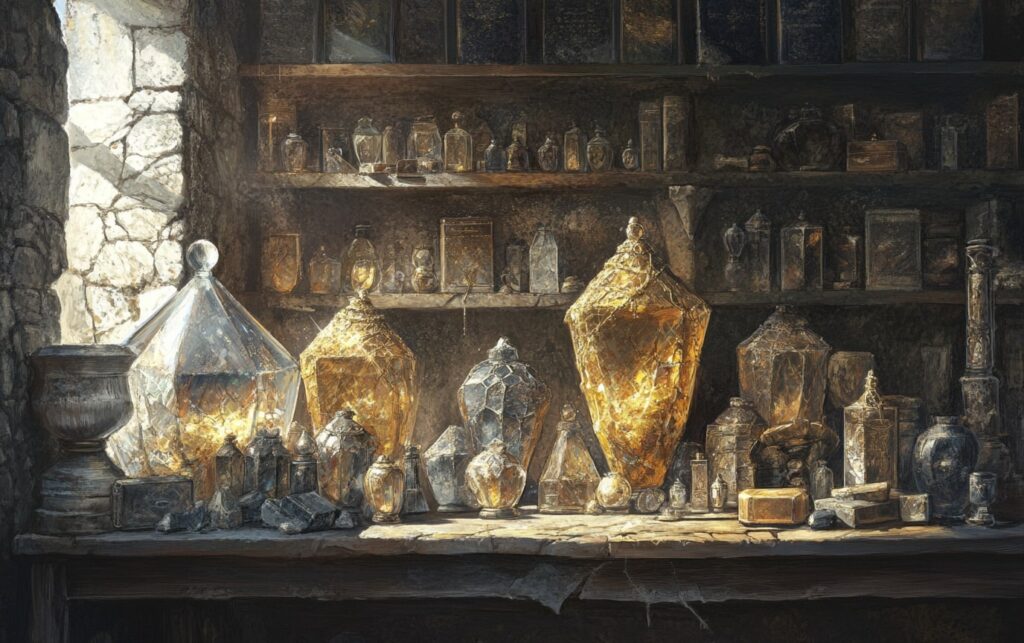
The Problem with Traditional Worldbuilding Methods
Let me paint you a picture of worldbuilding hell. You're six months into developing your fantasy realm. You've got a dozen Word documents, a spreadsheet for tracking timelines, a Pinterest board for visual inspiration, some hand-drawn maps in a notebook, and a growing collection of sticky notes covering your monitor.
You're writing a scene where your protagonist visits the capital city. Simple enough, right? You open "Locations.docx" and scroll through twelve pages looking for the capital. There it is. But wait, which noble house controls the eastern district again? That's probably in "Politics.docx."
You open that file. Ctrl+F for "eastern." Nothing. Maybe you called it "east quarter"? Nope. "Eastern quarter"? Still nothing. You search for the city name. Found it! But this document says Lord Aldwin controls the east side, while your character notes say he died in the war three years ago.
Which file is right? Who the hell knows.
This is the fundamental problem with traditional worldbuilding methods. They force you to think in terms of categories when creativity doesn't work that way.
The Linear Organization Trap
When you start worldbuilding, the natural instinct is to organize everything into neat categories. Characters go in one place, locations in another, history gets its own document. Makes sense, right?
Wrong. This approach assumes your world elements are independent when they're actually interconnected in complex ways.
Take a simple character like Captain Sarah Rodriguez of the Star Clipper. Where does she belong in your filing system?
She's obviously a character, so she goes in "Characters.docx." But she's also the captain of a ship, so maybe she belongs in "Vehicles.docx"? She works for the Merchant's Guild, so perhaps "Organizations.docx"? She was born on Kepler Station, so should she be referenced in "Locations.docx"? She fought in the Titan War, so definitely needs to be in "History.docx."
The truth is, Captain Rodriguez belongs in all of these places. But traditional file systems force you to pick one primary location and hope you remember to cross-reference everywhere else she's relevant.
Spoiler alert: you won't remember. And six months from now, when you're writing a scene about the Merchant's Guild, you'll forget that Captain Rodriguez exists and create a new character to fill the same role. Now you have two similar characters and no idea which one you actually want to use.
The Contradiction Crisis
Here's where things get really messy. Let's say you decide to be thorough and mention Captain Rodriguez in multiple documents. Smart move, right?
Except now you have the same information in five different places. When you decide to change her backstory (maybe she wasn't born on Kepler Station after all, but on a transport ship), you have to remember to update five different documents.
You'll update three of them. Maybe four if you're lucky. The fifth one will slip through the cracks, and three months later you'll be staring at two different versions of the same character wondering which one is correct.
I call this the contradiction crisis, and it kills more worldbuilding projects than lack of creativity ever will. Nothing destroys the magic of a fictional world faster than realizing it doesn't make sense internally.
It gets worse with complex elements like magic systems or political structures. Say you have a magic system where power comes from emotional intensity. You mention this in "Magic System.docx." Then, while developing a character, you decide that magical power actually correlates with intelligence instead. You update the character sheet but forget about the magic system document.
Six months later, you're writing a scene where your angry barbarian character should be incredibly powerful (emotions!) but your notes say he should be weak (low intelligence!). Which rule applies? The old one or the new one?
If you can't even answer that question quickly, how is your reader supposed to believe in your world?
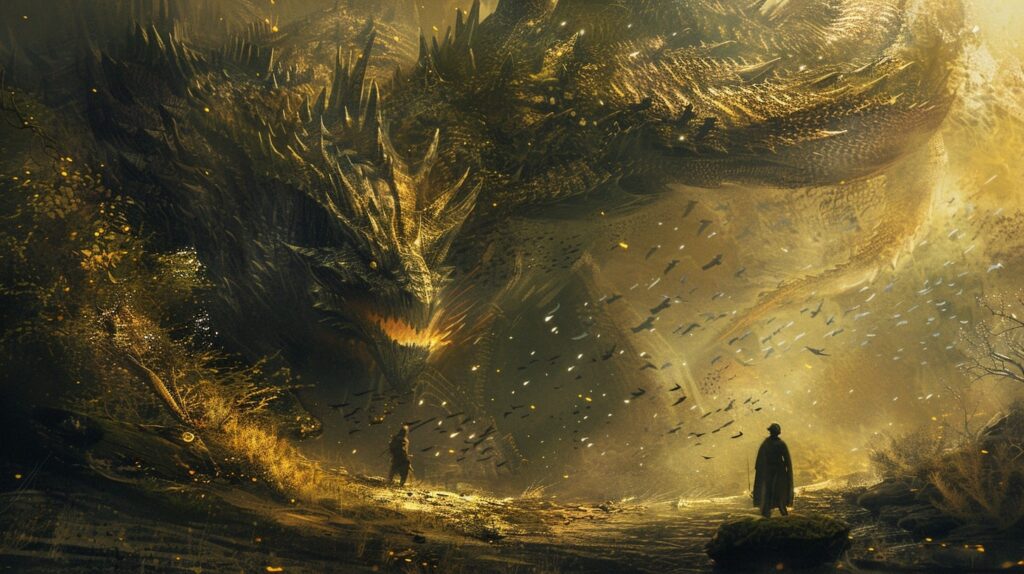
Information Silos and Lost Connections
Traditional file organization creates what I call information silos. Each document becomes isolated from the others, making it nearly impossible to see the connections that make worlds feel alive.
Think about how real places work. Tokyo isn't just a location with physical characteristics. It's shaped by its history, its culture, its economy, its relationship with other cities, the people who live there, and the events that happen within it. All of these elements influence each other constantly.
But in a traditional filing system, Tokyo would be trapped in "Locations.docx" while its history sits in "Timeline.docx," its culture in "Societies.docx," and its important residents scattered across "Characters.docx."
You lose the dynamic relationships that make places feel real. Even worse, you lose the ability to ask interesting questions like "How would the destruction of the harbor affect the three main trading families?" because the harbor, the destruction event, and the trading families all live in different documents.
The Search and Discovery Problem
Let's talk about the nightmare scenario every worldbuilder knows. You're deep in a creative flow, writing an important scene, and you need a specific detail about something you created months ago. Maybe it's the name of your protagonist's childhood friend, or the specific wording of a magical oath, or the distance between two cities.
You know you wrote it down. You're absolutely certain. But where?
So you start the hunt. "Characters.docx" first. Nope. Maybe "Relationships.docx"? Don't have one of those. "Random Notes.docx"? Definitely possible. No luck there either. Perhaps it's in the actual story draft somewhere?
Twenty minutes later, you've lost your creative momentum entirely. You're frustrated, scattered, and starting to doubt whether you actually wrote that detail down at all. Maybe you just imagined that you had.
This search-and-discovery problem compounds over time. The bigger your world gets, the harder it becomes to find anything. You start avoiding references to past elements not because they wouldn't improve your story, but because you can't face another hunting expedition through your files.
Your world actually gets smaller as your documentation gets larger. That's the opposite of what should happen.
The Collaboration Nightmare
If working alone with traditional methods is hard, collaborating is nearly impossible. Say you're building a world with a writing partner or designing a game with a team. How do you share a collection of Word documents and spreadsheets in a way that lets everyone contribute without creating chaos?
Email attachments quickly become version control hell. "Wait, are we using Sarah's version of the character sheet or Mike's? I thought we decided the magic system worked differently than what's in this document?"
Google Docs helps with real-time collaboration, but you still have the fundamental problem of information silos. When your teammate updates the political structure, how do they know which character notes might be affected? They don't, so they either spend hours cross-referencing everything or hope for the best.
Shared folders full of documents become digital junkyards where everyone dumps information but nobody wants to organize it. The bigger the project gets, the more unwieldy it becomes.
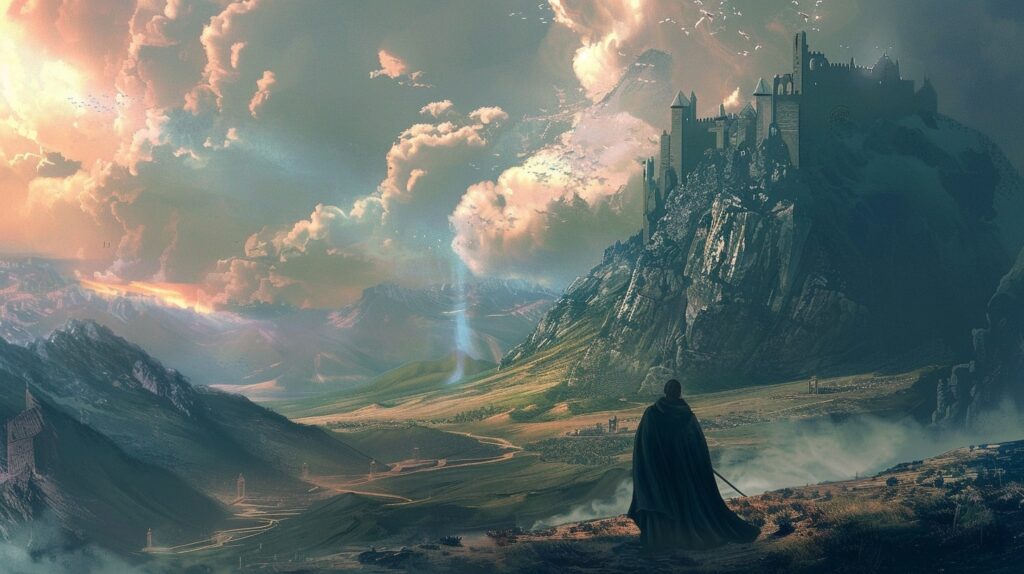
The Scaling Problem
Finally, there's the issue of growth. Traditional worldbuilding methods that work fine for small projects completely break down as worlds become more complex.
When you have five characters, keeping them in one document is manageable. When you have fifty, that document becomes unwieldy. When you have five hundred, it's unusable.
The same applies to locations, events, organizations, and every other element of your world. Linear documents don't scale gracefully. They just get longer and more difficult to navigate.
You find yourself creating sub-documents, then sub-sub-documents. Your "Characters.docx" becomes "Characters - Main.docx," "Characters - Supporting.docx," and "Characters - Background.docx." Now you have to remember which category each character belongs in, and you're back to the same organizational problems that created this mess in the first place.
Some worldbuilders try to solve this with wikis or database software, but those solutions require technical knowledge and significant setup time. Plus, they often feel sterile and disconnected from the actual creative process of writing or game design.
The Real Cost
Here's what really bothers me about these traditional methods. It's not just that they're inefficient (though they are). It's that they actively work against creativity.
When you know that adding a new element to your world means updating multiple documents and checking for contradictions, you stop adding new elements. When you know that exploring an interesting connection means hunting through files for twenty minutes, you stop exploring connections.
Your creative process becomes constrained by your organizational system instead of supported by it. You start making creative decisions based on what's easy to track rather than what's best for your story or game.
That's backwards. Your tools should amplify your creativity, not limit it.
The solution isn't better organization within the same system. It's a completely different approach to how we think about connected information. An approach that mirrors how our brains actually work when we're creating complex, interconnected worlds.
That's where Obsidian comes in.
Why Obsidian Is Perfect for Worldbuilding
Remember Captain Sarah Rodriguez from our previous nightmare scenario? Let me show you how she lives in an Obsidian vault.
I create a note called "Sarah Rodriguez" and start writing. As I mention that she's the captain of the [[Star Clipper]], I put those double brackets around the ship name. Obsidian automatically creates a link. If the Star Clipper note doesn't exist yet, clicking the link creates it. If it does exist, clicking takes me there instantly.
I mention she works for the [[Merchant's Guild]] and was born on [[Kepler Station]]. More links, more connections. I note that she fought in the [[Titan War]] and has a rivalry with [[Captain Marcus Webb]]. Every double-bracketed item becomes part of a growing web of connections.
Here's where it gets interesting. When I create the Star Clipper note, Obsidian automatically shows me that Sarah Rodriguez is linked to it. When I write about the Titan War, I can instantly see every character who participated, every location where battles occurred, every consequence that rippled outward.
Change something about the war? I immediately see everywhere that change might affect. No hunting through files. No forgotten updates. No contradictions slipping through the cracks.
This is why obsidian worldbuilding works so much better than traditional methods. It thinks the way your brain thinks when you're creating complex, interconnected worlds.
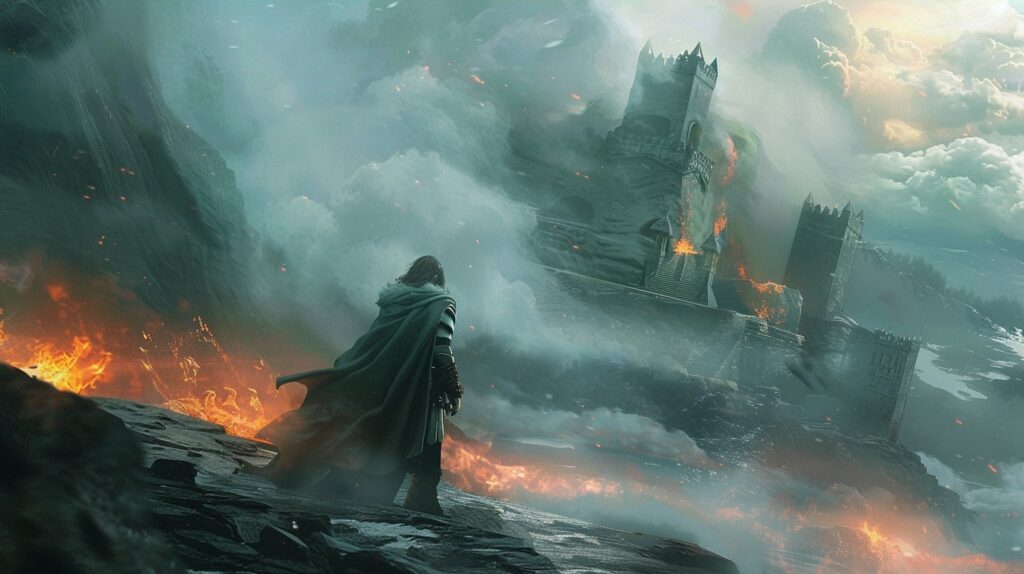
Bidirectional Linking: Your World's Nervous System
The foundation of Obsidian's power is bidirectional linking. When you link Note A to Note B, Note B automatically knows about Note A. This sounds simple, but it completely transforms how you work with connected information.
Let's say I'm writing about the port city of Atlantica. I mention that it's home to the [[Royal Naval Academy]], controlled by the [[House of Tides]], and was the site of the [[Battle of the Burning Harbor]]. Each of those gets its own note with its own details.
Now, from the Royal Naval Academy note, I can instantly see that it's located in Atlantica. From the House of Tides note, I can see all their holdings including Atlantica. From the Battle of the Burning Harbor note, I can see where it took place.
But here's where it gets powerful. Let's say I decide the Battle of the Burning Harbor destroyed the Royal Naval Academy. I update the academy note to reflect this. Instantly, I can see from the battle note that it had major consequences for the academy. From the Atlantica note, I can see that the city lost its major educational institution.
The connections aren't just static links. They're dynamic relationships that help you understand the ripple effects of changes throughout your world.
This becomes even more powerful with complex elements. My magic system note links to every character who uses magic, every location where magic is taught or forbidden, every historical event involving magic, and every cultural attitude toward magical practice. Change one aspect of how magic works, and I can immediately see every corner of my world that might be affected.
No more hunting through files. No more forgotten connections. No more accidental contradictions.
The Graph View: Seeing Your World's Soul
Obsidian's graph view is where the magic becomes visible. It shows your entire world as a network of connected nodes, with each note represented as a dot and each link as a line between dots.
The first time you see your world as a graph, it's revelatory. You're not looking at a filing system anymore. You're looking at the actual structure of your fictional universe.
Highly connected notes appear as large nodes with many links radiating outward. These are usually your most important locations, characters, or concepts. Isolated notes appear as small dots with few or no connections. These might be incomplete ideas or elements that need better integration into your world.
Clusters form naturally around related concepts. All your political notes tend to connect to each other, forming one region of the graph. Magic-related notes form another cluster. Character relationships create their own web of connections.
But the really interesting stuff happens where clusters overlap. Where does your political intrigue intersect with your magic system? How do character relationships influence historical events? The graph view makes these intersections visible in ways that traditional organization never could.
I use the graph view for world health checks. If I see a note with no connections, it might need more integration. If I see everything connecting to just one or two central nodes, my world might be too dependent on specific elements. If I see isolated clusters with no connections between them, I might be missing opportunities for interesting cross-pollination.
The graph isn't just pretty to look at (though it is). It's a diagnostic tool that helps you understand the actual structure of your world and identify areas for improvement.
Non-Linear Thinking for Non-Linear Worlds
Here's something most organizational systems get wrong. They assume you think about your world in linear, hierarchical ways. Characters go under Characters. Locations go under Locations. History goes under History.
But that's not how creativity works.
When I'm developing a character, I might suddenly realize something about the magic system. When I'm working on a location, I might discover a new historical event. When I'm exploring a political conflict, I might create three new characters and redesign half my map.
Traditional systems fight against this natural creative flow. Obsidian embraces it.
In Obsidian, I can be working on a character note and spontaneously create a link to a location that doesn't exist yet. The link turns red (indicating a missing note), but it's there, ready for me to develop later. I can follow my creative tangents without losing track of where I started.
This is profound for worldbuilding because fictional worlds aren't hierarchical. They're networks. Everything connects to everything else in complex, overlapping ways.
A character isn't just a person with stats and a backstory. They're a node in a network connected to family members, friends, enemies, hometown, current location, employer, political faction, magical abilities, personal history, and current goals. Change any one of these elements, and the character changes too.
Traditional filing systems force you to pick one primary category for each element. Obsidian lets each element exist at the intersection of all its connections, which is much closer to how complex fictional worlds actually work.
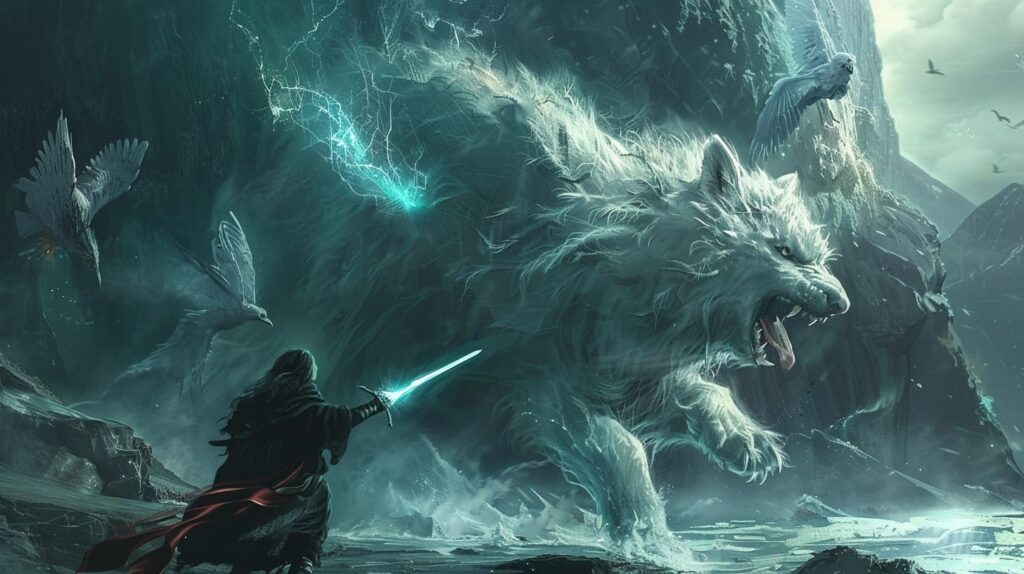
Real-Time Search and Pattern Discovery
One of Obsidian's most underrated features for worldbuilders is its search capability. But this isn't just finding text in documents. It's pattern recognition across your entire connected knowledge base.
I can search for "fire magic" and find not just my magic system notes, but every character who uses fire magic, every location where it's taught, every historical event involving it, and every cultural attitude toward it. The search results show me patterns I might not have noticed consciously.
Even better, I can combine search with links and tags to find complex relationships. Show me all characters tagged as "nobility" who are linked to locations tagged as "northern kingdom" and who appear in notes about "succession crisis." That's a query that would be nearly impossible with traditional file organization.
This search power enables what I call "accidental discovery." I'll be looking for one thing and stumble across connections I'd forgotten about or patterns I hadn't seen. These discoveries often spark new story ideas or reveal aspects of my world that were there all along but hidden in the organizational structure.
The search results aren't just lists of files. They're doorways into different perspectives on the same interconnected world. Following these paths often leads to creative breakthroughs that would never happen in a traditional filing system.
Collaboration That Actually Works
Remember the collaboration nightmare I described earlier? Obsidian solves it elegantly.
Since everything is plain text markdown files, you can store an Obsidian vault in any shared folder system. Dropbox, Google Drive, GitHub, whatever works for your team. Multiple people can work on different aspects of the world simultaneously, and the links between their work happen automatically.
More importantly, when one person makes a change, everyone else can see the ripple effects through the link system. Update a historical event, and anyone working on affected characters or locations can immediately see the connections.
The graph view becomes a collaborative tool too. Team members can literally see how their contributions fit into the larger world structure. New contributors can explore the world through the link network, understanding relationships and context in ways that would take hours to explain through traditional documentation.
For game masters running collaborative campaigns, this is revolutionary. Players can contribute to world development, adding their own locations, NPCs, and backstory elements. The GM can see how everything connects and identify opportunities for storylines that emerge from player contributions.
Emergent Complexity from Simple Rules
This is the part that still amazes me after years of using Obsidian for worldbuilding. Complex, sophisticated organizational structures emerge naturally from simple linking behavior.
I don't plan my note hierarchy. I don't design my tagging system in advance. I don't create elaborate folder structures. I just write notes and link related concepts. Over time, the world organizes itself.
Characters naturally cluster around locations, organizations, and events they're connected to. Historical periods organize themselves chronologically through event links. Political factions become visible through character associations. Cultural groups emerge through shared locations and traditions.
The world develops its own internal logic without me imposing external organizational schemes. This organic growth feels much more natural than trying to force creative elements into predetermined categories.
It's also more resilient. Traditional organizational schemes break when your world grows beyond their initial assumptions. Obsidian's emergent organization adapts automatically as complexity increases.
The Living World Effect
Here's what happens after you've been using Obsidian for worldbuilding for a few months. Your world starts to feel alive in ways that surprised me.
Because everything is connected, changes propagate naturally through the system. Kill off a character, and you immediately see every plot thread, relationship, and location that's affected. Destroy a city, and the economic, political, and personal ramifications become visible through the link network.
But it goes deeper than that. The constant discovery of connections creates a sense that your world has depth beyond what you've consciously planned. Following link chains often reveals relationships you didn't know existed or implications you hadn't considered.
Your world starts surprising you. You'll be exploring a character's connections and discover they have a relationship with someone you'd forgotten about. You'll be developing a location and realize it's connected to three different historical events in ways that suggest new storylines.
This isn't magic. It's emergence. When you create a sufficiently connected system, patterns and relationships emerge that are more complex than what any individual component could produce. Your world becomes more than the sum of its parts.
Traditional worldbuilding methods fight against this emergence by isolating elements in separate files. Obsidian enables it by making connections visible and explorable.
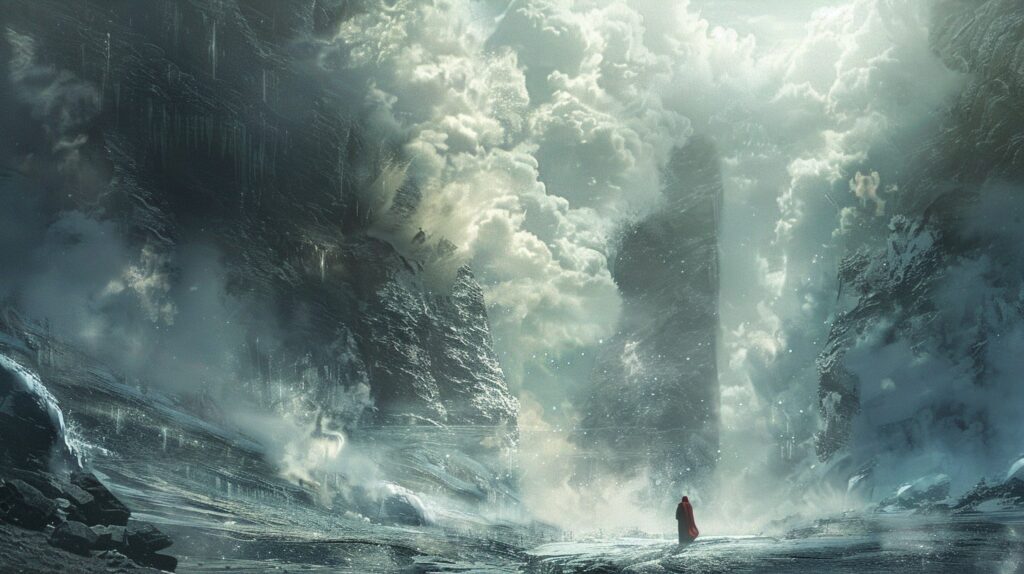
The Obsidian Advantage: Why Nothing Else Comes Close
I've tried other solutions. Specialized worldbuilding software like World Anvil or Campfire. Database systems like Notion or Airtable. Wiki software like TiddlyWiki or Zim. Even custom solutions built specifically for fictional worlds.
They all have strengths, but they all miss something crucial that Obsidian gets right.
Most specialized tools try to impose structure on your creative process. They have predetermined fields for characters (Name, Age, Description, etc.) and predetermined categories for information. They make assumptions about how you think and create.
Obsidian makes no assumptions. It provides powerful linking and search tools, then gets out of your way. The structure emerges from your actual creative process rather than being imposed by the software.
Database solutions can handle complex relationships, but they require you to think like a database administrator rather than a creative person. Setting up relationships between tables and designing schemas takes mental energy away from actual worldbuilding.
Wiki software gets closer to Obsidian's approach, but wikis are designed for reference rather than active development. They're great for displaying finished information but clunky for the iterative, exploratory process of building fictional worlds.
Obsidian hits the sweet spot. It's powerful enough to handle complex, interconnected worlds but simple enough that the tool never gets in the way of the creative process. It grows with your world rather than constraining it within predetermined structures.
Most importantly, it thinks the way creative people think. Non-linearly, associatively, with sudden connections and tangential discoveries. It amplifies your natural creative process instead of fighting against it.
That's why obsidian worldbuilding isn't just better organization. It's better thinking.
The next step is setting up your own vault and experiencing this connected approach firsthand. Once you see how it works with your own creative process, you'll wonder how you ever built worlds any other way.
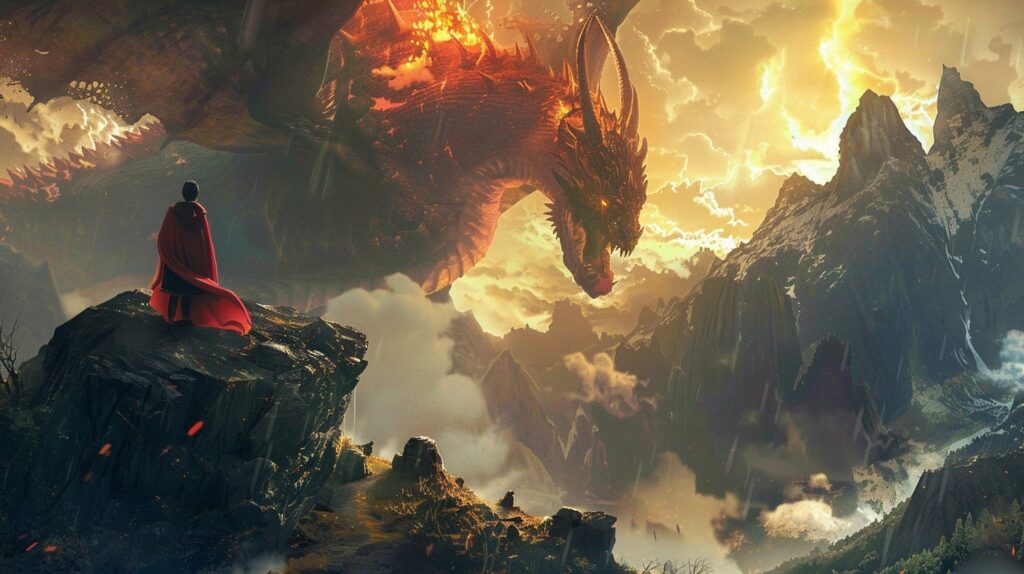
Setting Up Your Worldbuilding Vault
Alright, enough theory. Let's get your hands dirty and build your first Obsidian worldbuilding vault. I'm going to walk you through everything from download to your first connected notes, with the specific settings and plugins that actually matter for creative work.
But first, let me save you from the mistake that trips up 90% of new Obsidian users. You're going to want to organize everything perfectly from day one. You'll be tempted to create elaborate folder structures, design complex tagging systems, and set up templates for every possible type of note.
Don't.
The power of Obsidian comes from letting connections emerge naturally. Start simple, link as you go, and let your world's organization develop organically. Trust me on this one.
Creating Your Vault: The Foundation
Download Obsidian from obsidian.md (it's free). When you open it for the first time, you'll be prompted to create a vault. Think of a vault as a completely self-contained workspace for one project.
Name your vault something meaningful. I use the name of my fictional world ("The Shattered Realms," "Neon Shadows," etc.). This name will appear in your vault switcher if you eventually create multiple vaults for different projects.
Choose a location on your computer that makes sense. I keep all my creative projects in a "Writing" folder, so my Obsidian vaults live there too. Wherever you put it, make sure it's somewhere you can easily find and back up.
Here's something important that most tutorials don't mention: if you plan to collaborate or work across multiple devices, put your vault in a synced folder (Dropbox, Google Drive, OneDrive) from the beginning. It's much easier than moving it later.
Click "Create" and you'll see an empty vault with a single note called "Start here." You can delete this or keep it as a welcome note. Doesn't matter.
The Folder Philosophy: Less Is More
Before you create a single note, you need to understand Obsidian's relationship with folders. Folders in Obsidian are organizational hints, not rigid containers. A note can link to notes in any folder, and the folder structure becomes less important as your link network grows.
With that in mind, here's the folder structure that actually works for worldbuilding:
📁 Characters
📁 Locations
📁 Events & History
📁 Organizations & Factions
📁 Systems (magic, technology, culture)
📁 Story Notes
📁 Resources (images, maps, inspiration)
📁 Templates
That's it. Eight folders maximum. Here's why each one matters:
Characters is obvious. Every person in your world, from protagonists to background NPCs. Don't subdivide this further (no "Main Characters" vs "Supporting Characters" folders). Let importance emerge through connections.
Locations covers everywhere from continents to specific buildings. Again, resist the urge to create hierarchies like "Countries > Cities > Buildings." Geographic relationships should be expressed through links, not folder structure.
Events & History includes everything that happens in your world, past and present. Major historical events, current political situations, planned story beats, everything temporal lives here.
Organizations & Factions covers any group with shared goals or identity. Governments, religions, guilds, secret societies, military units, even informal groups like "the tavern regulars."
Systems is for the rules that govern your world. Magic systems, technology levels, economic principles, cultural practices, languages, anything that establishes how your world works.
Story Notes is your workspace for narrative development. Plot outlines, scene planning, character arcs, anything related to the stories you're telling within your world.
Resources holds everything that isn't text. Images, maps, PDFs, web clippings, inspiration material. Obsidian can embed and link to these files too.
Templates will hold your note templates once you create them. We'll get to this shortly.
Create these folders now, but don't stress about them. You'll quickly discover that the folder a note lives in matters much less than what it links to.
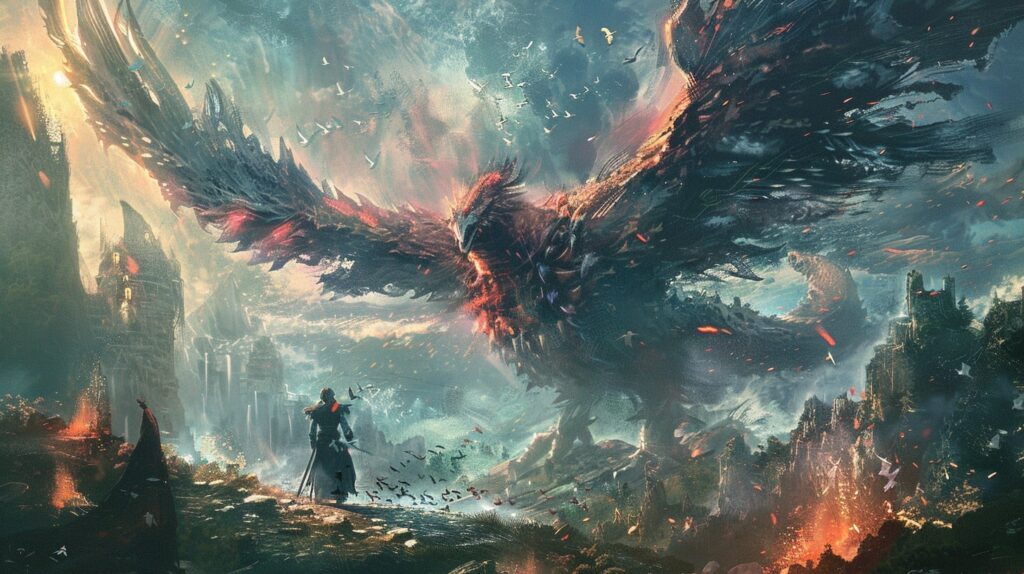
Essential Settings for Worldbuilders
Before diving into plugins, let's adjust a few core settings that make Obsidian more friendly for creative work.
Open Settings (gear icon in the bottom left) and navigate to these sections:
Files & Links
- Automatically update internal links: Turn this ON. When you rename a note, all links to it update automatically.
- Default location for new notes: Set this to "Same folder as current file" or choose a specific folder if you prefer.
- New link format: Use "Shortest path when possible." This creates cleaner links.
- Use [[Wikilinks]]: Keep this ON. Wikilinks are faster to type than markdown links.
Appearance
Choose a theme that's easy on your eyes for long writing sessions. I recommend "Minimal" or "Things" for clean, distraction-free interfaces. Dark themes like "Obsidian" work well for evening worldbuilding sessions.
Editor
- Show line numbers: Turn this OFF unless you're writing code.
- Readable line length: Turn this ON if you plan to write long-form content.
- Strict line breaks: Turn this OFF for more natural text flow.
Core Plugins
Enable these built-in plugins:
- Backlinks: Shows which notes link to the current note
- Graph view: The visual network view of your vault
- Outgoing links: Shows links from the current note
- Page preview: Hover over links to see note previews
- Quick switcher: Fast navigation between notes
- Search: Enhanced search capabilities
- Tag pane: Browse notes by tags
The Plugin Arsenal: Tools That Transform Worldbuilding
Obsidian's plugin ecosystem is where it becomes truly powerful for worldbuilding. Here are the essential plugins that will revolutionize your creative process:
Templater: Dynamic Templates That Think
The built-in Templates plugin is fine, but Templater is magical. It creates templates that can include variables, prompts, and even script execution.
Install it from Community Plugins, then create your first template in the Templates folder:
# <% tp.file.title %>
## Overview
<% tp.system.prompt("Brief description") %>
## Key Details
- **Type**: <% tp.system.suggest(["Character", "Location", "Organization", "Event", "System"], "What type of element is this?") %>
- **Status**: <% tp.system.suggest(["Idea", "Draft", "Complete", "Needs Review"], "What's the development status?") %>
- **Created**: <% tp.date.now() %>
## Connections
*What does this connect to in your world?*
## Notes
*Detailed information goes here*
---
Tags: #<% tp.system.prompt("Primary tag") %>
When you use this template, Templater prompts you for information and automatically fills in dates and file names. It's like having a smart assistant that helps you create consistent notes.
Dataview: Your World Database
Dataview turns your notes into a queryable database without losing the flexibility of free-form text. You can create dynamic lists and tables that update automatically as you add new notes.
Here's a simple example that lists all your characters:
## All Characters
```dataview
TABLE summary as "Description", status as "Status"
FROM "Characters"
SORT file.name ASC
Or create a more complex query showing all events in a specific time period:
```markdown
## Recent History (Last 50 Years)
```dataview
LIST
FROM "Events & History"
WHERE contains(tags, "#recent")
SORT date DESC
Dataview queries are powerful, but start simple. The ability to automatically generate lists of related notes becomes invaluable as your world grows.
### Excalidraw: Visual Worldbuilding
Excalidraw integrates hand-drawn diagrams and maps directly into Obsidian. You can create relationship diagrams, organizational charts, dungeon maps, or world maps, then link elements in the drawing to relevant notes.
This is perfect for visual worldbuilders who think better with images than text. Draw your kingdom's political structure, then click on each noble house to jump to their detailed notes.
### Calendar: Timeline Management
The Calendar plugin creates a visual calendar where each day can have associated notes. This is perfect for tracking events, managing campaign sessions, or organizing complex timelines.
Create notes with dates in the YYYY-MM-DD format, and they'll appear on the calendar automatically. Click any date to create or view notes for that day.
### Advanced Tables: Spreadsheets That Link
If you need more structured data (character stats, economic information, demographic data), Advanced Tables makes creating and editing markdown tables much easier.
Combined with Dataview, you can create tables in individual notes that automatically populate larger summary tables elsewhere in your vault.
### Natural Language Dates: Human-Friendly Scheduling
This plugin lets you create notes with natural language dates like "next Tuesday" or "in two weeks." It automatically converts these to proper date formats that work with Calendar and Dataview.
Perfect for planning story events or campaign sessions with phrases like "three days after the festival" instead of trying to calculate exact dates.
## Your First Template Collection
Templates are crucial for maintaining consistency as your world grows. Here are the essential templates every worldbuilder needs:
### Character Template
```markdown
# <% tp.file.title %>
## Basic Information
- **Full Name**:
- **Age**:
- **Occupation**:
- **Location**:
- **Status**:
## Physical Description
*What do they look like? Distinctive features?*
## Personality & Motivation
- **Core Motivation**:
- **Greatest Fear**:
- **Notable Traits**:
## Relationships
- **Family**:
- **Friends**:
- **Enemies**:
- **Professional**:
## Background
*Personal history, important events, formative experiences*
## Role in World
*How do they fit into the larger world? What's their function?*
## Notes
*Additional details, plot hooks, development ideas*
---
Tags: #character #<% tp.system.prompt("Location or faction tag") %>
Location Template
# <% tp.file.title %>
## Overview
*Brief description and purpose of this location*
## Physical Description
- **Size**:
- **Geography**:
- **Climate**:
- **Notable Features**:
## Demographics
- **Population**:
- **Primary Species/Cultures**:
- **Languages**:
- **Government**:
## Economy & Resources
- **Primary Industries**:
- **Major Exports**:
- **Currency**:
- **Trade Partners**:
## Important Locations
*Significant buildings, districts, or sub-locations*
## Notable NPCs
*Important people who live or work here*
## Current Events
*What's happening here right now?*
## History
*How did this place develop? Major historical events?*
## Connections
*How does this place relate to other locations?*
---
Tags: #location #<% tp.system.prompt("Region or type tag") %>
Event Template
# <% tp.file.title %>
## Summary
*What happened in one or two sentences?*
## Details
- **Date**:
- **Duration**:
- **Location**:
- **Key Participants**:
- **Outcome**:
## Background
*What led to this event? What were the conditions that made it possible?*
## Description
*What actually happened? Sequence of events, important moments*
## Consequences
*What were the immediate and long-term effects?*
## Perspectives
*How do different groups or individuals view this event?*
## Connections
*What other events, people, or places were affected?*
## Plot Hooks
*How could this event influence future stories?*
---
Tags: #event #<% tp.system.prompt("Time period tag") %>
Organization Template
# <% tp.file.title %>
## Overview
*What is this organization? What's its primary purpose?*
## Structure
- **Type**: <% tp.system.suggest(["Government", "Religious", "Military", "Commercial", "Criminal", "Social", "Academic"], "What type of organization?") %>
- **Size**:
- **Hierarchy**:
- **Leadership**:
## Goals & Methods
- **Primary Goal**:
- **Secondary Goals**:
- **Methods**:
- **Resources**:
## Membership
- **Requirements**:
- **Training**:
- **Benefits**:
- **Notable Members**:
## Relationships
- **Allies**:
- **Enemies**:
- **Neutral Parties**:
## History
*How was this organization founded? Key historical moments?*
## Current Status
*What's the organization doing right now? Recent developments?*
---
Tags: #organization #<% tp.system.prompt("Domain or type tag") %>
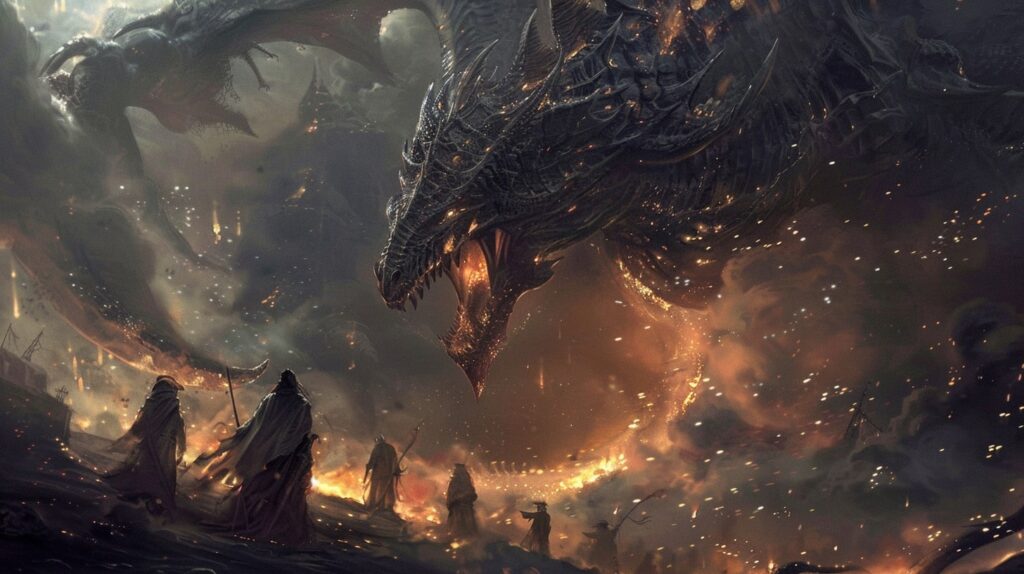
Vault Initialization: Your First Notes
Now for the fun part. Let's create your first connected notes and watch the magic happen.
Start with something central to your world. Maybe your protagonist, maybe the main setting, maybe the central conflict. Don't overthink it.
I'll use a fantasy character as an example:
Create a new note called "Elena Stormwright" using your character template. As you fill it out, use double brackets around anything that could be its own note:
# Elena Stormwright
## Basic Information
- **Full Name**: Elena Stormwright
- **Age**: 28
- **Occupation**: [[Storm Caller]] of the [[Circle of Winds]]
- **Location**: [[Skyhold Citadel]]
- **Status**: Active
## Relationships
- **Family**: Daughter of [[Marcus Stormwright]], sister to [[Kael Stormwright]]
- **Friends**: [[Thane Ironforge]], [[Lyra Brightblade]]
- **Enemies**: [[The Crimson Cabal]]
- **Professional**: Reports to [[Archmaster Voss]]
## Background
Born during the [[Great Storm of 1195]], Elena manifested [[wind magic]] at age twelve...
Every bracketed term is a potential new note. Some will be characters, some locations, some organizations, some events. Don't worry about creating them all right now. Just link as you write.
Now create one of those linked notes. Let's say "Skyhold Citadel":
# Skyhold Citadel
## Overview
Massive fortress built into the peak of [[Mount Skyreach]], serving as headquarters for the [[Circle of Winds]]
## Notable NPCs
- [[Elena Stormwright]] - Storm Caller
- [[Archmaster Voss]] - Current leader
- [[Thane Ironforge]] - Weaponmaster
## Current Events
- Preparation for the [[Windcaller Trials]]
- Investigation of [[The Crimson Cabal]] activities
Notice how Elena automatically appears in the Skyhold note because we linked them. This is bidirectional linking in action.
Create two or three more notes, always linking related concepts. Within minutes, you'll have a small network of connected information that you can navigate in multiple ways.
The Organic Growth Principle
Here's the secret to successful obsidian worldbuilding: let your vault grow organically instead of trying to plan everything in advance.
Start with what excites you most about your world. Create notes as you need them. Link liberally to concepts that don't exist yet (red links are your friends). Don't worry about having "complete" notes early on.
Your world will develop its own internal logic through the linking process. Characters will naturally cluster around their locations and organizations. Events will connect to their participants and consequences. Systems will link to their users and applications.
This organic growth feels more natural than imposed hierarchies and adapts automatically as your world becomes more complex.
The goal isn't perfect organization from day one. The goal is a living system that grows with your creativity and helps you discover connections you never planned.
Now that your vault is set up, let's start creating those first connected notes and watch your world come alive.
Creating Your First Connected Notes
You've got your vault set up, your templates ready, and Obsidian staring at you with that blank note interface. Now what?
This is where most people freeze up. They want to create the perfect character or design the ultimate magic system or map out their entire world history. But here's the truth I learned after building dozens of fictional worlds: perfection is the enemy of connection.
The magic of obsidian worldbuilding happens when you stop trying to create perfect individual notes and start focusing on how those notes relate to each other. Your first goal isn't to write comprehensive character sheets or detailed location guides. It's to create a web of connections that will help you think about your world in new ways.
Let me show you exactly how this works by walking through the creation of an entire interconnected world section, step by step.
Starting Small: The Three-Note Foundation
Every world needs a starting point. I recommend beginning with three connected notes that represent the core of whatever story or concept you're exploring. Usually this means:
- A character (your protagonist, an important NPC, or someone who embodies your world's themes)
- A location (where that character lives, works, or has important experiences)
- A conflict or event (something that drives story and reveals character)
Let's build a fantasy world starting with these three elements. I'll create them in real-time so you can see exactly how the process works.
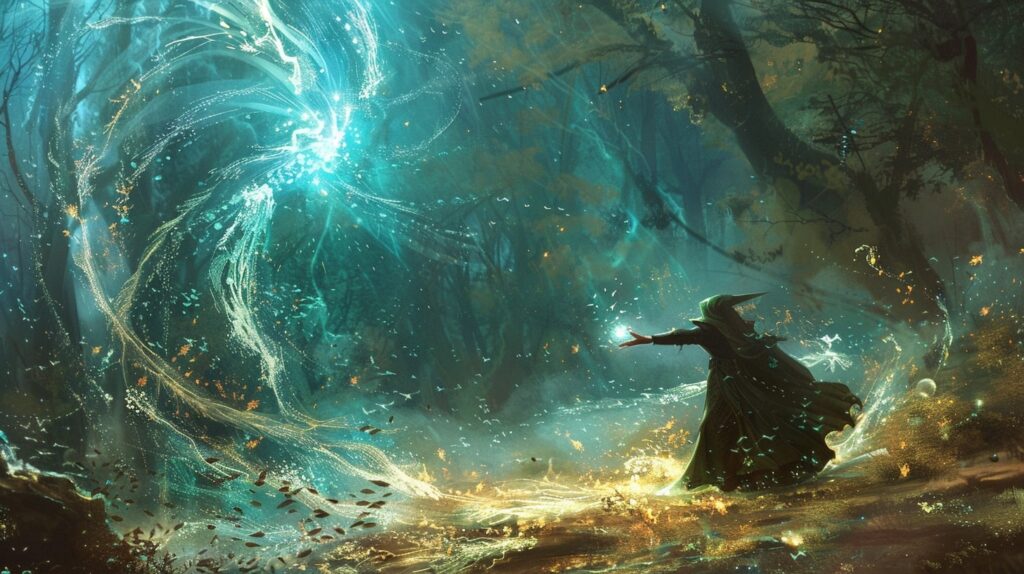
Character Notes That Breathe
I'm going to start with a character named Kira Ashfall. Instead of filling out every field in my character template, I'm going to focus on the details that connect her to the larger world.
# Kira Ashfall
## Basic Information
- **Age**: 24
- **Occupation**: [[Ash Keeper]] for the [[Temple of Eternal Flames]]
- **Location**: [[Emberfall]] (born), currently [[Sanctuary of the Last Flame]]
- **Status**: Novice, recently promoted
## Key Relationships
- **Mentor**: [[High Keeper Valen]] - taught her the sacred rituals
- **Rival**: [[Marcus Stormwind]] - competing for senior keeper position
- **Family**: Parents died in the [[Ashfall Plague]], raised by [[Sister Meredith]]
## Background
Born during the worst outbreak of [[Ashfall Plague]] in recent memory. Her parents, both [[flame tenders]], died protecting the [[Sacred Brazier of Emberfall]] from being extinguished during the chaos. [[Sister Meredith]] found her as a baby, sleeping peacefully next to the brazier despite the toxic ash filling the air.
This immunity to [[ash sickness]] marked her as blessed by [[Pyrion the Eternal]], leading to her training as an [[Ash Keeper]]. She can handle [[consecrated ash]] without protective gear and seems to grow stronger near active flame magic.
## Current Situation
Recently completed her novice trials by successfully tending the [[Sanctuary of the Last Flame]] during the [[Night of Dying Stars]], when all other flames in the region mysteriously began failing. Her success has attracted attention from both the [[High Council of Keepers]] and mysterious figures from the [[Obsidian Cult]].
## Abilities
- Immunity to ash-based toxins and burns
- Can sense the "health" of magical flames
- Unusual strength when near fire magic
- Beginning to manifest [[flame calling]] abilities
## Notes
Something about her immunity suggests she might be connected to the original [[Ashfall Catastrophe]] that created the need for Ash Keepers in the first place. [[High Keeper Valen]] suspects she may be descended from the [[Lost Keepers of Mount Pyra]].
---
Tags: #character #ash-keeper #emberfall #flame-magic
Notice what I'm doing here. Every bracketed term represents a piece of the world that needs its own note. I'm not explaining what Ashfall Plague is in this note—that's what the link is for. I'm not detailing the entire magic system—I'm just establishing Kira's relationship to it.
This creates natural expansion points. Every red link (unresolved link) is a question waiting to be answered, a piece of world waiting to be built.
Location Notes That Live
Now let's create the Sanctuary of the Last Flame, the location where Kira currently works:
# Sanctuary of the Last Flame
## Overview
A fortified monastery built around the last naturally occurring [[eternal flame]] in the [[Northlands]]. The flame has burned continuously for over 800 years, serving as both a pilgrimage site and a training ground for [[Ash Keepers]].
## Physical Description
The sanctuary consists of three concentric circles of stone buildings surrounding the central [[Flame Chamber]]. The inner circle houses the [[sacred flame]], meditation chambers, and quarters for senior [[Ash Keepers]]. The middle circle contains training facilities, workshops for [[ash crafting]], and the [[Hall of Remembrance]]. The outer circle includes guest quarters, stables, and workshops for mundane crafts.
The entire complex is built from [[pyrestone]], a volcanic glass that naturally resists the corrosive effects of [[sacred ash]]. The walls are inscribed with protective [[flame ward symbols]] that glow softly in the presence of blessed fire.
## Key Locations
- **[[Flame Chamber]]**: Heart of the sanctuary, housing the eternal flame
- **[[Hall of Remembrance]]**: Memorial to keepers lost in the [[Ashfall Wars]]
- **[[Novice Quarters]]**: Where [[Kira Ashfall]] lives with other trainees
- **[[High Keeper's Tower]]**: [[High Keeper Valen]]'s residence and private study
- **[[Ash Gardens]]**: Outdoor spaces where [[sacred ash]] is prepared and stored
## Important Residents
- **[[High Keeper Valen]]**: Current leader, 40 years of service
- **[[Kira Ashfall]]**: Promising novice with unusual abilities
- **[[Marcus Stormwind]]**: Senior novice, ambitious and skilled
- **[[Sister Meredith]]**: Elderly keeper, expert in [[ash medicine]]
- **[[Brother Thomas]]**: Sanctuary's historian and keeper of the [[Chronicle of Flames]]
## Current Events
- Preparation for the [[Festival of Rekindling]], the year's most important ceremony
- Investigation of recent [[flame failures]] in nearby settlements
- Increased security due to rumors of [[Obsidian Cult]] activity
- Debate over accepting [[Prince Aldric of Westmarch]] as a political refugee
## History
Founded by [[Saint Pyrria the Flameguard]] after the [[Great Dying of Flames]] nearly extinguished all magical fire in the region. The sanctuary's eternal flame is believed to be a fragment of the original [[Heart of Pyrion]], making it invaluable for training new keepers and performing major rituals.
During the [[Ashfall Wars]], the sanctuary served as a fortress and refugee center. The [[Siege of Last Light]] lasted three months before [[Ash Lord Vex]] was driven back by a coalition of keeper orders.
## Connections
- Connected to [[Emberfall]] by the [[Pilgrims' Road]]
- Sister sanctuary to the [[Flame Monasteries of the South]]
- Source of [[consecrated ash]] for temples throughout the [[Northern Kingdoms]]
- Training center for [[Ash Keepers]] from across the continent
---
Tags: #location #sanctuary #ash-keeper #northlands #eternal-flame
See how this location note creates dozens of new expansion points? The Flame Chamber needs its own note. The Ashfall Wars sound like a major historical event. Prince Aldric represents political intrigue bleeding into our religious setting.
Each of these links represents a thread you can follow when you're ready to develop that aspect of your world. But for now, they exist as connections that give depth and context to the sanctuary.

Event Notes That Drive Story
Now let's create the Night of Dying Stars, the event that established Kira as someone special:
# Night of Dying Stars
## Summary
A mysterious phenomenon where magical flames across the [[Northlands]] began failing simultaneously, lasting from sunset to dawn on the [[Festival of Pyrion]]. Only the [[Sanctuary of the Last Flame]] maintained its fire, thanks to the intervention of novice [[Kira Ashfall]].
## Timeline
- **Sunset**: First reports of flame failures from [[Emberfall]] and surrounding settlements
- **Early evening**: [[Messenger birds]] arrive at the sanctuary with urgent requests for help
- **Midnight**: The sanctuary's own flames begin to waver, including the [[eternal flame]]
- **Deep night**: [[Kira Ashfall]] enters the [[Flame Chamber]] against orders
- **Near dawn**: All flames stabilize and return to normal strength
- **Dawn**: Phenomenon ends as suddenly as it began
## What Happened
As reports of failing flames reached the sanctuary, [[High Keeper Valen]] ordered all keepers to maintain constant vigil over their assigned flames. When even the [[eternal flame]] began to dim, panic spread through the sanctuary.
[[Kira Ashfall]], defying direct orders to remain in the [[Novice Quarters]], entered the [[Flame Chamber]] alone. According to [[Brother Thomas]], who witnessed the event, she approached the failing eternal flame and simply sat beside it in meditation.
Within minutes, the flame began to strengthen. Throughout the night, as long as Kira remained in contact with the eternal flame, all other flames in the region maintained their power. When the phenomenon ended at dawn, she collapsed from exhaustion but the flames had never fully died.
## Theories
Several explanations have been proposed:
**[[High Keeper Valen]]** believes it was a test from [[Pyrion the Eternal]], designed to reveal Kira's true nature as a chosen vessel.
**[[Brother Thomas]]** suspects it was connected to an astronomical event—the unusual alignment of stars that gave the night its name.
**[[Marcus Stormwind]]** privately theorizes it was sabotage by the [[Obsidian Cult]], and that Kira somehow has a connection to them.
**[[Sister Meredith]]** thinks it was related to the [[Ashfall Catastrophe]], suggesting the original disaster may not be as historical as everyone believes.
## Consequences
- [[Kira Ashfall]] promoted from novice to junior keeper ahead of schedule
- Increased attention from the [[High Council of Keepers]]
- Several [[political refugees]] seeking sanctuary, claiming divine intervention
- Reports of [[Obsidian Cult]] scouts near the sanctuary
- [[Marcus Stormwind]]'s resentment toward Kira's sudden promotion
- [[Prince Aldric of Westmarch]] requesting sanctuary, claiming the night convinced him of the keepers' divine mandate
## Mysteries
- Why did the flames fail only in the [[Northlands]]?
- How did Kira know exactly what to do?
- What caused the stellar alignment that coincided with the event?
- Were other regions affected differently?
- Is this connected to historical flame failures?
---
Tags: #event #flame-failure #mystery #kira-ashfall #night-of-dying-stars
This event note does several important things. It establishes Kira as special without making her overpowered. It creates immediate consequences that will drive future stories. It introduces mysteries that can be explored over multiple adventures or chapters.
Most importantly, it connects our three starting elements in meaningful ways. Kira is special because of this event. The sanctuary is important because it was the only place the flames didn't fail. The event itself suggests larger forces at work in the world.
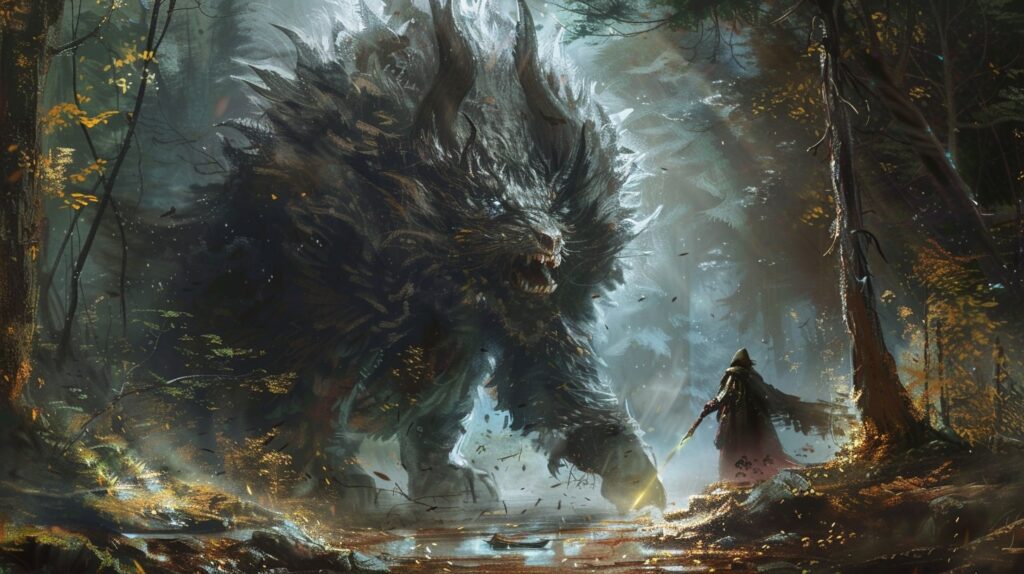
The Ripple Effect: Following the Connections
Now comes the magic moment. Look at your graph view (Graph icon in the ribbon). You should see three connected notes with dozens of potential expansions radiating outward.
This is where obsidian worldbuilding becomes addictive. Each red link is a story waiting to be told. Let's follow a few of them and see how the world grows naturally.
Let's say I'm curious about the Obsidian Cult that keeps getting mentioned. I'll create that note:
# Obsidian Cult
## Overview
A secretive organization that believes magical flames are an aberration that must be extinguished to restore the world's "natural darkness." They view [[Ash Keepers]] as deluded servants of a false god and work actively to undermine flame-based magic.
## Core Beliefs
- The world was meant to exist in eternal darkness
- [[Pyrion the Eternal]] is a usurper god who stole fire from the true darkness
- The [[Ashfall Catastrophe]] was their greatest success
- Magical flames corrupt the natural order and must be eliminated
- Only by returning to darkness can humanity achieve true enlightenment
## Methods
- Infiltration of [[Temple of Eternal Flames]] hierarchy
- Sabotage of [[sacred flames]] and [[ash crafting]] operations
- Recruitment from families affected by [[ash sickness]]
- Spreading doubt about the effectiveness of flame magic
- Assassination of prominent [[Ash Keepers]]
## Organization
Little is known about their internal structure. They operate in small cells called "[[Shadow Circles]]" that rarely communicate with each other. Leadership appears to be regional, with a rumored supreme leader known only as the "[[Void Speaker]]."
## Recent Activity
- Suspected involvement in the [[Night of Dying Stars]]
- Increased recruitment efforts following flame failures
- Rumors of a major operation planned for the [[Festival of Rekindling]]
- Possible infiltration of the [[Sanctuary of the Last Flame]]
## Historical Context
The cult emerged after the [[Ashfall Catastrophe]], initially as a survivor support group for those who lost everything to ash sickness. Over time, their grief transformed into ideology, and they began to see the catastrophe not as a tragedy but as a glimpse of the world's true state.
---
Tags: #organization #antagonist #obsidian-cult #flame-opposition #darkness
Now I have a clear antagonist organization that connects to multiple elements of my world. They have understandable motivations (grief transformed into ideology), clear methods, and obvious conflict potential with my protagonist.
Let's create one more note to show how historical events can add depth. I'll develop the Ashfall Catastrophe:
# Ashfall Catastrophe
## Overview
A magical disaster that occurred 847 years ago, covering most of the [[Eastern Continent]] in toxic ash and extinguishing thousands of magical flames. The event led to the formation of the [[Ash Keeper]] orders and fundamentally changed how flame magic is practiced.
## The Event
On the night of [[the Sunless Dawn]], [[Mount Pyra]], the largest volcanic source of magical flame, erupted with unprecedented violence. Instead of normal lava, the mountain expelled clouds of [[cursed ash]] that spread across hundreds of miles.
The ash didn't just block the sun—it actively drained magical energy from flames it touched. Sacred fires that had burned for centuries were extinguished in minutes. The [[Great Temple of Pyrion]] lost seventeen of its nineteen eternal flames. Entire cities went dark and cold.
## Immediate Consequences
- Death of an estimated 200,000 people from [[ash sickness]]
- Collapse of the [[First Flame Empire]]
- Mass exodus from affected regions
- Complete breakdown of flame-based magic and technology
- Rise of non-magical technologies in affected areas
## Long-term Effects
- Formation of the [[Ash Keeper]] orders to protect surviving flames
- Development of [[ash medicine]] and protective techniques
- Cultural shift from flame abundance to flame preservation
- Rise of the [[Temple of Eternal Flames]] as a political power
- Creation of [[ash-resistant]] architecture and tools
## Theories of Causation
**Natural Disaster**: Some scholars believe it was a purely natural volcanic event amplified by the mountain's magical properties.
**Divine Punishment**: Religious authorities claim it was [[Pyrion the Eternal]]'s judgment against humanity's misuse of flame magic.
**Magical Experiment**: Hidden texts suggest researchers at [[Mount Pyra Observatory]] were attempting to create artificial eternal flames.
**Cult Activity**: The [[Obsidian Cult]] claims credit, though they didn't exist at the time of the disaster.
**Astronomical Event**: [[Brother Thomas]] theorizes it was connected to a rare celestial alignment similar to the [[Night of Dying Stars]].
## Modern Relevance
Recent events, particularly the [[Night of Dying Stars]], have rekindled interest in the catastrophe. Some scholars worry that conditions might be aligning for a similar event. Others believe understanding the original disaster is key to preventing future flame failures.
The discovery of individuals like [[Kira Ashfall]], who show immunity to ash effects, has led to speculation about survivors of the original catastrophe passing down protective traits.
## Mysteries
- What really caused the initial eruption?
- Why did some flames survive when others didn't?
- Are there other survivors with ash immunity?
- Could it happen again?
- What happened to the lost [[Flame Keepers of Mount Pyra]]?
---
Tags: #historical-event #catastrophe #ashfall #mount-pyra #flame-magic #mystery
Look what's happened. We started with three simple notes and now have a complex web of interconnected world elements. Each new note we create suggests several more. The Obsidian Cult connects to the Ashfall Catastrophe. The catastrophe explains why Ash Keepers exist. The Night of Dying Stars might be connected to both historical and current events.
This is the power of connected worldbuilding. Instead of creating isolated information, you're building a living system where every element influences and enriches every other element.
System Notes for Consistency
Now let's create a note that explains how flame magic actually works in this world. This is crucial for maintaining consistency as your world grows:
# Flame Magic
## Basic Principles
Flame magic operates on the principle of "sacred combustion"—the idea that magical flames are not just fire, but manifestations of divine energy from [[Pyrion the Eternal]]. Unlike mundane fire, magical flames can burn indefinitely without fuel and have properties beyond simple heat and light.
## Types of Magical Flames
**[[Eternal Flames]]**: Self-sustaining fires that burn indefinitely once lit. Extremely rare and precious.
**[[Sacred Flames]]**: Blessed fires that burn longer and cleaner than mundane flames. Used in temples and ceremonies.
**[[Working Flames]]**: Everyday magical fires used for heating, cooking, and crafting. Require periodic renewal.
**[[Battle Flames]]**: Aggressive fires used in combat and defense. Burn hot and fast.
**[[Healing Flames]]**: Gentle fires used in medical applications. Burn cool and provide regenerative energy.
## Flame Tending
Only trained [[Ash Keepers]] can safely maintain magical flames for extended periods. The process requires:
- **Attunement**: Establishing a personal connection with the flame
- **Feeding**: Providing the flame with [[consecrated ash]] or magical energy
- **Cleansing**: Removing impurities that weaken the flame's power
- **Shielding**: Protecting the flame from external interference
## Ash and Flame Relationship
[[Sacred ash]] is both a byproduct and a fuel source for magical flames. Properly prepared ash can:
- Sustain flames for extended periods
- Enhance flame properties (heat, light, magical potency)
- Create protective barriers against flame-dampening effects
- Serve as medicine for [[ash sickness]]
## Limitations and Dangers
**Flame Sickness**: Overexposure to magical flames can cause fever, hallucinations, and energy drain.
**Ash Poisoning**: Improperly prepared ash can cause [[ash sickness]], respiratory damage, and magical sensitivity.
**Flame Fatigue**: Tending flames draws on the keeper's personal energy. Extended sessions require rest and recovery.
**Corruption**: Flames can be tainted by negative emotions, hostile magic, or improper handling.
## Ash Immunity
Rare individuals show natural resistance to ash-related effects. [[Kira Ashfall]] is the most documented case in recent history. This immunity seems to be:
- Hereditary but unpredictable
- Enhanced by proximity to magical flames
- Possibly connected to the [[Ashfall Catastrophe]]
- Accompanied by unusual flame sensitivity
## Cultural Significance
Flame magic forms the foundation of religious practice, daily life, and political power throughout the [[Northern Kingdoms]]. The ability to maintain magical flames determines:
- Social status and authority
- Economic prosperity
- Military capabilities
- Spiritual connection to [[Pyrion the Eternal]]
---
Tags: #magic-system #flame-magic #ash-keeper #sacred-ash #pyrion
This system note does something crucial—it establishes the rules that govern how your magic works, ensuring consistency across all your stories and characters. When you write about any character using flame magic, you can reference this note to maintain logical consistency.
The Connection Web: Seeing Your World Grow
By now, you should have at least six interconnected notes with dozens of potential expansion points. Check your graph view again. You'll see how your world has become a web of connected concepts rather than isolated pieces of information.
This is where obsidian worldbuilding becomes genuinely exciting. You're not just creating cool individual elements—you're building a system that generates story possibilities through its connections.
Want to create a new character? Look at your existing notes for gaps that need filling. Maybe the sanctuary needs a cook, or the Obsidian Cult needs a sympathetic member, or Prince Aldric needs a backstory.
Want to develop a new location? Follow the geographic references in your existing notes. What's Emberfall like? How about the Flame Monasteries of the South?
Want to create a new conflict? Look at the tensions already present in your system. Kira vs Marcus for advancement. The sanctuary vs the Obsidian Cult. Political refugees seeking sanctuary. The mystery of the Night of Dying Stars.
Every connection suggests new possibilities. Every note you create makes the existing notes richer and more meaningful.
Your Next Steps: Building Momentum
You now have the foundation for an entire fictional world. Here's how to keep building momentum:
Follow your curiosity. When you look at your notes, which red links make you most curious? Create those notes next.
Ask "what if" questions. What if the Obsidian Cult is right about something? What if Kira's immunity has a dark side? What if the eternal flame goes out?
Create tension through connection. Look for ways existing elements can complicate each other. Maybe Marcus has family members in the Obsidian Cult. Maybe Prince Aldric's political troubles are connected to flame failures in his kingdom.
Don't aim for completeness. Your goal isn't to define every aspect of your world immediately. It's to create a rich network of connections that will suggest new developments naturally.
Trust the process. As your vault grows, you'll discover patterns and connections you never planned. Follow these emergent storylines—they're often more interesting than anything you could design deliberately.
The beautiful thing about obsidian worldbuilding is that it grows with your creativity instead of constraining it. Every note you create makes every other note more interesting. Every connection you make suggests new connections.
Your world isn't just a setting anymore. It's a living system that will surprise you with its complexity and depth. And we've only just begun to explore what's possible when you let your fictional worlds connect naturally through Obsidian's powerful linking system.
Advanced Obsidian Worldbuilding Techniques
You've mastered the basics of connected notes and watched your first world come alive through Obsidian's linking system. Now it's time to level up. The techniques in this section will transform your vault from a collection of connected notes into a sophisticated worldbuilding machine that practically builds itself.
These aren't just cool tricks (though some of them are pretty cool). They're battle-tested methods I've developed through years of building complex fictional worlds. Some came from happy accidents, others from frustrating limitations that forced creative solutions.
The goal isn't to use every technique in every vault. Pick the ones that solve problems you're actually facing and ignore the rest until you need them.
Maps of Content: Your World's Table of Contents
As your vault grows beyond fifty notes, you'll start losing track of what you've created. Individual notes are easy to find, but understanding the relationships between regions, time periods, or themes becomes harder.
This is where Maps of Content (MOCs) save your sanity. Think of them as dynamic table of contents that organize related notes while preserving the flexible linking that makes Obsidian powerful.
Regional MOCs: Geographic Organization
Let's create a regional MOC for the Northern Kingdoms from our previous examples:
# Northern Kingdoms - Regional Overview
## Major Settlements
- [[Emberfall]] - Ancient city, birthplace of many [[Ash Keepers]]
- [[Sanctuary of the Last Flame]] - Primary training center for flame magic
- [[Ironhaven]] - Major port city and trade hub
- [[Thornwatch]] - Border fortress, frequent [[Obsidian Cult]] activity
- [[Ashford]] - Agricultural center, still recovering from recent flame failures
## Political Structure
- [[High Council of Keepers]] - Religious authority over flame magic
- [[Northern Lords Alliance]] - Secular political coalition
- [[Prince Aldric of Westmarch]] - Seeking political asylum
- [[King Aldwin III]] - Aging monarch, declining authority
- [[Trade Guilds of Ironhaven]] - Economic powerhouse
## Geography & Climate
- [[Mount Pyra]] - Site of the original [[Ashfall Catastrophe]]
- [[Pilgrims' Road]] - Sacred route connecting major temples
- [[Whispering Woods]] - Forest between Emberfall and the Sanctuary
- [[Coldwater Bay]] - Ironhaven's natural harbor
- [[Ash Barrens]] - Still-contaminated lands from the catastrophe
## Current Conflicts
- [[Obsidian Cult]] infiltration and sabotage
- Political instability following the [[Night of Dying Stars]]
- Economic pressure from flame failures affecting trade
- Refugee crisis as people flee affected regions
- Religious debates over [[Kira Ashfall]]'s rapid advancement
## Historical Significance
- Birthplace of the [[Ash Keeper]] tradition
- Site of the [[Ashfall Wars]] 300 years ago
- Center of the [[First Flame Empire]] before the catastrophe
- Cultural heartland of [[Pyrion the Eternal]] worship
## Key Resources
- [[Sacred ash]] deposits near Mount Pyra
- [[Pyrestone]] quarries for flame-resistant construction
- [[Ironwood]] forests, naturally fire-resistant
- Deep water ports at Ironhaven and Coldwater Bay
- Ancient [[flame libraries]] with historical knowledge
## Notable Bloodlines
- [[House Stormwright]] - Traditional flame keeper family
- [[House Ironforge]] - Weaponsmith dynasty
- [[House Brightblade]] - Military nobility
- [[House Ashworth]] - Merchant princes of Emberfall
## Transportation Networks
- [[Pilgrims' Road]] - Primary north-south route
- [[King's Highway]] - East-west commercial route
- [[Ash Runner Routes]] - Emergency supply lines for flame materials
- [[Sanctuary Paths]] - Network of hidden trails between temples
## Seasonal Patterns
- **Spring**: [[Festival of Rekindling]], major pilgrimage season
- **Summer**: Trade season, harvest of [[sacred ash]]
- **Autumn**: [[Remembrance Season]], honoring fallen keepers
- **Winter**: [[Long Watching]], constant flame tending during dark months
## Population & Demographics
- **Total**: Approximately 2.3 million
- **Urban**: 35% (concentrated in Ironhaven and Emberfall)
- **Rural**: 65% (farmers, miners, foresters)
- **[[Ash Keepers]]**: ~3,000 active, ~15,000 affiliated
- **Refugees**: Growing population from flame-affected regions
---
*Last updated: [Current Date]*
*See also: [[Southern Kingdoms MOC]], [[Eastern Reaches MOC]]*
Tags: #moc #northern-kingdoms #regional-overview
This MOC does several powerful things. It gives you an instant overview of everything related to the Northern Kingdoms without clicking through dozens of individual notes. It reveals gaps in your worldbuilding (maybe you need more details about House Ironforge). It shows relationships between elements that might not be obvious from individual notes.
Most importantly, it's dynamic. As you create new notes related to the Northern Kingdoms, you can add them to this MOC. As relationships change, you can update the organization.
Thematic MOCs: Organizing by Concept
Regional MOCs organize by geography, but thematic MOCs organize by concept or system. Here's a thematic MOC for flame magic across your entire world:
# Flame Magic - System Overview
## Core Mechanics
- [[Flame Magic]] - Basic principles and rules
- [[Sacred Ash]] - Primary magical component
- [[Eternal Flames]] - Self-sustaining magical fires
- [[Flame Tending]] - Techniques for maintaining magical fires
- [[Ash Immunity]] - Rare resistance to magical toxins
## Practitioners & Organizations
### [[Ash Keeper]] Orders
- [[Sanctuary of the Last Flame]] - Northern training center
- [[Flame Monasteries of the South]] - Southern tradition
- [[Temple of Eternal Flames]] - Primary religious authority
- [[Circle of Winds]] - Specialized storm flame keepers
### Opposition Groups
- [[Obsidian Cult]] - Flame magic opposition
- [[Shadow Circles]] - Cult operational cells
- [[Void Speaker]] - Mysterious cult leader
## Historical Development
- [[Ashfall Catastrophe]] - Original magical disaster
- [[Great Dying of Flames]] - Historical flame failures
- [[Ashfall Wars]] - Conflicts over magical resources
- [[Night of Dying Stars]] - Recent mysterious event
## Geographic Distribution
### Strong Flame Magic Regions
- [[Northern Kingdoms]] - Traditional heartland
- [[Sacred Valley]] - Ancient flame sources
- [[Pyrion's Rest]] - Site of divine flame appearance
### Flame-Affected Areas
- [[Ash Barrens]] - Still contaminated from catastrophe
- [[Dead Flame Territories]] - Areas with permanent flame failures
- [[Contested Zones]] - Regions with unstable flame magic
## Notable Practitioners
### Current Generation
- [[Kira Ashfall]] - Prodigy with ash immunity
- [[High Keeper Valen]] - Senior religious authority
- [[Marcus Stormwind]] - Ambitious young keeper
- [[Sister Meredith]] - Expert in ash medicine
### Historical Figures
- [[Saint Pyrria the Flameguard]] - Founder of sanctuary tradition
- [[Ash Lord Vex]] - Corrupted keeper turned warlord
- [[The Lost Keepers of Mount Pyra]] - Disappeared during catastrophe
## Cultural Impact
- [[Festival of Rekindling]] - Major religious celebration
- [[Flame Ward Symbols]] - Protective architectural elements
- [[Ash Medicine]] - Healing practices using sacred ash
- [[Pilgrimage Traditions]] - Sacred journeys to flame sites
## Current Challenges
- Increasing flame failures across multiple regions
- [[Obsidian Cult]] infiltration of keeper orders
- Political pressure on religious authorities
- Mystery of individuals with ash immunity
- Resource scarcity as ash deposits are depleted
## Research Frontiers
- Connection between flame failures and astronomical events
- Genetic basis of ash immunity
- Historical accuracy of catastrophe accounts
- Potential for artificial eternal flame creation
- Relationship between flame magic and other magical systems
## Cross-System Connections
- [[Weather Magic]] - Storm flames and wind calling
- [[Earth Magic]] - Volcanic connections and pyrestone
- [[Divine Magic]] - [[Pyrion the Eternal]] worship
- [[Political Systems]] - Flame magic's role in governance
---
*See also: [[Regional MOCs]], [[Character Relationship Networks]], [[Timeline Overview]]*
Tags: #moc #flame-magic #magical-systems #cross-reference
Thematic MOCs are incredibly powerful for maintaining consistency. When you're writing a scene involving flame magic, this note gives you instant access to every relevant element across your entire world. You can see how the magic system connects to history, geography, politics, and individual characters.
Timeline MOCs: Organizing by History
For worlds with complex histories, timeline MOCs organize events chronologically while preserving thematic connections:
# World Timeline - Major Events
## Ancient History (1000+ years ago)
- **~2000 years ago**: [[First Appearance of Pyrion]] - Flame magic introduced to the world
- **1847 years ago**: [[Founding of the First Flame Empire]] - Political unification under flame magic
- **1200 years ago**: [[Age of Burning Skies]] - Peak of flame magic civilization
- **900 years ago**: [[The Starfall Wars]] - Conflicts with non-magical kingdoms
## Classical Period (500-1000 years ago)
- **847 years ago**: [[Ashfall Catastrophe]] - Mount Pyra eruption, magical disaster
- **846-800 years ago**: [[The Dark Years]] - Flame magic nearly extinct
- **799 years ago**: [[Saint Pyrria's Pilgrimage]] - Beginning of keeper traditions
- **750-600 years ago**: [[Reconstruction Era]] - Rebuilding of flame-based civilization
- **580 years ago**: [[Formation of the High Council]] - Religious authority established
## Medieval Period (200-500 years ago)
- **487-430 years ago**: [[Ashfall Wars]] - Resource conflicts over sacred ash
- **429 years ago**: [[Peace of Burning Waters]] - End of major flame wars
- **380 years ago**: [[Great Schism]] - Religious split in keeper orders
- **320 years ago**: [[Reunification Council]] - Healing of religious divisions
- **250 years ago**: [[The Plague of Dimming]] - Mystery flame failures across the south
## Modern Era (Last 200 years)
- **180 years ago**: [[Industrial Revolution]] - Non-magical technology development
- **120 years ago**: [[The Keeper Reforms]] - Modernization of training methods
- **87 years ago**: [[War of the Dying Sun]] - Last major international conflict
- **45 years ago**: [[Discovery of the Eastern Flames]] - New magical resources found
- **23 years ago**: [[The Ashfall Plague]] - Disease outbreak, [[Kira Ashfall]] born during
## Recent History (Last 10 years)
- **3 years ago**: [[Mysterious Flame Failures Begin]] - Current crisis starts
- **1 year ago**: [[Prince Aldric's Exile]] - Political refugee situation
- **6 months ago**: [[Obsidian Cult Resurgence]] - Increased activity detected
- **2 months ago**: [[Night of Dying Stars]] - Major magical event
- **Current**: [[Festival of Rekindling Preparations]] - Upcoming major ceremony
## Cyclical Events
### Annual Celebrations
- **Spring Equinox**: [[Festival of Rekindling]]
- **Summer Solstice**: [[Day of Sacred Ash]]
- **Autumn Equinox**: [[Remembrance of the Lost]]
- **Winter Solstice**: [[Night of Eternal Watching]]
### Periodic Phenomena
- **Every 7 years**: [[Pilgrimage of Seven Flames]]
- **Every 23 years**: [[Ash Moon Alignment]] - Enhanced flame magic
- **Every 89 years**: [[Star Crown Conjunction]] - Astronomical significance
- **Every 300 years**: [[Great Rekindling]] - Major religious ceremony
## Future Projections
- **Next month**: [[Festival of Rekindling]] - Potential Obsidian Cult target
- **Next year**: [[Prince Aldric's Trial]] - Political resolution needed
- **Within 5 years**: [[Ash Reserves Depletion]] - Resource crisis approaching
- **Unknown timeline**: [[Second Catastrophe Prevention]] - If astronomical theory proves correct
---
*Use this timeline as reference for dating events and understanding historical context*
Tags: #moc #timeline #historical-events #chronology
Timeline MOCs help you maintain chronological consistency and identify historical patterns. They also reveal opportunities for recurring themes or cyclical events that add depth to your world's history.

Advanced Tagging Strategies That Scale
Basic tags are useful, but advanced tagging strategies turn your vault into a queryable database. The key is developing a hierarchical system that grows with your world without becoming unwieldy.
Hierarchical Tag Framework
Here's a tagging system that works for complex worlds:
## Content Type Tags
#character #location #event #organization #system #resource
## Status Tags
#idea #draft #complete #needs-review #archived
## Thematic Tags
#flame-magic #political-intrigue #religious-conflict #historical-mystery #romance #adventure
## Geographic Tags
#northern-kingdoms #southern-reaches #eastern-provinces #western-territories
#emberfall #sanctuary #ironhaven #ashford #thornwatch
## Temporal Tags
#ancient-history #classical-period #medieval-era #modern-times #current-events #future-plans
## Character-Specific Tags
#protagonist #antagonist #ally #neutral #mentor #love-interest #comic-relief
## Relationship Tags
#family #friendship #rivalry #romance #mentor-student #political-alliance #enemy
## Plot Tags
#main-plot #subplot #backstory #world-building #character-development #foreshadowing
## Development Tags
#needs-expansion #placeholder #contradiction-check #cross-reference #inspiration
Use these tags in combination to create powerful queries. For example:
#character AND #northern-kingdoms AND #flame-magicshows all flame magic users in the Northern Kingdoms#event AND #historical-mystery AND #needs-expansionshows historical events that need more development#location AND #political-intrigue AND #current-eventsreveals politically active locations
Smart Tag Queries with Dataview
Dataview turns your tags into dynamic organizational tools. Here are some powerful queries for worldbuilders:
## Characters by Region
```dataview
TABLE summary as "Description", status as "Status"
FROM #character
WHERE contains(tags, "#northern-kingdoms")
SORT file.name ASC
Incomplete World Elements
LIST
FROM (#idea OR #draft OR #needs-expansion)
SORT file.mtime DESC
Current Plot Threads
TABLE without ID
file.link as "Element",
choice(contains(tags, "#main-plot"), "🔥", choice(contains(tags, "#subplot"), "📖", "📝")) as "Priority",
summary as "Description"
FROM (#current-events OR #main-plot OR #subplot)
WHERE !contains(tags, "#complete")
SORT choice(contains(tags, "#main-plot"), 0, choice(contains(tags, "#subplot"), 1, 2))
Historical Timeline
TABLE without ID
date as "Date",
file.link as "Event",
summary as "Summary"
FROM #event
WHERE date
SORT date ASC
Character Relationship Web
TABLE without ID
file.link as "Character",
relationships as "Key Relationships",
current-location as "Location"
FROM #character
WHERE relationships
SORT current-location, file.name
These queries create living documents that update automatically as you add and modify notes. Your character list stays current without manual maintenance. Your plot tracking shows new developments automatically.
## Template Mastery: Automation That Thinks
Advanced templates do more than provide structure—they actively help you build better worlds through smart prompts, automatic cross-referencing, and consistency checking.
### Dynamic Character Templates
Here's a character template that adapts based on your responses:
```markdown
# <% tp.file.title %>
## Basic Information
- **Full Name**: <% tp.system.prompt("Character's full name") %>
- **Age**: <% tp.system.prompt("Age") %>
- **Species**: <% tp.system.suggest(["Human", "Elf", "Dwarf", "Halfling", "Other"], "Species?") %>
- **Occupation**: <% tp.system.prompt("Occupation/Role") %>
- **Current Location**: [[<% tp.system.prompt("Where do they currently live/work?") %>]]
<%
let characterType = await tp.system.suggest(["Protagonist", "Antagonist", "Supporting", "Background"], "Character importance?");
let tags = ["#character"];
if (characterType === "Protagonist") {
tags.push("#protagonist", "#main-plot");
} else if (characterType === "Antagonist") {
tags.push("#antagonist", "#conflict");
} else if (characterType === "Supporting") {
tags.push("#supporting");
} else {
tags.push("#background");
}
let region = await tp.system.suggest(["Northern Kingdoms", "Southern Reaches", "Eastern Provinces", "Western Territories"], "Primary region?");
tags.push("#" + region.toLowerCase().replace(" ", "-"));
let magicUser = await tp.system.suggest(["Yes", "No", "Unknown"], "Magic user?");
if (magicUser === "Yes") {
let magicType = await tp.system.suggest(["Flame Magic", "Weather Magic", "Earth Magic", "Divine Magic", "Other"], "Type of magic?");
tags.push("#" + magicType.toLowerCase().replace(" ", "-"));
}
%>
## Physical Description
<% tp.system.prompt("What do they look like? Distinctive features?") %>
## Personality & Psychology
- **Core Motivation**: <% tp.system.prompt("What drives them?") %>
- **Greatest Fear**: <% tp.system.prompt("What do they fear most?") %>
- **Fatal Flaw**: <% tp.system.prompt("What weakness might destroy them?") %>
- **Best Quality**: <% tp.system.prompt("What's their greatest strength?") %>
<% if (characterType === "Protagonist" || characterType === "Antagonist") { %>
## Character Arc
- **Starting Point**: <% tp.system.prompt("Where do they begin emotionally/psychologically?") %>
- **Growth Challenge**: <% tp.system.prompt("What must they overcome or learn?") %>
- **Potential Ending**: <% tp.system.prompt("Where might their arc lead?") %>
<% } %>
## Relationships
- **Family**: <% tp.system.prompt("Family members (create [[links]] for important ones)") %>
- **Friends**: <% tp.system.prompt("Close friends and allies") %>
- **Enemies**: <% tp.system.prompt("Rivals and antagonists") %>
- **Professional**: <% tp.system.prompt("Work relationships and colleagues") %>
<% if (magicUser === "Yes") { %>
- **Magical**: <% tp.system.prompt("Teachers, students, or magical connections") %>
<% } %>
## Background
<% tp.system.prompt("Personal history, formative experiences, important events") %>
<% if (characterType === "Protagonist" || characterType === "Supporting") { %>
## Goals & Obstacles
- **Short-term Goals**: <% tp.system.prompt("What do they want right now?") %>
- **Long-term Dreams**: <% tp.system.prompt("What do they ultimately hope to achieve?") %>
- **Major Obstacles**: <% tp.system.prompt("What's preventing them from getting what they want?") %>
<% } %>
<% if (magicUser === "Yes") { %>
## Magical Abilities
- **Type**: [[<% magicType %>]]
- **Skill Level**: <% tp.system.suggest(["Novice", "Apprentice", "Journeyman", "Expert", "Master"], "Magical skill level?") %>
- **Specialization**: <% tp.system.prompt("What's their magical specialty or focus?") %>
- **Limitations**: <% tp.system.prompt("What limits their magical abilities?") %>
<% } %>
## Story Role
<% tp.system.prompt("How does this character serve the story? What function do they fulfill?") %>
## Development Notes
*Ideas for future development, unresolved questions, potential plot hooks*
## Cross-References
*Other notes that mention or connect to this character*
---
**Created**: <% tp.date.now() %>
**Status**: <% tp.system.suggest(["Idea", "Draft", "Complete"], "Development status?") %>
Tags: <% tags.join(" ") %>
This template does several smart things:
- Adapts questions based on character type (protagonists get different prompts than background characters)
- Automatically generates appropriate tags based on your responses
- Creates links to locations and magic systems mentioned
- Includes different sections based on whether the character uses magic
- Maintains consistency in how you track character information
Event Templates with Automatic Cross-Referencing
Historical events need to connect properly to characters, locations, and consequences:
# <% tp.file.title %>
<%
let eventType = await tp.system.suggest(["Historical Event", "Current Event", "Future Event", "Recurring Event"], "What type of event?");
let scale = await tp.system.suggest(["Personal", "Local", "Regional", "National", "Continental", "World"], "What scale of impact?");
let timeframe = await tp.system.suggest(["Ancient History", "Classical Period", "Medieval Era", "Modern Times", "Current Events"], "When does this occur?");
let tags = ["#event"];
tags.push("#" + eventType.toLowerCase().replace(" ", "-"));
tags.push("#" + scale.toLowerCase());
tags.push("#" + timeframe.toLowerCase().replace(" ", "-"));
%>
## Summary
<% tp.system.prompt("What happened in one or two sentences?") %>
## Key Details
- **Date**: <% tp.system.prompt("When did this happen? (Use YYYY-MM-DD format if specific)") %>
- **Duration**: <% tp.system.prompt("How long did it last?") %>
- **Location**: [[<% tp.system.prompt("Where did this take place?") %>]]
- **Scale**: <% scale %>
<% if (eventType === "Historical Event" || eventType === "Current Event") { %>
## Background & Causes
<% tp.system.prompt("What led to this event? What conditions made it possible?") %>
<% } %>
## Key Participants
<% tp.system.prompt("Who were the main people involved? Use [[links]] for important characters") %>
## What Happened
<% tp.system.prompt("Detailed description of the events") %>
## Immediate Consequences
<% tp.system.prompt("What were the direct, short-term results?") %>
<% if (eventType === "Historical Event") { %>
## Long-term Impact
<% tp.system.prompt("How did this event change the world over time?") %>
## Historical Interpretation
<% tp.system.prompt("How do different groups view this event? Any controversies?") %>
<% } %>
<% if (eventType === "Current Event" || eventType === "Future Event") { %>
## Ongoing Developments
<% tp.system.prompt("What's still unfolding? What might happen next?") %>
<% } %>
<% if (eventType === "Recurring Event") { %>
## Recurrence Pattern
- **Frequency**: <% tp.system.prompt("How often does this event occur?") %>
- **Variations**: <% tp.system.prompt("How does it change each time?") %>
- **Cultural Significance**: <% tp.system.prompt("What does this event mean to people?") %>
<% } %>
## Affected Locations
<% tp.system.prompt("What places were affected by this event?") %>
## Affected Organizations
<% tp.system.prompt("What groups, factions, or institutions were impacted?") %>
## Plot Hooks & Story Potential
<% tp.system.prompt("How could this event create story opportunities?") %>
## Cross-References
*Other events, characters, or locations connected to this*
## Research Notes
*Questions to explore, contradictions to resolve, details to develop*
---
**Created**: <% tp.date.now() %>
**Event Type**: <% eventType %>
**Scale**: <% scale %>
**Status**: <% tp.system.suggest(["Idea", "Draft", "Complete"], "Development status?") %>
Tags: <% tags.join(" ") %>
This template ensures every event connects properly to the broader world while maintaining consistency in how you track cause and effect.
Visual Worldbuilding with Canvas
Obsidian's Canvas feature transforms abstract connections into visual understanding. For worldbuilders, this means creating visual maps of relationships, hierarchies, and systems that complement your text notes.
Political Relationship Maps
Create a Canvas showing the political structure of your world:
- Start with major powers - Place notes for kingdoms, empires, or major organizations
- Add relationship lines - Draw connections showing alliances, conflicts, trade relationships
- Use colors for relationship types - Red for conflicts, green for alliances, blue for trade
- Include key individuals - Add character notes near their associated organizations
- Show influence flows - Use arrows to indicate who has power over whom
This visual approach reveals patterns that aren't obvious in text. You might discover that one character is connected to too many organizations, or that a region lacks sufficient political complexity.
Timeline Flows
Create visual timelines showing cause and effect:
- Arrange events chronologically from left to right
- Connect with consequence arrows showing how events influence each other
- Group by theme or region using different Canvas areas
- Include character lifespans as horizontal bars showing when people lived
- Mark recurring patterns that emerge across different time periods
Character Relationship Webs
Map complex character relationships visually:
- Central character in the middle of the Canvas
- Relationship types shown with different colored connections
- Relationship strength indicated by line thickness
- Group clusters of characters who know each other
- Cross-cluster connections revealing important bridge characters
Visual relationship maps help you identify characters who are under-connected or over-connected to your story network.
Automation and Scripting for Worldbuilders
For power users, Obsidian's scripting capabilities can automate repetitive worldbuilding tasks.
Automatic Cross-Referencing
Use Templater scripts to automatically create "Connections" sections in notes:
<%*
// Find all notes that link to the current note
const currentFile = tp.file.title;
const allFiles = app.vault.getMarkdownFiles();
const backlinks = [];
for (let file of allFiles) {
if (file.basename === currentFile) continue;
const content = await app.vault.read(file);
if (content.includes(`[[${currentFile}]]`)) {
backlinks.push(`[[${file.basename}]]`);
}
}
if (backlinks.length > 0) {
tR += "## Connections\n";
tR += "This note is referenced by:\n";
for (let link of backlinks) {
tR += `- ${link}\n`;
}
}
%>
Random Name Generation
Create templates that generate names from predefined lists:
<%*
const maleNames = ["Aeron", "Bran", "Caius", "Dorian", "Erik"];
const femaleNames = ["Aria", "Brenna", "Cira", "Dara", "Elara"];
const surnames = ["Ashfall", "Brightblade", "Ironforge", "Stormwind", "Thornwick"];
const gender = await tp.system.suggest(["Male", "Female", "Other"], "Character gender?");
let firstName;
if (gender === "Male") {
firstName = maleNames[Math.floor(Math.random() * maleNames.length)];
} else if (gender === "Female") {
firstName = femaleNames[Math.floor(Math.random() * femaleNames.length)];
} else {
const allNames = [...maleNames, ...femaleNames];
firstName = allNames[Math.floor(Math.random() * allNames.length)];
}
const lastName = surnames[Math.floor(Math.random() * surnames.length)];
const fullName = `${firstName} ${lastName}`;
tR += `**Generated Name**: ${fullName}\n`;
%>
Consistency Checking
Create queries that identify potential inconsistencies:
## Potential Character Age Issues
```dataview
TABLE age, birth-year, current-year
FROM #character
WHERE age AND birth-year AND (current-year - birth-year != age)
Characters Without Locations
LIST
FROM #character
WHERE !current-location
Events Without Dates
LIST
FROM #event
WHERE !date
Orphaned Notes (No Incoming Links)
LIST
FROM ""
WHERE length(file.inlinks) = 0 AND !contains(file.path, "Templates")
These automated checks help maintain world consistency as your vault grows larger and more complex.
## Performance Optimization for Large Vaults
As your world grows beyond 1000 notes, you'll need to optimize for performance:
### Vault Organization Strategies
- **Use folders sparingly** - Too many nested folders slow down search
- **Optimize images** - Compress large images that slow down graph view
- **Archive old notes** - Move completed story notes to separate vaults
- **Regular maintenance** - Clean up duplicate or obsolete notes monthly
### Query Optimization
- **Limit Dataview queries** - Too many complex queries slow down note loading
- **Use specific tags** - Narrow queries run faster than broad ones
- **Cache heavy queries** - Put complex Dataview results in dedicated notes
- **Split large MOCs** - Break huge overview notes into smaller, focused ones
### Plugin Management
- **Disable unused plugins** - Each plugin adds processing overhead
- **Update regularly** - Newer versions often include performance improvements
- **Monitor resource usage** - Use Obsidian's developer tools to identify slow plugins
The goal is maintaining the creative flow that makes obsidian worldbuilding so powerful while preventing technical issues from disrupting your creative process.
These advanced techniques transform Obsidian from a simple note-taking app into a sophisticated worldbuilding environment. Pick the techniques that solve problems you're actually facing, implement them gradually, and watch your fictional worlds develop complexity and depth that would be impossible with traditional methods.
Your vault becomes more than organization—it becomes a creative amplifier that helps you discover aspects of your world you never consciously planned.
Avoiding Common Pitfalls
I've made every mistake you can possibly make with Obsidian worldbuilding. I've over-linked everything until my graph view looked like a spider had a seizure. I've created forty-seven different character templates before writing a single character. I've spent three hours organizing tags instead of actually building my world.
These mistakes aren't just time-wasters—they're creativity killers. When your tools become more complex than your creative process, something's gone wrong. The whole point of obsidian worldbuilding is to amplify your creativity, not bury it under organizational complexity.
Let me save you from the most common traps that trip up new (and experienced) Obsidian worldbuilders. These aren't just theoretical problems—they're the real issues I see when helping writers and game masters set up their vaults.
The Over-Linking Disease
This is the big one. The mistake that ruins more Obsidian worldbuilding projects than any other. You discover the power of linking and suddenly everything becomes a link.
Here's what over-linking looks like in practice:
# [[Kira Ashfall]]
[[Kira]] is a [[young woman]] who works as an [[Ash Keeper]] at the [[Sanctuary of the Last Flame]]. She has [[brown hair]] and [[blue eyes]] and wears the traditional [[ash keeper robes]]. She carries an [[ash keeper staff]] and uses [[flame magic]] to tend the [[sacred flames]].
Her [[mentor]] is [[High Keeper Valen]], who taught her the [[ancient rituals]] of [[flame tending]]. She lives in the [[novice quarters]] with other [[young ash keepers]] including her [[rival]] [[Marcus Stormwind]].
This looks thorough, right? Wrong. It's unusable.
Not every noun needs to be a link. "Young woman" doesn't need its own note. "Brown hair" and "blue eyes" definitely don't. "Ancient rituals" is too vague to be useful. "Young ash keepers" is a category, not a specific thing.
Here's the same passage with proper linking:
# Kira Ashfall
Kira is a young woman who works as an [[Ash Keeper]] at the [[Sanctuary of the Last Flame]]. She has brown hair and blue eyes and wears the traditional ash keeper robes. She carries a standard keeper staff and uses [[flame magic]] to tend sacred flames.
Her mentor is [[High Keeper Valen]], who taught her the fundamental rituals of flame tending. She lives in the novice quarters with other trainees including her rival [[Marcus Stormwind]].
Much cleaner. The links go to specific, important concepts that deserve their own notes. Physical descriptions stay as descriptions. Generic terms remain unlinked.
The Link Quality Test
Before creating any link, ask yourself:
- Would this concept benefit from its own detailed note? If "brown hair" doesn't need explanation, don't link it.
- Is this specific enough to be useful? "Ancient rituals" is too vague. "Ritual of Sacred Binding" is specific enough to link.
- Will I reference this from multiple places? If only one character has blue eyes, don't link eye color. If eye color indicates magical heritage, then link it.
- Does this connection add meaning? Links should reveal relationships, not just highlight nouns.
Quality beats quantity every time. Fifty meaningful links create a rich world web. Five hundred random links create noise that obscures the actual connections.
The Red Link Trap
Red links (unresolved links) are powerful tools for capturing ideas quickly. But they can become a trap if you let them accumulate without purpose.
I've seen vaults with hundreds of red links pointing to notes like "the thing" or "that place I thought of" or "magic sword maybe." These aren't helpful. They're just noise.
Good red links are specific and actionable: [[Crimson Blade of House Ironforge]], [[The Siege of Ashford]], [[Marcus Stormwind's Secret]]. Bad red links are vague and forgettable: [[important artifact]], [[big battle]], [[character secret]].
When you create a red link, make sure future-you will understand what it means. If you can't remember what "the artifact" refers to after a week, you'll never develop it into a proper note.
Template Proliferation Madness
Templates are incredibly useful, but they can become an obsession that prevents actual worldbuilding. I once spent two weeks creating the "perfect" character template with fields for everything from shoe size to favorite breakfast food.
You know how many characters I created with that template? Zero. It was so complex that starting a new character felt like filling out tax forms.
The Template Trap Signs
You're falling into template proliferation if:
- You have more templates than completed notes
- Your templates have more than 20 fields
- You spend more time refining templates than using them
- You create templates for templates
- You delay worldbuilding until your templates are "perfect"
The Three-Template Rule
Start with three basic templates:
- Character Template - Name, role, location, key relationships, brief description
- Location Template - Name, description, important NPCs, connections to other places
- Event Template - What happened, when, who was involved, consequences
That's it. Build your world with these three templates. Add more only when you discover you're repeatedly creating the same type of note that doesn't fit the basic three.
Resist the urge to create templates for "noble characters" vs "commoner characters" vs "antagonist characters." One character template with optional sections works better than three rigid templates.
Template Evolution, Not Revolution
Templates should evolve as you learn what information you actually need. Start simple, then add fields when you discover you're consistently missing important information.
Don't try to anticipate every possible need. You can't predict what information will matter until you start writing stories in your world.
The Perfect Organization Fallacy
This is the belief that you need to organize everything perfectly before you can start creating. I see this constantly with new Obsidian users who spend weeks designing folder structures and tag systems without creating a single piece of actual world content.
Perfect organization doesn't exist. It's an illusion that prevents you from doing the actual work of worldbuilding.
The Endless Reorganization Cycle
Here's how this trap works:
- You create a folder structure
- You start making notes
- You realize the structure doesn't fit your actual creative process
- You reorganize everything
- You start making notes again
- You discover new organizational needs
- Back to step 4, forever
I've seen people reorganize the same 20 notes six different ways instead of creating 21st note. This is procrastination disguised as productivity.
The Messy Middle Approach
Accept that your vault will be messy during active development. That's fine. That's normal. That's healthy.
The goal isn't perfect organization—it's useful organization. If you can find what you need when you need it, your organization is good enough.
Start building your world with minimal organization. Let structure emerge from your actual creative patterns, not from what you think those patterns should be.
Tag System Bloat
Tags are supposed to make finding information easier. But too many tags make everything harder to find, not easier.
The Tag Explosion Problem
This is what happens when tagging gets out of control:
#character #protagonist #main-character #hero #young-adult #female #magic-user #flame-magic #ash-keeper #novice #brown-hair #blue-eyes #orphan #sanctuary-resident #northern-kingdoms #emberfall-native #valen-student #marcus-rival #flame-immunity #ashfall-plague-survivor #future-leader #chosen-one #pyrion-blessed
That's 23 tags for one character. It's not helpful organization—it's chaos.
Compare that to useful tagging:
#character #protagonist #ash-keeper #flame-magic #northern-kingdoms
Five tags that capture the essential categorization without drowning the important information in details.
The Tag Hierarchy That Actually Works
Keep your tag system simple:
Content Types: #character, #location, #event, #organization, #system Status: #idea, #draft, #complete, #needs-review Geographic: #northern-kingdoms, #southern-reaches, etc. Thematic: #political-intrigue, #magic-system, #romance, etc.
That's it. Resist the urge to create tags for hair color, eye color, favorite foods, or personality traits. Use the note content for specific details.
The Tag Redundancy Problem
Don't create tags that duplicate information already captured in other ways. If your characters are organized in a "Characters" folder, you don't need a #character tag too. If you have a "Northern Kingdoms" folder, you don't need #northern and #kingdoms and #northern-kingdoms tags.
Choose one system (folders OR tags OR links) for each organizational need. Don't triple up.
Graph View Obsession
The graph view is beautiful. It's also dangerous for new users who become obsessed with making it look "perfect" instead of focusing on actual worldbuilding.
The Graph Perfectionism Trap
I've seen people spend hours adjusting graph settings to make their vault look like a perfect network diagram. They worry about isolated notes, cluster density, and visual symmetry instead of creating content.
The graph view is a diagnostic tool, not a goal. A "perfect" graph doesn't mean a perfect world. A messy graph doesn't mean a bad world.
What Graph View Actually Tells You
Use the graph view to identify:
- Isolated notes that might need better integration
- Over-connected hubs that might be doing too much work
- Missing connections between related concepts
- Clustering patterns that reveal thematic organization
Don't use it to:
- Judge the quality of your worldbuilding
- Plan your note-creation strategy
- Procrastinate on actual content creation
- Impress other people with your organizational skills
The 80/20 Rule for Graph View
Spend 80% of your time creating and connecting notes, 20% analyzing the graph. If you're spending more time looking at the graph than building your world, something's wrong.
The Feature Rabbit Hole
Obsidian has hundreds of plugins and thousands of possible configurations. This creates an infinite rabbit hole of optimization that can completely derail your creative work.
The Plugin Addiction Cycle
- You hear about a cool plugin
- You install it to "improve your workflow"
- You spend hours configuring it
- You discover another plugin that works better
- You install that one too
- You spend more time managing plugins than creating content
I've seen vaults with 40+ plugins that take longer to start up than it takes to write a character note. This is the opposite of helpful.
The Essential Plugin Test
Before installing any plugin, ask:
- What specific problem does this solve? If you can't identify a concrete problem you're actually experiencing, you don't need the plugin.
- Will this save more time than it costs? Include setup time, learning time, and maintenance time in your calculation.
- Does this replace something I already have? Don't install three different calendar plugins. Pick one and stick with it.
- Am I avoiding real work? Sometimes plugin hunting is procrastination disguised as productivity.
Start with core Obsidian functionality. Add plugins only when you encounter specific limitations that prevent you from accomplishing your worldbuilding goals.
The Collaboration Confusion
Obsidian can handle collaborative worldbuilding, but it requires more coordination than most people expect. The biggest mistake is assuming that multiple people can work in the same vault without establishing clear conventions.
The Merge Conflict Nightmare
When multiple people edit the same vault simultaneously, you get merge conflicts. These happen when two people modify the same note at the same time, creating incompatible versions.
Most collaborative worldbuilding disasters come from poor coordination:
- No agreed-upon naming conventions
- Conflicting organizational systems
- Overlapping responsibilities
- Inadequate communication about changes
The Collaboration Guidelines That Work
If you're building worlds with a team:
- Establish naming conventions before anyone creates their first note
- Assign ownership areas so people know who's responsible for what
- Use consistent templates so all team members create similar note structures
- Communicate major changes before implementing them
- Regular sync meetings to discuss vault organization and resolve conflicts
Solo worldbuilding is much simpler than collaborative worldbuilding. Don't add collaboration unless you actually need it.
The Perfectionism Paralysis
This is the belief that every note needs to be complete and perfect before you can move on to the next one. It's the antithesis of how obsidian worldbuilding actually works.
The Completion Myth
In traditional worldbuilding, you might create a complete character sheet before moving on to the next character. In Obsidian, notes evolve iteratively. They start as stubs and grow richer through connections and cross-references.
This iterative development is a feature, not a bug. Your first character note might just be:
# Sarah Ironforge
Master weaponsmith at [[Sanctuary of the Last Flame]]. Mentor to [[Kira Ashfall]].
Secret: Was present during the [[Night of Dying Stars]] but hasn't told anyone what she really saw.
That's enough to establish the character and create useful connections. You can develop the details later when you need them for specific scenes or when other characters reference her.
The Minimum Viable Note Concept
Every note needs enough information to be useful, but not necessarily complete information. Ask yourself:
- What's the core concept this note represents?
- How does it connect to other elements?
- What unique role does it serve?
Answer those questions and you have a minimum viable note. Everything else can be developed as needed.
Don't let the quest for perfect individual notes prevent you from building the connected network that makes obsidian worldbuilding powerful.
The Information Hoarding Disease
Some worldbuilders become obsessed with collecting information instead of creating worlds. They spend hours researching medieval farming techniques, astronomical phenomena, and historical weapon designs without ever actually building anything.
Research vs. Creation Balance
Research can enhance your worldbuilding, but it shouldn't replace it. The goal is creating an interesting fictional world, not documenting real-world information.
Use the 70/30 rule: 70% of your time should go to creating original world content, 30% to research that supports that creation.
The Research Rabbit Hole Warning Signs
You're hoarding information instead of creating if:
- You have more research notes than world-building notes
- You keep "learning more" before starting actual creation
- Your vault is full of copied information from external sources
- You know more about real-world topics than your fictional world
- You use research as an excuse to avoid creative decisions
Research should serve specific creative needs. "I need to understand medieval metallurgy because my character is a blacksmith" is good research. "I should learn about medieval metallurgy in case it's useful someday" is procrastination.
The Backup and Security Disasters
This isn't a creative pitfall, but it can destroy months of worldbuilding work. Obsidian vaults are just folders full of text files, which makes them easy to backup but also easy to lose if you don't plan ahead.
The Catastrophic Loss Scenarios
I've seen worldbuilders lose entire vaults to:
- Hard drive failures without backups
- Accidental deletion of vault folders
- Cloud sync conflicts that corrupt files
- Software updates that break vault functionality
- Operating system problems that make vaults inaccessible
The Simple Backup Strategy
- Automatic cloud backup - Keep your vault in Dropbox, Google Drive, or OneDrive
- Regular exports - Export important notes to PDF monthly
- Version control - Use Git if you're technical, or just copy the vault folder weekly
- Multiple devices - Work from both computer and mobile so you have natural redundancy
Don't wait until disaster strikes. Set up backup systems before you've invested months of work in your vault.
The Scale and Performance Problems
As your world grows larger, you'll encounter performance issues that can make Obsidian unusable if you don't plan ahead.
The Large Vault Slowdowns
Common performance problems:
- Graph view becomes sluggish with 1000+ notes
- Search takes longer with complex tag queries
- Startup time increases with many plugins
- File operations slow down with large image collections
- Complex Dataview queries cause interface lag
The Performance Maintenance Strategy
- Regular cleanup of unused notes and images
- Optimized images (compress before importing)
- Selective plugin use (disable unused plugins)
- Strategic vault splitting (separate completed projects)
- Simple query design (avoid complex Dataview operations)
Monitor your vault's performance as it grows. Address slowdowns before they become creative barriers.
The Migration and Platform Lock-in Concerns
Obsidian is a great tool, but it won't be the perfect tool forever. Planning for eventual migration prevents your work from being trapped in any single system.
The Platform Independence Strategy
Keep your worldbuilding portable:
- Use standard markdown instead of Obsidian-specific features when possible
- Avoid excessive plugin dependency that creates platform lock-in
- Export regularly to formats readable by other tools
- Document your organizational systems so they can be recreated elsewhere
Your world should survive the tools you use to build it. Don't let technical decisions limit your creative flexibility.
Recovery Strategies: What to Do When Things Go Wrong
Despite your best efforts, you'll probably fall into some of these traps. Here's how to recover without starting over:
The Vault Cleanup Process
- Backup everything before making major changes
- Identify the core problem (too many links, bad organization, etc.)
- Fix one system at a time (don't reorganize everything simultaneously)
- Test changes with a small subset of notes before applying vault-wide
- Document what works so you don't repeat mistakes
The Fresh Start Decision
Sometimes it's better to start over than to fix a broken system. Consider a fresh vault if:
- Your current organization fights against your creative process
- You have more organizational notes than content notes
- Plugin conflicts make the vault unstable
- The complexity overwhelms the creative benefits
Transfer your best content to a new, cleaner vault rather than trying to fix fundamental structural problems.
The key insight about obsidian worldbuilding pitfalls is that most of them come from losing sight of the core purpose: creating rich, interconnected fictional worlds. When your organizational systems become more complex than your creative process, when your tools require more attention than your world, when your methods prevent rather than enable storytelling—it's time to step back and simplify.
The most successful obsidian worldbuilding vaults are often the simplest ones. They use just enough organization to be useful without becoming burdensome. They prioritize connections and creativity over perfect categorization.
Your goal isn't to build the perfect Obsidian vault. It's to build compelling fictional worlds that tell great stories. Keep that purpose central, and you'll avoid most of the traps that derail other worldbuilders.
Focus on the world, not the tools. The tools serve the world, not the other way around.
Real-World Workflows and Case Studies
Theory is great, but let's get practical. How do successful worldbuilders actually use Obsidian day-to-day? What does a productive worldbuilding session look like? How do you maintain momentum across months or years of development?
I'm going to show you the real workflows that work, based on my own experience and that of dozens of writers and game masters I've helped optimize their Obsidian setups. These aren't theoretical best practices—they're battle-tested methods that produce results.
The Daily Worldbuilding Session
Most successful obsidian worldbuilding happens in small, consistent sessions rather than marathon weekend binges. Here's what a productive 15-30 minute daily session looks like:
The Connection-First Workflow
Minutes 1-3: Random Note Review Open your vault and hit Ctrl+O (Quick Switcher), then type a few random letters. Click on whatever note appears. This random starting point often leads to unexpected discoveries.
Read through the note, focusing on:
- Red links that need development
- Connections that suggest new storylines
- Details that could be expanded
- Contradictions that need resolution
Minutes 4-8: Follow One Thread Pick the most interesting connection from your random note and follow it. Maybe it's a character who needs development, a location that's barely sketched out, or an event that's mentioned but not detailed.
Create or expand one note related to this thread. Don't aim for completion—aim for improvement. Add a paragraph, create new links, or develop an interesting detail.
Minutes 9-15: Cross-Reference and Connect Look at what you just created or modified. What else in your world connects to this? Add links to related notes. Update other notes that should reference this development. Check if your changes suggest updates elsewhere.
This simple workflow keeps your world growing organically. You're not forcing development according to a predetermined plan—you're following your world's natural evolution.
The Problem-Solving Workflow
Some days you'll have specific worldbuilding problems to solve. Maybe you need a villain for your next story, or your magic system has a logical inconsistency, or two of your timeline events don't make sense together.
Step 1: Define the Problem Create a note called "Problem: [Description]" and write out exactly what needs solving. Be specific. "Need a villain" is too vague. "Need an antagonist for Kira who has understandable motivations and creates conflict without being evil" is workable.
Step 2: Gather Connected Information Use search and tags to find everything related to your problem. If you need a villain, search for all characters tagged as antagonists, all organizations with opposing goals, all historical conflicts that might suggest modern enemies.
Step 3: Look for Gaps and Opportunities Review your gathered information for patterns:
- What types of conflicts are missing from your world?
- Which characters could develop in unexpected directions?
- What historical events could have modern consequences?
- Which organizations might have hidden agendas?
Step 4: Create and Connect Develop your solution as a new note or by modifying existing notes. Immediately link it to related elements. Show how this solution affects other parts of your world.
Step 5: Ripple Effect Check Look at your graph view or use search to find everything connected to your solution. Make sure your new element doesn't contradict existing world details. Update other notes that should acknowledge this new element.
The Inspiration Capture Workflow
Great worldbuilding ideas often come at inconvenient times. You need a system for capturing and developing these flashes of inspiration.
Immediate Capture Create a note with a descriptive title and dump everything you can remember about the idea. Don't worry about organization or polish. Just get it recorded before you forget.
Use templates like this:
# [Idea Title]
## Initial Concept
[Quick brain dump of the idea]
## Potential Connections
[What existing world elements might this connect to?]
## Development Questions
[What needs to be figured out to make this work?]
## Next Steps
[What should you do with this idea?]
---
Status: #idea
Created: [Date]
Weekly Review and Development Set aside time weekly to review your idea notes. Some will have grown stale and should be archived. Others will spark new connections or development opportunities.
For ideas worth pursuing:
- Link them to existing world elements
- Identify what research or development they need
- Add them to your regular worldbuilding rotation
- Update their status from #idea to #draft
The Pre-Writing Workflow
When you're ready to write a story in your world, Obsidian becomes a powerful preparation tool. Here's how to quickly gather everything you need for productive writing sessions:
Scene Preparation in 5 Minutes
Step 1: Location Refresh (1 minute) Open the note for your scene's location. Quickly scan for:
- Physical details you might use
- NPCs who might appear
- Current events affecting this place
- Atmospheric elements (weather, sounds, smells)
Step 2: Character Quick-Reference (2 minutes) Open notes for all characters in the scene. Review:
- Their current goals and motivations
- Recent developments affecting them
- Relationships with other scene participants
- Speech patterns or distinctive behaviors
Step 3: Continuity Check (1 minute) Search for the last time these characters interacted or this location was used. Make sure your new scene doesn't contradict recent developments.
Step 4: Plot Thread Review (1 minute) Check which ongoing plot threads this scene should advance. Look for opportunities to:
- Reveal new information
- Deepen character relationships
- Set up future conflicts
- Resolve ongoing tensions
This quick preparation ensures your writing stays consistent with your established world while giving you plenty of material to draw from during the actual writing.
Campaign Preparation for Game Masters
Game masters have unique worldbuilding needs—they need to prepare for player unpredictability while maintaining world consistency.
The Session Prep Workflow
30 Minutes Before Game Time:
Location Preparation (10 minutes)
- Review all locations players might visit
- Note important NPCs in each location
- Check for ongoing events affecting these areas
- Prepare backup locations in case players go off-script
NPC Status Updates (10 minutes)
- Review what each important NPC is currently doing
- Update their goals based on recent player actions
- Note any new information they might have learned
- Prepare their likely reactions to player plans
Plot Thread Management (10 minutes)
- Review all active storylines and their current status
- Identify which threads players might advance this session
- Prepare consequences for likely player actions
- Note opportunities to introduce new complications
Post-Session World Updates
After each game session:
- Update affected locations with changes from player actions
- Modify NPC notes to reflect new information or relationships
- Create event notes for significant session developments
- Add new characters that emerged during play
- Update timeline with session events and their consequences
This systematic approach keeps your world evolving in response to player actions while maintaining consistency.
Case Study: Building the Shattered Realms
Let me walk you through a real example of obsidian worldbuilding in action. I built a fantasy world called the Shattered Realms over six months, starting from a single concept and growing it into a 500+ note vault used for both fiction writing and tabletop gaming.
Month 1: Foundation Building
Starting Concept: A world where magic is powered by breaking things—the more valuable or meaningful the broken object, the more powerful the resulting magic.
Week 1: Core System I created the basic magic system note, establishing that "Breaking Magic" requires physical sacrifice of meaningful objects. The more personal or valuable the item, the more power it generates.
This immediately suggested several connections:
- Economic implications (valuable items become magical fuel)
- Social implications (the wealthy have access to more powerful magic)
- Cultural implications (what's considered "meaningful" varies by culture)
- Personal implications (using family heirlooms for magic creates emotional cost)
Week 2: First Characters I created three characters to explore different aspects of the magic system:
- A wealthy merchant's son who breaks priceless artifacts for power
- A poor street thief who uses stolen items, weakening their magic
- An elderly craftsman who imbues his own creations with extra meaning before breaking them
Each character revealed new aspects of how the magic system would work in practice.
Week 3: Initial Locations I developed three locations where these characters might interact:
- The Auction Houses where valuable items are sold
- The Underground Markets where stolen goods change hands
- The Craftsman's Quarter where artisans create meaningful objects
Week 4: First Conflicts I established conflicts emerging from the system:
- Legal battles over magical item ownership
- Underground networks stealing meaningful objects
- Religious debates about the morality of destroying beautiful things
- Economic pressure as magical demand drives up prices
By the end of month one, I had 25 interconnected notes forming the foundation of a unique magical world.
Month 2: Expansion and Connection
Geographic Development I created three distinct regions with different relationships to Breaking Magic:
- The Principalities: Wealthy city-states where breaking magic is an art form
- The Collective Lands: Communist regions where meaningful objects are shared
- The Preserve Territories: Areas where breaking magic is forbidden or restricted
Historical Depth I developed the major historical event that shaped the world: The Great Sundering, when the first Breaking Mage destroyed an artifact so powerful it literally cracked the continent into separate realms.
This event explained:
- Why the world consists of separate, often isolated regions
- The origin and early development of Breaking Magic
- Current political tensions between regions
- Why some areas fear magic while others embrace it
Cultural Variations Each region developed its own approach to Breaking Magic:
- Principalities created elaborate ceremonies around magical breaking
- Collective Lands practiced communal magic using shared meaningful objects
- Preserve Territories developed non-magical alternatives and resistance techniques
By month two, I had 75 notes with clear regional organization and historical depth.
Month 3: Characters and Relationships
Character Network Expansion I populated each region with detailed characters representing different perspectives on Breaking Magic. This wasn't random—each character served specific functions:
Representatives of major viewpoints
- Enthusiastic practitioners who saw breaking as art
- Reluctant users who needed magic but hated the cost
- Opponents who considered breaking magic fundamentally wrong
- Pragmatists who used it as a tool without emotional attachment
Social and economic roles
- Merchants who traded in magical components
- Crafters who created objects specifically for breaking
- Thieves who specialized in stealing meaningful items
- Scholars who studied the theoretical aspects of the magic
Relationship dynamics
- Family conflicts over breaking heirloom objects
- Professional partnerships between creators and breakers
- Romantic relationships complicated by different magical philosophies
- Political alliances based on shared approaches to magic
The Relationship Web By the end of month three, I had a complex web of characters with competing goals, conflicting philosophies, and interconnected relationships. The magic system wasn't just a cool concept anymore—it was driving realistic human conflicts and creating story opportunities.
Month 4: Political Complexity
Governmental Systems Each region developed political structures influenced by their relationship to Breaking Magic:
The Principalities operated as competing city-states where magical power translated to political influence. The most skilled Breaking Mages became rulers, creating a meritocracy based on magical ability and access to valuable objects.
The Collective Lands practiced democratic socialism where meaningful objects were communally owned. Magical power was shared equally, preventing individual accumulation of power but also limiting magical innovation.
The Preserve Territories banned Breaking Magic entirely, developing advanced non-magical technologies and military techniques to defend against magical neighbors.
Interstate Relations These different approaches created natural tensions:
- Trade conflicts over valuable objects
- Immigration pressure as people sought regions matching their magical philosophy
- Military tensions between magical and non-magical territories
- Diplomatic complexity around magical treaty enforcement
Internal Politics Within each region, Breaking Magic created additional political complexity:
- Generational conflicts over traditional vs. innovative approaches
- Economic class tensions around access to meaningful objects
- Religious divisions over the morality of destruction
- Regional variations within larger political entities
Month 5: Timeline and History
Historical Events Development I created a detailed timeline showing how Breaking Magic evolved from its discovery to the current day, with major events including:
The Discovery Era: First accidental discovery of Breaking Magic by a grief-stricken artisan destroying his life's work
The Experimentation Period: Early magical researchers testing different objects and techniques
The Great Sundering: The catastrophic event that split the continent and established the current regional divisions
The War of Broken Crowns: Major conflict over control of particularly powerful magical artifacts
The Modern Accords: Recent diplomatic attempts to regulate cross-border magical trade
Cause and Effect Chains Each historical event connected to current world conditions. The Great Sundering didn't just split the continent—it created:
- Geographic barriers affecting trade and communication
- Cultural divergence as separated populations developed different traditions
- Resource distribution problems as magical materials became regionally concentrated
- Ongoing territorial disputes over broken lands and ancient artifacts
Cyclical Patterns I identified recurring historical patterns:
- Periods of magical innovation followed by periods of conservation
- Economic cycles driven by discovery and depletion of valuable objects
- Political cycles as regions alternated between cooperation and competition
- Cultural cycles as each generation reinterpreted Breaking Magic philosophy
Month 6: Synthesis and Storytelling
The Living World Effect By month six, the Shattered Realms had developed its own internal logic. New additions emerged naturally from existing elements rather than being imposed arbitrarily. The world felt like it could continue evolving without my direct intervention.
Story Generation The interconnected systems created numerous story opportunities:
- Political intrigue as regions maneuvered for advantage
- Personal drama as characters faced choices between power and sentiment
- Economic thriller as valuable objects were stolen, traded, and fought over
- Cultural exploration as different philosophies clashed and combined
- Historical mystery as characters investigated the true cause of the Great Sundering
Campaign Application The world successfully supported a year-long tabletop campaign where players explored all three regions, uncovering historical secrets while dealing with the practical and emotional challenges of Breaking Magic.
Fiction Writing I've now published two short stories and am working on a novel set in the Shattered Realms, using the vault as a reference to maintain consistency across multiple works.
Lessons Learned
Organic Growth Works Better Than Planning The most interesting aspects of the Shattered Realms emerged from following connections rather than implementing predetermined designs. The magic system's economic implications led to political structures I never would have planned directly.
Characters Drive World Development Individual characters with clear motivations generated more world content than abstract systems or locations. People create conflict, and conflict reveals world dynamics.
Constraints Spark Creativity The limitation of Breaking Magic (requiring meaningful objects) created more interesting storytelling opportunities than a more flexible magic system would have.
Iteration Beats Perfection The world improved through constant small additions and connections rather than major revisions. The obsidian approach of linked, evolving notes perfectly supported this iterative development.
Daily Workflow Variations
Different types of worldbuilders need different daily workflows. Here are approaches optimized for specific creative goals:
The Fiction Writer's Daily Practice
Morning World Check-In (10 minutes)
- Review notes for today's writing location and characters
- Check for any world details that might affect today's scenes
- Note any continuity items to track during writing
Post-Writing World Updates (5 minutes)
- Create notes for any new characters, locations, or concepts that emerged during writing
- Update existing notes with new information revealed in today's writing
- Link new developments to existing world elements
Evening Connection Discovery (10 minutes)
- Review what you wrote today for unexpected world implications
- Identify details that could be developed into larger world elements
- Note ideas that emerged during writing for future development
The Game Master's Preparation Cycle
Weekly World Development (30 minutes)
- Advance background events and NPC activities
- Develop consequences of recent player actions
- Create new content based on player interests and decisions
Pre-Session Quick Prep (15 minutes)
- Review relevant location and character notes
- Update NPC motivations and goals
- Prepare flexible content for unexpected player directions
Post-Session Updates (20 minutes)
- Record session events and their consequences
- Update affected characters and locations
- Create notes for new elements that emerged during play
The Collaborative Team Approach
Individual Daily Work (15 minutes)
- Develop assigned world areas according to team guidelines
- Create content that connects to team members' contributions
- Review and link to recent additions from other team members
Weekly Team Sync (45 minutes)
- Review all new content created during the week
- Identify and resolve any conflicts or contradictions
- Plan upcoming development priorities
- Assign new areas or projects for the following week
Monthly Integration Session (2 hours)
- Major review of world consistency and connections
- Integration of individual contributions into cohesive whole
- Planning for long-term world development goals
- Template and workflow updates based on team experience
Troubleshooting Common Workflow Problems
Even with good systems, you'll encounter obstacles. Here's how to diagnose and fix common workflow issues:
The Momentum Loss Problem
Symptoms: You stop worldbuilding for a week or more, then feel overwhelmed when trying to restart.
Diagnosis: Your workflow is too complex or your session goals are too ambitious.
Solution:
- Reduce session time to 10 minutes maximum
- Focus on reading and small additions rather than major creation
- Use the random note workflow to rebuild familiarity with your world
- Set a goal of "improve one note" rather than "create new content"
The Endless Revision Trap
Symptoms: You keep improving the same notes instead of creating new content.
Diagnosis: Perfectionism is preventing forward progress.
Solution:
- Set artificial limits: "I can only modify each note twice"
- Use a timer: "15 minutes of new content, then I can revise"
- Create daily goals focused on breadth rather than depth
- Use the "minimum viable note" concept to accept incomplete content
The Scattered Focus Problem
Symptoms: You jump between unrelated world elements without developing any of them thoroughly.
Solution:
- Pick one region, character, or concept for the week
- Only work on notes connected to your chosen focus area
- Use MOCs to maintain perspective on your current development area
- Set weekly themes: "This week is all about the Northern Kingdoms"
The Overwhelming Complexity Issue
Symptoms: Your world feels too complex to understand or use effectively.
Solution:
- Create simplified overview notes that distill complex systems
- Use the "explain it to a friend" test for clarity
- Archive detailed notes that aren't immediately necessary
- Focus on the most essential world elements for current projects
The key to successful obsidian worldbuilding workflows is consistency over intensity. Small, regular sessions build more complex and coherent worlds than occasional marathon sessions. The goal isn't to build everything at once—it's to build something that grows naturally and supports your creative goals over time.
Your workflow should feel sustainable and energizing, not draining or overwhelming. If worldbuilding starts feeling like work rather than play, simplify your approach until the joy returns. The best workflow is the one you'll actually use consistently.
Taking Your Obsidian World-Building Further
You've built a rich, interconnected world in Obsidian. Your vault is humming with connected notes, your graph view looks like a complex neural network, and you've got more story possibilities than you know what to do with. Now what?
This is where most worldbuilding guides end, but it's where the real opportunities begin. A well-developed Obsidian vault isn't just a reference tool—it's a content creation engine, a collaboration platform, and a foundation for building an entire creative career.
Let me show you how to transform your worldbuilding vault from a personal reference into a professional asset that can support multiple projects, generate income, and connect you with audiences who love the worlds you create.
Publishing Your World: From Vault to Audience
Your Obsidian vault contains a treasure trove of interconnected content that can be shared, published, and monetized in ways you might not have considered.
Obsidian Publish: Your World Goes Live
Obsidian Publish is the easiest way to turn your vault into a public website that preserves all the linking and connection magic that makes your world special.
Setting Up Obsidian Publish
The process is straightforward but requires careful content curation:
- Content Selection: Don't publish everything. Create a curated view of your world that includes:
- Essential location and character information
- Historical background readers need
- Cultural and system explanations
- Publicly available story content
- Sensitive Information Management: Keep private notes out of publication:
- Story spoilers and future plot developments
- Character secrets players shouldn't know
- Development notes and personal reminders
- Incomplete or contradictory content
- Navigation Structure: Design clear entry points for different types of visitors:
- "Start Here" pages for new readers
- Region overviews for geographical exploration
- Character galleries for relationship browsing
- Timeline pages for historical context
Customization for Audience
Your published site should feel professional and welcoming:
- Custom CSS to match your world's aesthetic
- Landing pages that explain what your world is about
- Search functionality to help visitors find specific information
- Mobile optimization for readers on different devices
Monetization Opportunities
A published world becomes a marketing tool for:
- Novel or story collection sales
- Tabletop RPG sourcebooks
- Custom campaign creation services
- Patreon subscriptions for ongoing world development
- Art commissions featuring your world's characters and locations
Alternative Publishing Platforms
If Obsidian Publish doesn't fit your needs, you can export your content to other platforms:
Notion Integration Export your vault structure to Notion for a more database-oriented presentation. This works well for:
- Tabletop gaming communities that prefer Notion's interface
- Collaborative projects where multiple people need editing access
- Integration with other creative tools and workflows
GitHub Pages with Jekyll For technically inclined creators, converting your vault to a Jekyll site provides:
- Complete customization control
- Free hosting on GitHub Pages
- Version control for your published content
- Integration with developer tools and workflows
Wiki Platforms Traditional wiki software can host your world content while preserving linking structure:
- MediaWiki for Wikipedia-style presentation
- TiddlyWiki for non-linear content exploration
- Fandom wikis for community-driven expansion
Content Packaging for Different Audiences
Your vault contains multiple audiences' worth of content. Package it differently for different groups:
For Readers and Fans
- Focus on publicly available information
- Include character backstories and world history
- Provide cultural context and world rules
- Exclude spoilers and plot secrets
For Game Masters
- Include NPC motivations and secrets
- Provide plot hooks and adventure opportunities
- Detail mechanical systems and rules
- Include maps and tactical information
For Writers and Creators
- Share worldbuilding techniques and development process
- Include inspiration sources and creative decisions
- Provide templates and organizational systems
- Document lessons learned and best practices
Integration with Other Creative Tools
Your Obsidian vault can become the central hub of a larger creative ecosystem, connecting to writing software, art tools, and publishing platforms.
Writing Software Integration
Scrivener Connection Many fiction writers use Scrivener for actual manuscript development while keeping their worldbuilding in Obsidian:
- Export character and location summaries from Obsidian as Scrivener research documents
- Use Obsidian's search capabilities to fact-check details while writing
- Maintain timeline consistency between your Obsidian vault and Scrivener projects
- Create "quick reference" exports for each story or novel
Google Docs Workflow For collaborative writing or when working with editors:
- Export relevant world sections as Google Docs for easy sharing
- Use Obsidian's linking structure to create detailed style guides
- Maintain a "writer's bible" document that pulls key information from your vault
- Track which world elements appear in which stories for consistency
Writing App Integration Most modern writing apps can import markdown files:
- Ulysses: Import character and location notes as research sheets
- Bear: Sync with your Obsidian content using shared folder workflows
- Notion: Duplicate key world information for team collaboration
- World Anvil: Export Obsidian content to more specialized worldbuilding platforms
Art and Visual Content Integration
Map Creation Workflows Your Obsidian vault provides the perfect foundation for commissioning or creating maps:
- Export location hierarchies and geographical relationships
- Use your connecting notes to ensure map accuracy
- Link map elements back to detailed location notes
- Maintain visual consistency across multiple map scales
Character Art References Transform character notes into art references:
- Create "artist brief" exports with physical descriptions and personality details
- Include relationship information to guide group artwork
- Provide cultural context for clothing, weapons, and accessories
- Link finished artwork back to character notes for easy reference
Visual Timeline Creation Your historical events translate naturally to visual timelines:
- Export chronological data for infographic creation
- Include cause-and-effect relationships for complex timeline diagrams
- Provide context for major historical artwork or illustrations
- Link visual elements to detailed historical notes
RPG and Gaming Integration
Virtual Tabletop Preparation Your vault becomes invaluable for virtual gaming:
- Export NPC information for easy reference during sessions
- Create "session prep" documents pulling relevant world information
- Use linking structure to quickly find related information during play
- Generate random encounter tables based on location and NPC notes
Campaign Management Obsidian integrates well with campaign management tools:
- Export world information to Roll20, Fantasy Grounds, or Foundry VTT
- Use session tracking to update world state after each game
- Maintain player handouts that link back to fuller world documentation
- Create spoiler-free player versions of location and character information
Sourcebook Creation Your vault contains the raw material for published RPG content:
- Organize mechanical systems for different RPG rulesets
- Create adventure hooks based on world conflicts and relationships
- Package cultural information as playable character options
- Document political situations as campaign setting material
Advanced Automation and Scripting
Once you're comfortable with basic Obsidian functionality, automation can streamline your worldbuilding process and enable more sophisticated content management.
Templater Automation
Dynamic Content Generation Create templates that pull information from existing notes:
<%*
// Find all characters in a specific location
const location = await tp.system.prompt("Location name?");
const files = app.vault.getMarkdownFiles();
const charactersInLocation = [];
for (let file of files) {
const content = await app.vault.read(file);
if (content.includes(location) && content.includes("#character")) {
charactersInLocation.push(`[[${file.basename}]]`);
}
}
tR += "## Characters Currently in " + location + "\n";
for (let character of charactersInLocation) {
tR += "- " + character + "\n";
}
%>
Automated Cross-Referencing Scripts that automatically update related notes when you make changes:
<%*
// When creating a new event, automatically link it to participants
const eventName = tp.file.title;
const participants = await tp.system.prompt("List participant names (comma-separated):");
const participantList = participants.split(",").map(name => name.trim());
for (let participant of participantList) {
const file = app.vault.getAbstractFileByPath(participant + ".md");
if (file) {
let content = await app.vault.read(file);
if (!content.includes(eventName)) {
content += `\n- Participated in [[${eventName}]]`;
await app.vault.modify(file, content);
}
}
}
%>
Dataview Power Queries
Automated World Summaries Create dynamic overviews that update automatically:
## Current World Status
### Active Conflicts
```dataview
LIST
FROM #conflict AND #current
WHERE !contains(tags, "#resolved")
SORT priority DESC
Recent Developments (Last 30 Days)
TABLE file.ctime as "Created", summary as "Summary"
FROM ""
WHERE file.ctime >= date(today) - dur(30 days)
SORT file.ctime DESC
LIMIT 10
Character Relationship Network
TABLE without ID
file.link as Character,
length(relationships) as "# Relationships",
current-location as Location
FROM #character
WHERE relationships
SORT length(relationships) DESC
**Consistency Checking Queries**
Automated reports that identify potential world inconsistencies:
```markdown
## World Consistency Report
### Characters Without Current Locations
```dataview
LIST
FROM #character
WHERE !current-location
Events Without Dates
LIST
FROM #event
WHERE !date
Locations Without Descriptions
LIST
FROM #location
WHERE !description OR description = ""
Orphaned Notes (No Incoming Links)
LIST
FROM ""
WHERE length(file.inlinks) = 0 AND !contains(file.path, "Template")
LIMIT 20
### API Integration and External Tools
**Calendar Integration**
Connect your world events to external calendars:
- Use Zapier or similar tools to sync event dates with Google Calendar
- Create recurring reminders for seasonal world events
- Track real-world deadlines for story publication or campaign sessions
**Social Media Automation**
Share world content automatically:
- Generate social media posts from character quotes or world facts
- Create Twitter threads from historical events or cultural information
- Auto-post world updates to Discord servers for gaming groups
**Backup and Versioning Systems**
Automated protection for your creative work:
- Git integration for version control of your entire vault
- Automated cloud backups with change tracking
- Export pipelines that create regular snapshots in multiple formats
## Building a Creative Community
Your Obsidian vault can become the foundation for a community of readers, players, and fellow creators who engage with your world.
### Reader Engagement Strategies
**Interactive World Exploration**
Design your published vault to encourage exploration:
- **Mystery Threads**: Leave intentional gaps that readers can speculate about
- **Character Journals**: First-person content that reveals personality and perspective
- **Historical Documents**: In-world artifacts that provide context and flavor
- **Cultural Guides**: Practical information that helps readers understand societies
**Community Contribution Systems**
Allow readers to contribute to world development:
- **Fan Character Creation**: Templates for readers to create characters in your world
- **Location Expansion**: Opportunities for community members to develop minor locations
- **Cultural Detail Addition**: Systems for adding customs, food, music, and art
- **Historical Gap Filling**: Community research into underdeveloped time periods
### Gaming Community Development
**Campaign Sharing Networks**
Your world can support multiple gaming groups:
- **Session Report Integration**: Allow different groups to share their adventures
- **Canonical Event Tracking**: Decide which player actions become "official" world history
- **Resource Sharing**: Let game masters contribute NPCs, adventures, and locations
- **Player Achievement Systems**: Track significant player accomplishments across campaigns
**Game Master Support Systems**
Provide tools and resources for people running games in your world:
- **Adventure Generation**: Random tables and scenario frameworks
- **NPC Development**: Templates and personality systems for creating consistent characters
- **Political Situation Updates**: Regular reports on how world events affect gameplay
- **Mechanical Integration**: Rules and systems for different RPG platforms
### Creator Collaboration Networks
**Writing Collaboration**
Multiple authors can contribute to shared world development:
- **Story Coordination**: Systems for managing multiple narratives in the same world
- **Character Sharing**: Protocols for when authors want to reference each other's characters
- **Timeline Management**: Collaborative tools for maintaining chronological consistency
- **Style Guide Maintenance**: Shared standards for how the world should be portrayed
**Cross-Media Development**
Your world can expand into multiple creative formats:
- **Podcast Narratives**: Audio drama series set in your world
- **Visual Art Projects**: Illustration series exploring different world aspects
- **Music and Audio**: Soundtracks and ambient audio representing different locations
- **Interactive Fiction**: Choice-based games that let readers explore your world
## Monetization and Professional Development
A well-developed Obsidian vault represents significant creative value that can support various income streams and career development opportunities.
### Direct Content Monetization
**Fiction Publication**
Your vault provides the foundation for multiple publication opportunities:
- **Short Story Collections**: Themed anthologies exploring different world aspects
- **Novel Series**: Extended narratives that explore major world conflicts
- **World Guide Publications**: Non-fiction books about your world's cultures and systems
- **Interactive Fiction**: Digital choose-your-own-adventure experiences
**Gaming Market Opportunities**
The tabletop gaming market offers numerous monetization paths:
- **Campaign Setting Books**: Complete world guides for specific RPG systems
- **Adventure Modules**: Pre-designed scenarios for game masters
- **Supplemental Materials**: Character options, new rules, and mechanical systems
- **Digital Tools**: Apps or websites that help manage your world during gameplay
**Educational Content Creation**
Share your worldbuilding knowledge and process:
- **Course Development**: Structured learning experiences about worldbuilding techniques
- **Tutorial Series**: Step-by-step guides for using Obsidian for creative projects
- **Consultation Services**: One-on-one help for other creators developing their worlds
- **Workshop Facilitation**: Group learning experiences for writing organizations or gaming conventions
### Service-Based Opportunities
**Custom Worldbuilding Services**
Your demonstrated expertise can attract commission work:
- **Campaign Creation**: Developing custom worlds for gaming groups
- **Consultation Services**: Helping other creators organize and develop their worlds
- **Template Development**: Creating specialized Obsidian setups for different creative needs
- **Migration Services**: Helping creators move from other tools to Obsidian
**Creative Community Leadership**
Build authority and audience through community involvement:
- **Content Creator Platforms**: Regular worldbuilding content on YouTube, Twitch, or TikTok
- **Workshop Leadership**: Teaching worldbuilding techniques at conventions or online events
- **Podcast Participation**: Sharing expertise on writing and gaming podcasts
- **Blog and Newsletter Development**: Regular content about worldbuilding techniques and discoveries
### Long-Term Career Development
**Building Creative Authority**
Your Obsidian vault demonstrates organizational and creative skills valuable in multiple industries:
- **Writing and Publishing**: Portfolio evidence of complex project management
- **Gaming Industry**: Understanding of world consistency and player experience
- **Software and Technology**: Advanced knowledge of knowledge management systems
- **Education and Training**: Experience with structured content development
**Portfolio Development**
Document your worldbuilding process to showcase professional capabilities:
- **Case Studies**: Detailed documentation of how you developed complex world elements
- **Process Documentation**: Step-by-step guides showing your creative methodology
- **Tool Mastery**: Evidence of advanced technical skills with creative software
- **Project Management**: Examples of long-term creative project completion
## The Future of Your Worldbuilding Practice
Your Obsidian vault represents more than organization—it's a creative methodology that can evolve with your goals and opportunities.
### Scaling Your Practice
**Multiple World Management**
As your worldbuilding skills develop, you might maintain several distinct worlds:
- **Vault Organization**: Systems for managing multiple world projects
- **Cross-World Reference**: Techniques for maintaining consistency across different projects
- **Resource Sharing**: Methods for reusing successful organizational approaches
- **Time Management**: Workflows for maintaining momentum across multiple creative projects
**Collaborative Evolution**
Your individual practice can grow into team-based creative development:
- **Team Integration**: Bringing other creators into your established Obsidian workflows
- **Standard Development**: Creating organizational systems others can adopt and modify
- **Quality Control**: Maintaining world consistency when multiple people contribute content
- **Creative Leadership**: Guiding collaborative projects without stifling individual creativity
### Technology Evolution
**Platform Independence**
Maintain creative flexibility as technology changes:
- **Export Strategies**: Regular backups in multiple formats ensure platform independence
- **Migration Planning**: Understanding how to move your content to future tools
- **Standard Compliance**: Using widely supported formats that work across multiple platforms
- **Archive Development**: Creating permanent records of your creative work
**Emerging Technology Integration**
Stay current with new tools that can enhance your worldbuilding:
- **AI Integration**: Using artificial intelligence to expand and explore your world concepts
- **VR/AR Applications**: Developing immersive experiences based on your world
- **Blockchain and NFT Opportunities**: New distribution and monetization models for creative content
- **Interactive Media**: Integrating your world with games, apps, and digital experiences
The key insight about taking your obsidian worldbuilding further is that your vault represents a creative methodology, not just a collection of notes. The organizational principles, connection strategies, and development workflows you've learned can be applied to increasingly sophisticated creative projects.
Your world isn't just a setting for stories—it's proof of your ability to manage complex creative projects, maintain consistency across interconnected systems, and develop compelling content that others want to experience. These skills are valuable in multiple creative industries and can support various career paths.
Whether you're building worlds for personal enjoyment, professional publication, or community engagement, the Obsidian approach scales with your ambitions. The interconnected thinking that makes your vault powerful also makes your creative practice more sophisticated and professional.
Your next step isn't just to build better worlds—it's to use worldbuilding as a foundation for whatever creative goals matter most to you. The vault you've built is a platform for possibilities you haven't even imagined yet.
Next Steps
We've covered a lot of ground together. From the frustrations of scattered Word documents to the sophisticated automation possibilities of advanced Templater scripts. From creating your first connected notes to building communities around your fictional worlds. From basic organization to professional monetization strategies.
But here's the truth I want you to understand before you close this guide: none of this matters unless you actually start building.
I've seen too many aspiring worldbuilders get caught up in perfecting their systems, optimizing their workflows, and planning their perfect organizational structure. They read guides like this one, bookmark dozens of tutorials, join forums full of other people discussing the "best" way to build worlds—and never actually create anything.
Don't be that person.
The Transformation Promise
When you embrace obsidian worldbuilding—really embrace it, with all its messy, iterative, connection-driven chaos—something fundamental shifts in how you think about fictional worlds.
You stop seeing your world as a collection of separate elements that need to be perfectly documented. You start seeing it as a living system where every element influences every other element in ways that surprise and delight you.
You stop worrying about having complete character sheets before you can write a scene. You start following your curiosity, creating connections, and discovering aspects of your characters through their relationships with other world elements.
You stop trying to plan every detail in advance. You start trusting the process of organic growth, where today's small addition becomes next month's major storyline through a chain of connections you couldn't have predicted.
This transformation doesn't happen overnight. It took me months to really internalize the difference between organizing information and building connected knowledge. But once it clicks—once you experience that moment when your world starts revealing patterns and possibilities you never consciously designed—you'll understand why obsidian worldbuilding is so much more powerful than traditional methods.
Your world becomes more than the sum of its parts. It becomes a creative partner that suggests new stories, reveals hidden connections, and generates possibilities you couldn't have imagined working in isolation.
Your First Week: The Essential Actions
Enough theory. Here's exactly what you should do in your first week with Obsidian worldbuilding:
Day 1: Download and Setup (30 minutes)
- Download Obsidian from obsidian.md
- Create your first vault with a simple name
- Create the basic folder structure: Characters, Locations, Events, Organizations, Systems
- Install the Templater plugin
- Create one basic character template using the examples from this guide
Day 2: Your First Three Notes (20 minutes)
- Create one character note using your template
- Create one location note where that character lives or works
- Create one event note about something that happened to that character
- Link all three notes to each other using [[double brackets]]
- Don't worry about completeness—focus on connections
Day 3: Follow Your First Thread (15 minutes)
- Open one of your three notes and pick one red link (unresolved connection)
- Create that missing note with basic information
- Link it back to at least two existing notes
- Resist the urge to create ten more notes—just one
Day 4: Explore the Graph (10 minutes)
- Open the graph view and look at your small network
- Click on different nodes to see how they connect
- Add one new connection between existing notes that you hadn't thought of before
- Notice how the visual representation helps you see relationships
Day 5: Create Your First System Note (25 minutes)
- Choose one system that affects your world (magic, technology, politics, culture)
- Create a note explaining how it works
- Link it to your existing character and location notes
- Add at least three specific details that make it feel unique
Day 6: Daily Connection Practice (15 minutes)
- Open a random existing note
- Add one new piece of information
- Create one new link to another note
- Follow that link and make one small improvement there too
Day 7: Weekly Review (20 minutes)
- Look at everything you've created this week
- Count your notes (you should have at least 6-8)
- Check your graph view to see the growing network
- Write down three things you want to explore next week
Total time investment: Less than 2.5 hours spread across seven days
By the end of week one, you'll have a functioning obsidian worldbuilding vault with real connections and the foundation for organic growth. More importantly, you'll have experienced the difference between filing information and building connected knowledge.
Month One: Building Momentum
Your first month should focus on establishing sustainable habits rather than creating comprehensive world documentation.
Week 2-4 Goals:
- Add 2-3 new notes each week, focusing on quality connections over quantity
- Develop one world element thoroughly (choose one region, organization, or time period)
- Create your second template (location or event)
- Start using tags consistently but sparingly
- Experiment with one advanced feature (Dataview, Canvas, or advanced templates)
Key Milestones for Month One:
- 25+ interconnected notes with meaningful connections between them
- One well-developed world element that feels rich and detailed
- Daily habit established of spending 10-15 minutes in your vault
- First "discovery moment" where connections reveal something you didn't plan
- Comfortable navigation using links, search, and graph view
Month One Success Indicators:
You'll know you're succeeding when:
- You stop thinking about folder organization and start following link connections
- You discover relationships between world elements that you didn't consciously plan
- You feel excited to explore your vault rather than overwhelmed by its complexity
- You start getting story ideas from following connection chains
- You prefer linking to existing notes over creating completely new ones
The Six-Month Vision
By month six, if you maintain consistent practice, your vault will have transformed from a simple note collection into a sophisticated creative engine.
What Success Looks Like at Six Months:
- 200+ interconnected notes forming a complex but navigable knowledge network
- Multiple story possibilities emerging naturally from world connections
- Consistent creative output supported by your worldbuilding foundation
- Sophisticated workflows that feel natural and supportive rather than burdensome
- Community interest in your world, whether through readers, players, or fellow creators
Advanced Capabilities You'll Have Developed:
- Intuitive understanding of when to link vs. when to leave things unconnected
- Natural workflow for maintaining world consistency across multiple projects
- Ability to quickly find and reference any world element during creative work
- Sophisticated use of templates, queries, and automation to reduce repetitive tasks
- Understanding of how to scale your approach for larger, more complex worlds
Creative Breakthroughs You Can Expect:
- Story ideas generated by your world rather than imposed upon it
- Character development driven by relationships rather than isolated planning
- Plot possibilities emerging from world conflicts you've naturally developed
- Cultural depth that feels authentic because it's grown organically from basic principles
- Historical complexity that creates present-day story opportunities
Beyond the Basics: Your Next Learning Priorities
Once you've mastered the fundamentals covered in this guide, here are the advanced topics worth exploring:
Advanced Technical Skills:
- Regex searches for finding complex patterns across your vault
- Custom CSS for creating a visual aesthetic that matches your world
- API integration for connecting Obsidian to other creative tools
- Automation scripting for streamlining repetitive worldbuilding tasks
Sophisticated Creative Techniques:
- Multi-generational storytelling across extended historical periods
- Cultural evolution modeling showing how societies change over time
- Economic system development with realistic trade and resource flows
- Political complexity including competing factions with legitimate grievances
Professional Development Areas:
- Content creation workflows for turning vault content into publishable material
- Collaboration systems for working with other creators in shared worlds
- Audience development strategies for building communities around your worlds
- Monetization approaches that align with your creative goals and values
When Things Go Wrong: Troubleshooting Your Practice
Even with the best intentions and solid systems, you'll encounter obstacles. Here's how to diagnose and fix the most common problems:
"I Haven't Touched My Vault in Two Weeks"
Diagnosis: Your worldbuilding sessions are too ambitious or complex. Solution: Reduce session time to 5 minutes maximum. Set a goal of "improve one existing note" rather than "create new content."
"My World Feels Generic and Boring"
Diagnosis: You're focusing on familiar tropes instead of following unique connections. Solution: Pick one unusual element and explore its implications thoroughly. Let weird details drive development rather than defaulting to standard fantasy/sci-fi conventions.
"I Can't Find Anything in My Vault"
Diagnosis: Your organizational system is fighting against your natural thinking patterns. Solution: Spend a week using only search and links for navigation. Pay attention to which organizational elements help vs. hinder your creative flow.
"My Notes All Feel Disconnected"
Diagnosis: You're creating notes in isolation instead of building from existing elements. Solution: New content rule: every new note must connect to at least two existing notes before you can create another new note.
"I'm Overwhelmed by All the Possibilities"
Diagnosis: You're trying to develop everything at once instead of focusing on specific areas. Solution: Pick one region, time period, or storyline for the month. Only work on notes connected to that focus area.
The Community Connection
You're not building worlds in isolation. There's a growing community of creators using obsidian worldbuilding techniques to support their creative work.
Where to Find Support and Inspiration:
- Obsidian Community Forums: Active discussions about creative uses of the platform
- Reddit Communities: r/ObsidianMD and r/worldbuilding have overlap and shared techniques
- Discord Servers: Real-time help with technical questions and creative challenges
- YouTube Channels: Video tutorials and case studies of successful worldbuilding vaults
- Twitter/X: Daily tips and examples using hashtags like #ObsidianMD and #worldbuilding
How to Contribute to the Community:
- Share your techniques that solve problems other creators face
- Document your process through blog posts, videos, or social media
- Offer feedback on other creators' worldbuilding approaches and systems
- Create templates and tools that others can use and modify for their needs
- Mentor newcomers who are just starting their obsidian worldbuilding journey
Building Your Own Creative Network:
- Find collaborators who share your worldbuilding interests and values
- Join writing or gaming groups that appreciate sophisticated worldbuilding
- Participate in creative challenges that push your worldbuilding skills
- Share your world with readers, players, or fellow creators who can provide feedback
The Long-Term Vision: Where This Leads
Obsidian worldbuilding isn't just about creating better fictional worlds—it's about developing a more sophisticated relationship with complex information and creative projects.
Skills You're Really Developing:
- Systems thinking: Understanding how individual elements interact to create emergent complexity
- Information architecture: Organizing knowledge in ways that support discovery and connection
- Creative project management: Maintaining long-term creative projects with consistent quality
- Iterative development: Building complex works through small, consistent improvements
- Pattern recognition: Identifying opportunities and connections across large information sets
Where These Skills Apply Beyond Worldbuilding:
- Professional writing: Managing research, character development, and plot consistency across multiple projects
- Academic research: Organizing and connecting information across multiple sources and disciplines
- Business planning: Understanding how different aspects of complex projects interact and influence each other
- Personal knowledge management: Maintaining and developing expertise in areas that matter to you
- Creative entrepreneurship: Building sustainable creative practices that support professional goals
The Ultimate Goal: Creative Mastery
The real goal of obsidian worldbuilding isn't just better organization or more efficient workflows. It's developing creative mastery—the ability to work with complex, interconnected ideas in ways that generate genuine insights and breakthrough discoveries.
When you've truly mastered this approach, you'll find that:
- Creative problems solve themselves through connection exploration
- Quality emerges naturally from consistent, connected development
- Innovation happens regularly as unexpected connections reveal new possibilities
- Complex projects feel manageable because you trust your systems and processes
- Creative work becomes sustainable because your methods amplify rather than drain your energy
This mastery extends far beyond worldbuilding into every area of creative work and intellectual development.
Your Next Action: The Two-Minute Start
Reading about obsidian worldbuilding is informative. Doing obsidian worldbuilding is transformative.
Right now, before you close this guide or move on to something else, take two minutes to begin:
- Go to obsidian.md and download the app (if you haven't already)
- Create a new vault with the name of a world you want to build
- Create one note with the name of a character, location, or concept that interests you
- Write three sentences about that element, including one link to something that doesn't exist yet
- Save the note and look at what you've created
That's it. You've started.
Everything else in this guide—the templates, the workflows, the advanced techniques, the professional development strategies—builds from this simple beginning. But none of it matters if you don't take that first step of actually creating something.
The Creative Promise
When you commit to obsidian worldbuilding—really commit, with regular practice and genuine engagement with the connection-driven approach—you're not just improving your organizational skills. You're developing a new way of thinking about creative work.
You're learning to trust emergence over planning, connection over categorization, iteration over perfection. You're discovering that sophisticated creative work comes not from having all the answers upfront, but from building systems that help you ask better questions and discover unexpected answers.
Your world will surprise you. Your characters will reveal depths you didn't know they had. Your plots will emerge from natural tensions rather than artificial constraints. Your creative practice will become more sustainable because it builds energy rather than depleting it.
This isn't just better worldbuilding. This is better thinking about any complex creative challenge.
The tools are free. The techniques are proven. The community is supportive. The only variable is your commitment to actually start building.
Your fictional world is waiting. Your creative practice is ready to evolve. Your stories are ready to be discovered through connection and exploration.
The only question remaining is: what are you going to create first?
The obsidian worldbuilding journey begins with a single note. Everything else grows from there.
Welcome to a new way of building worlds—and a new way of thinking about creativity itself.

